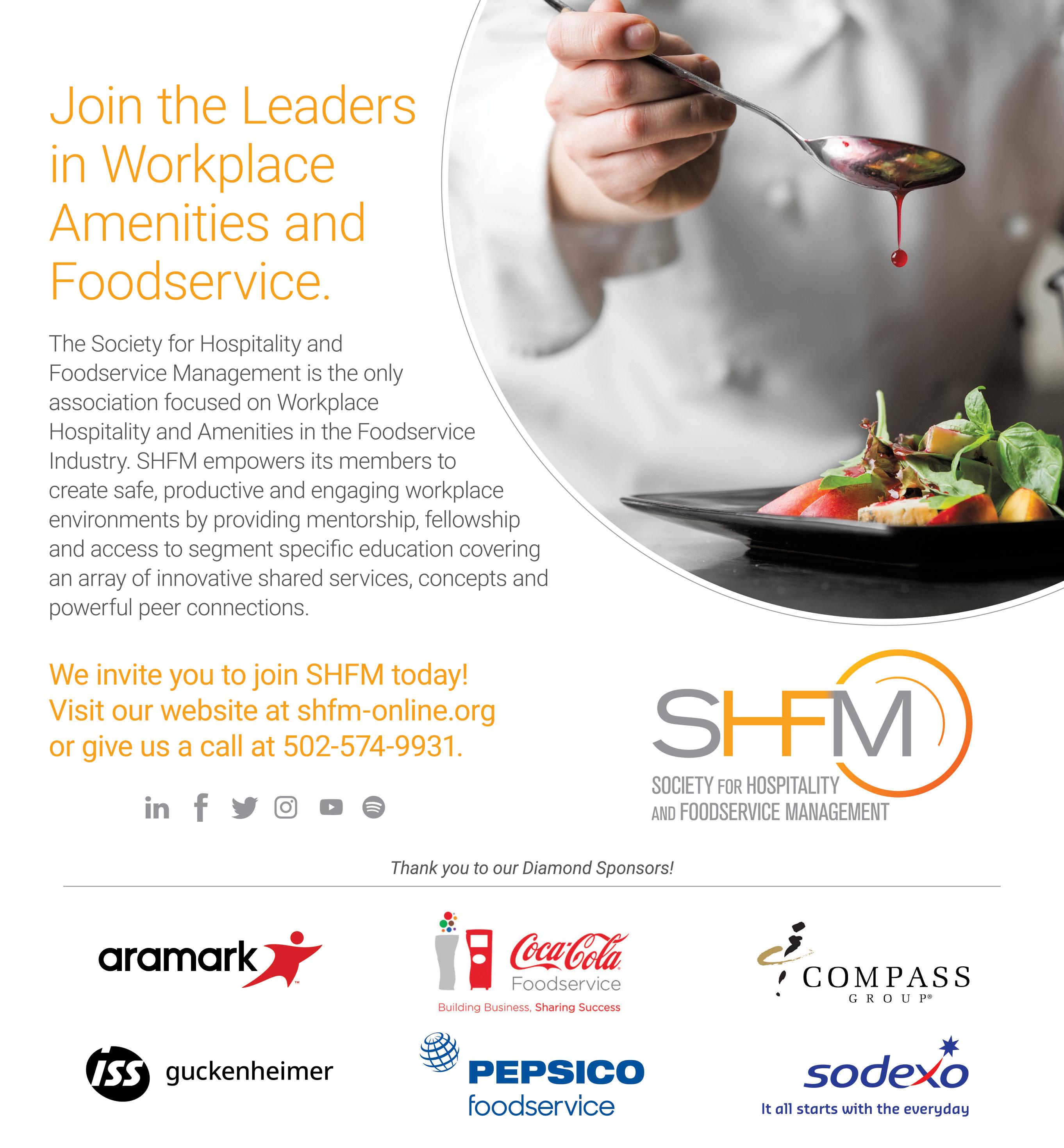



By Leith Steel, Senior Strategist & Head of Insights at Carbonate





By Leith Steel, Senior Strategist & Head of Insights at Carbonate

As we step into a new year, it's the perfect moment to pause, reflect, and look ahead with fresh eyes. Our 17th annual AF&Co./Carbonate Hospitality Trends Report explores the powerful cultural and social shifts reshaping the hospitality industry. From the rise of global flavors and the growing demand for non-alcoholic options, to the evolving ideas of what constitutes a "meal" or "snack," these trends are driven by deeper changes in consumer behavior and the way people engage with food, beverages, and experiences. The report is intended as a toolbox for inspiring creativity and actionable strategies to stay ahead of the curve, offering insights on how to capitalize on these trends to enhance relevance, boost sales, and build lasting connections with customers and guests. Shifts in how we consume and trust information, along with the broader macro trends influencing hospitality, will continue to shape the industry in 2025 and beyond.

Davant Bakery in Palisades Park, NJ, reinterpreted the kataifi filled Dubai Chocolate Bar as a cake. (image courtesy of bakery)
Have we reached peak pistachio? While pistachio has been gaining popularity for several years, the pistachio is popping up in everything from salads, to sandwiches, sauces, sides and sweets— and in every type of drink from coffee to cocktails. With its green hue and ability to skew salty or sweet it seems made for the Instagram age. It’s replacing the more traditional almond or hazelnut in pastries. It’s frequently paired with mortadella (one of our top trends from 2024) in sandwiches and on pizza. It plays a starring role in the Dubai Chocolate Bar with its pistachio based filling, and it is a staple in the new trending Yemeni coffee houses where it’s showcased in vibrant green pistachio lattes with an intensely rich nutty flavor.
Thanks to the viral popularity of the Dubai Chocolate Bar (a chocolate bar filled with crispy kataifi,a shredded filo dough, and pistachio paste)—where one video alone reached over 90 million

views, and four out of top five pistachiorelated Google search terms were in relation to the bar—we expect to see chefs reinterpreting its flavors in new and creative ways. Look for Dubai Chocolate inspired waffles, cupcakes, and ice cream sundaes in the coming year, and likely a Dubai Chocolate Mocha too.
This interest will likely also pave the way for other uses of kataifi where it can lend a pleasing “crunch” to other dishes. Keep your eyes peeled for knafeh, a traditional sweet and savory kataifi-based dessert that’s stuffed cheese and baked and topped with a sweet sugar syrup.
Martinis have been trending for ages, and the espresso martini isn’t going anywhere (yet), but “Freezer Martinis” are the variation du jour, popping up and named as such, on menus across the country. Rather than relying on other flavors, this trend is all about the temperature, serving the drink ice cold. Pre-

Two Hands, the international Australian all-day cafe offers the Banana Bread Espresso Martini with vodka, espresso, oat milk, crème de banane. (photo courtesy of Two Hands)
batched, and stored in freezing temperatures, Freezer Martinis can help make service snappy, and ensure a properly cold and well-blended classic cocktail every time.
as Container
After multiple croissant crazes, from the cronut, to the cruffin, the cube, spiral suprême, and even the improbable sphere, we’re now seeing croissants used as a container—an indulgent edible vehicle for other sweet or savory items. The croissant is adaptable; it can be a cup for hot chocolate, or a triangle for Japanesestyle stuffed onigiri. Always indulgent, it appeals to the American desire for overthe-top foods, while offering attentiongrabbing photographic appeal.
Far Eastern Convenient Store Fare
New QSR concepts across the country are replicating the instant ramen shops popular in Japan, South Korea, and Taiwan, where diners select their preferred
continued on page 102

Tilman Fertitta, renowned for his transformative impact on the restaurant and hospitality industry, has been named by President-elect Donald Trump as the next U.S. ambassador to Italy. Known as “the world’s richest restaurateur,” Fertitta’s vast empire spans more than 600 restaurants, casinos, and entertainment venues across the globe, including notable brands like Morton’s The Steakhouse, Bubba Gump Shrimp Co., and the Golden Nugget Casino.
Fertitta’s appointment marks a unique turn in the long-standing diplomatic tradition, blending business
“Tilman Fertitta’s entrepreneurial spirit and hospitality expertise have reshaped industries—now, they’ll shape U.S.-Italy relations.” — President-elect Donald J. Trump
acumen with cultural diplomacy. As Trump highlighted in his announcement, “Tilman is an accomplished businessman and a proud American who knows how to lead. His success speaks volumes, and I’m confident he will represent our country with the same drive and excellence that made him a legend in the hospitality world.”

Fertitta’s career is a testament to scaling success while maintaining personal engagement. As the CEO of Landry’s Inc., he not only expanded the company to include diverse dining concepts but also pioneered entertainment and gaming ventures. This included acquiring BR Guest Restaurants, which owns iconic establishments like Manhattan’s Keens Steakhouse, and seamlessly integrating them into his portfolio. Fertitta’s ability to adapt and innovate has been a hallmark of his business philosophy. “I always believed in creating experiences that people remember,” Fertitta once said. “Whether it’s dining at a worldclass restaurant or enjoying a night at the casino, it’s about delivering something extraordinary every time.”
Appointing a restaurateur as ambassador to Italy, a nation celebrated for its culinary and cultural heritage, is rich with symbolism. Fertitta’s Italian-American roots add another layer of connection. His ancestors immigrated from Sicily to Galveston, Texas, where they contributed to the vibrant cultural fabric of the Gulf Coast. “It’s an incredible honor to represent the United States in Italy,” Fertitta said. “As someone who’s spent a lifetime building bridges in the hospitality world, I’m thrilled at the opportunity to bring that same passion to strengthening U.S.-Italy relations. Trump also emphasized Fertitta’s philanthropic contributions. “Tilman has given back to communities across America, supporting children’s charities, law enforcement, and medical research. He’s a man of integrity and vision.”
Fertitta’s predecessor, Jack Markell, the former governor of Delaware, leaves behind a strong foundation of U.S.-Italy cooperation. During Markell’s tenure under the Biden administration, relations between the two nations focused on shared priorities such as addressing global challenges like climate change, navigating China’s Belt and Road Initiative, and





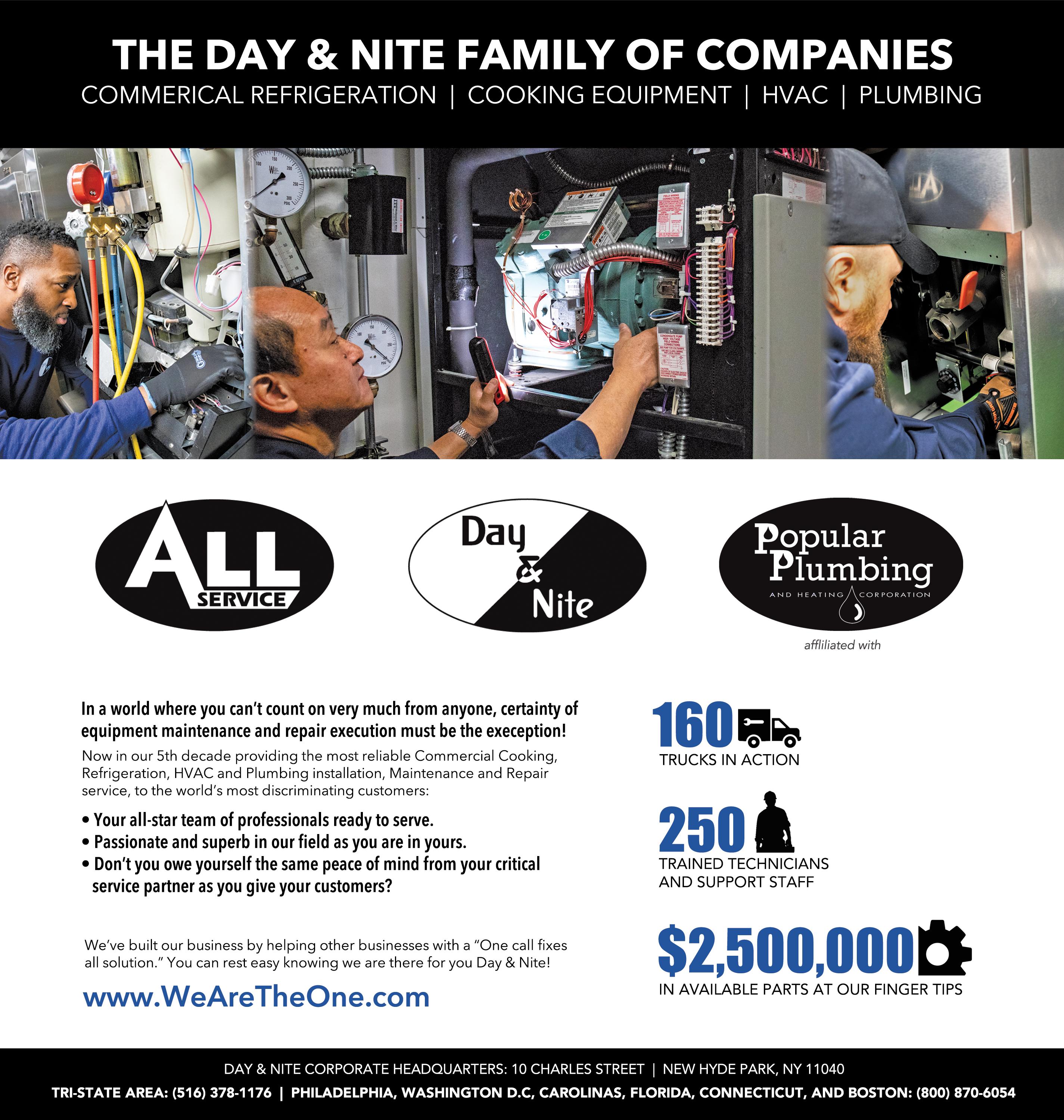
The revival of retro design in restaurants is more than a fleeting trend—it’s a response to the post-pandemic yearning for comfort, familiarity, and a touch of escapism. In my work with House of Form clients, I’ve seen firsthand how thoughtfully reimagining vintage aesthetics can transport diners, evoking fond memories while offering a fresh, contemporary dining experience. Let’s explore how you can leverage nostalgia to create a space that feels timeless and relevant.
The post-pandemic cultural shift has prompted diners to seek more than just a meal—they’re craving meaningful experiences. Nostalgia offers a sense of comfort and connection to simpler times. Vintage elements, whether glass blocks or velvet textures, invite patrons to escape the present and indulge in a
“Nostalgia delivers comfort, but it’s the balance with modernity that creates magic.”
story. A well-executed retro-inspired design turns a meal into an immersive, memorable event, one that draws guests back time and again.
One of the most common challenges in retro design is avoiding the trap of creating a “theme park” aesthetic. The key lies in balance. Pair era-specific details—like terrazzo flooring or lacquered wood—with modern materials and clean lines to ensure the space feels curated rather than kitschy.
For instance, in a recent project, The Rose Garden, we took the client’s initial concept and wove a playful fable about a peacock and a rose garden. This narra-
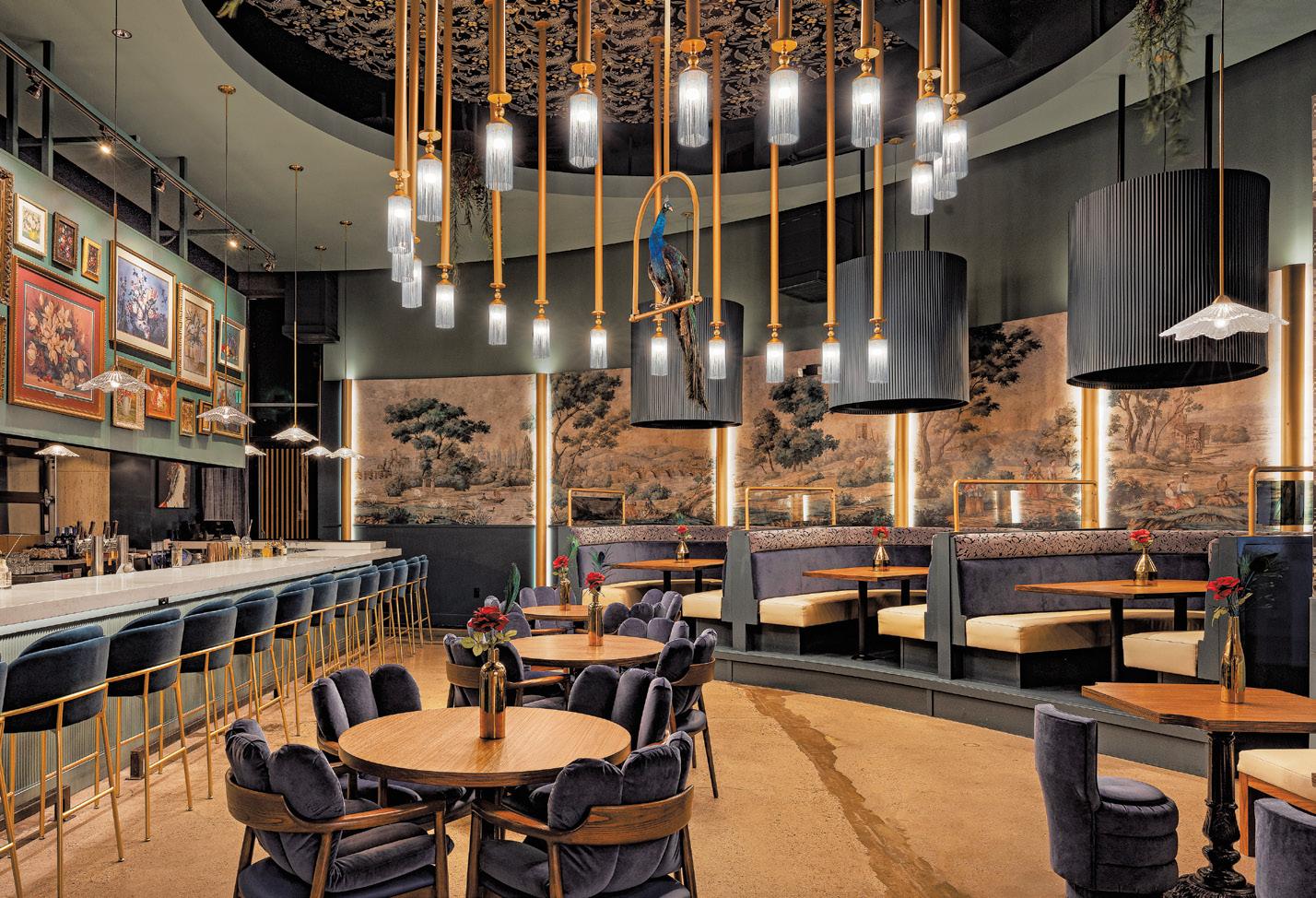
tive shaped the design, allowing us to introduce vintage elements such as brass finishes and mirrored accents without overwhelming the space. By keeping the storytelling subtle and cohesive, we crafted a setting where every design choice felt intentional.
Some vintage design elements stand out for their timeless appeal:
• Glass Blocks: Perfect for partitioning spaces while allowing light to flow, glass blocks are inherently retro yet can be framed in contemporary metals for a sleek update.
• Terrazzo Flooring: This classic material feels fresh when used in unex-

Dala Al-Fuwaires is the founder and principal designer of House of Form, a Scottsdale-based interior design studio specializing in hospitality spaces. With a passion for blending timeless aesthetics with contemporary innovation, Dala has transformed numerous restaurants and foodservice establishments into immersive, story-driven experiences. Her expertise lies in creating environments that evoke emotional connections, ensuring both visual appeal and functionality. Dala’s commitment to excellence and her collaborative approach have made her a trusted partner for restaurateurs across the country. Learn more at houseofform.com
pected ways, like custom table surfaces or even light fixtures.
• Brass Finishes: A subtle brass detail on countertops or fixtures adds warmth and depth, especially when paired with contrasting materials like concrete or chrome.
• Velvet Textures: Upholstered seating in jewel-toned velvets creates a sense of luxury without feeling overly formal. These elements, used thoughtfully and in moderation, ensure the design
continued on page 105
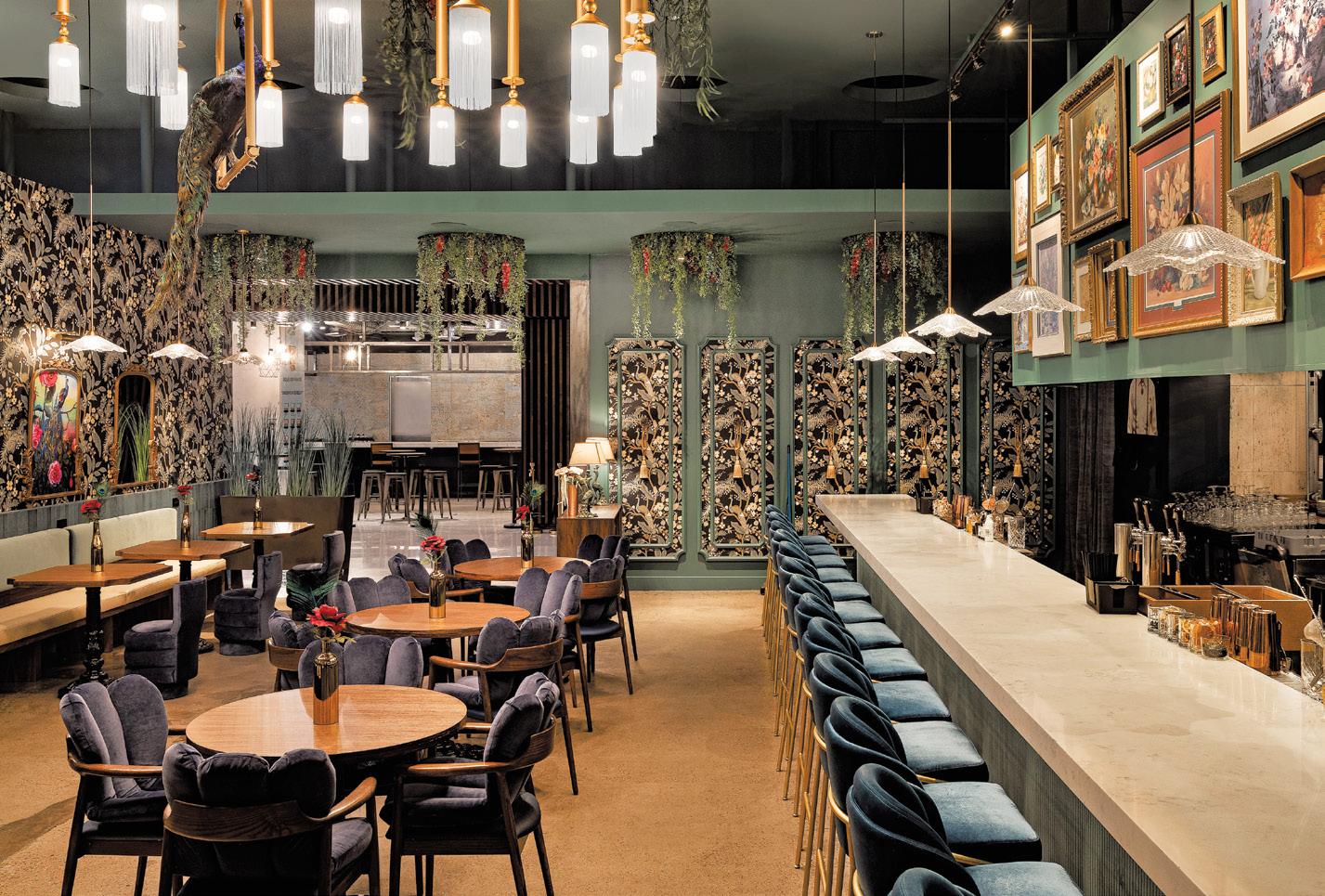

Connecticut’s restaurants took a break from competing with one another to honor the very best in the state’s thriving food and hospitality industry. The 2024 CRAZIES Awards, held last month at Foxwoods Resort Casino, brought together over 1,500 industry professionals for a night of celebration, recognition, and camaraderie. Organized by the Connecticut Restaurant Association (CRA), the event highlighted the contributions of 21 exceptional eateries and individuals.
Top honors went to Greenwich’s Bar Rosina as Connecticut’s Restaurant of the Year.“This gala serves as a reminder of the incredible talent, dedication, and passion that drives Connecticut’s restaurant industry,” said CRA President & CEO Scott Dolch. Nestled in the heart of Greenwich, Bar Rosina has quickly established itself as a culinary destination since its opening in 2021. Its combination of innovative Italian cuisine, an in-
“The CRAZIES once again showcased the exceptional talents our industry has to offer.” — Scott Dolch
viting atmosphere, and outstanding service earned it the coveted Restaurant of the Year award. Owners Jared Falco and Coby Blount expressed their gratitude to the CRA and their loyal patrons. “This recognition validates the hard work our team puts in every day,” said Falco.
The Restaurant of the Year honor was just one highlight in a night filled with notable wins. From Materia Ristorante in Bantam to The Port of Call in Mystic, the CRAZIES celebrated the finest establishments across all eight counties of Connecticut. The CRAZIES not only spotlighted restaurants but also recognized individuals who contribute to the state’s vibrant culinary landscape. Restaurateurs of the Year were Sam DeVel-

lis and Eli Hawli of Market Hospitality Group, operators of six distinct restaurant concepts.
Chef of the Year went to David Standridge of The Shipwright’s Daughter in Mystic, whose creative approach to coastal cuisine has garnered widespread acclaim. Additionally, Gioia Café & Bar in New Haven was named Restaurant Newcomer of the Year, while Abbott’s Lobster in the Rough and Red Rock Tavern earned induction into the Connecticut Hospitality Hall of Fame.
Dolch praised the honorees, stating, “Connecticut’s restaurant and hospitality industry continues to be a powerful economic engine, accounting for nearly 10% of all jobs in our state. Events like the
CRAZIES celebrate the achievements of our industry and inspire future innovation. The CRAZIES also emphasize community and collaboration. Awards like the Friend of the Industry, given to State Representative Kerry Wood, and the Lifetime Achievement Award, presented to Edward “Bud” F. O’Donnell Jr., highlight the broader impact of the industry on the state’s economy and culture. The energy at this year’s gala was palpable, with attendees sharing stories, exchanging ideas, and celebrating their shared passion for food and hospitality.
The CRA encourages restaurants, foodservice operators, and distributors to participate in future CRAZIES celebrations. Membership in the CRA offers numerous benefits, including advocacy, networking opportunities, and access to exclusive industry events. Every restaurant and foodservice professional in
continued on page 108
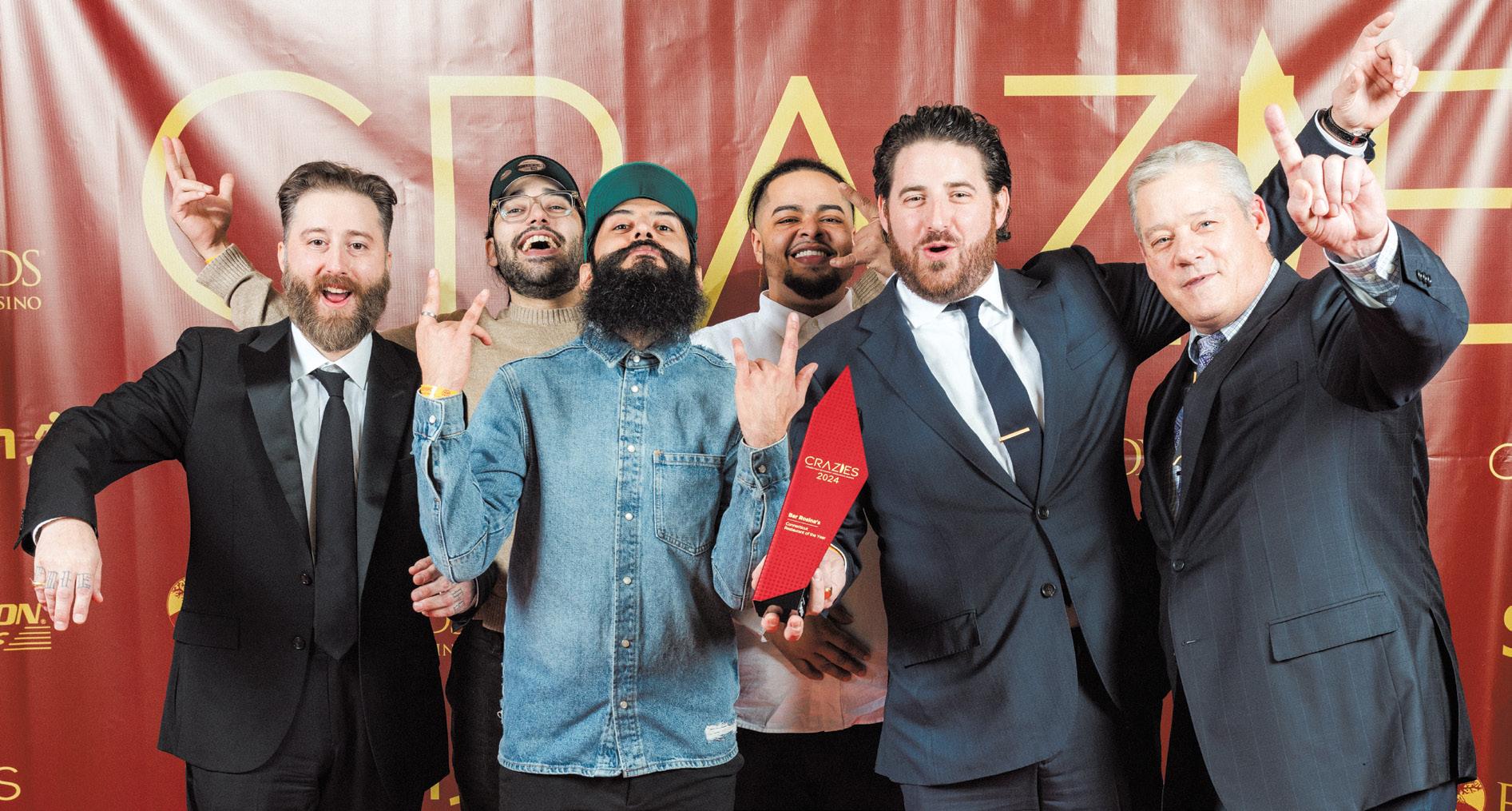

Attendees of the Specialty Food Association’s 2025 Winter Fancy Food Show will enjoy three productive days of product discovery and networking with industry leaders—but that’s not all.
The annual event is also a gateway to innovation, education, and connection for everyone who works in the specialty food space. This year’s program is designed to engage a diverse range of stakeholders, from emerging brands to seasoned industry veterans, and inspire attendees to think beyond the trade show floor to prepare themselves for a fruitful 2025.

and strengthen supply chains.
• Financing options for specialty food brands and insights into what investors and acquirers are looking for.
The Winter Fancy Food Show, taking place January 19-21, 2025, at the Las Vegas Convention Center West Hall, will offer a robust lineup of educational sessions tailored to meet the needs of all industry professionals. Whether a brand owner, investor, retailer, chef, or supplier, all attendees will find valuable insights and actionable strategies to grow their businesses.
Topics include:
• The implications of proposed tariffs and how brands can prepare for potential changes.
• Insights from buyers and executives at Pavilions and Albertsons on how specialty food brands fit into their retail ecosystems.
• Opportunities and challenges in the foodservice sector, including goto-market strategies.
• Leveraging AI to drive innovation
Following select sessions, attendees will have the option to participate in one-on-one or small group discussions with speakers, offering a unique opportunity for personalized learning and networking.
Exclusive educational content will also be available for members of the Specialty Food Association’s Maker Prep Program, with sessions focused on marketing, sales, and retail strategies. Registration for the 2025 cohort is now open.
The Winter Fancy Food Show wouldn’t be complete without appearances from some of the food and beverage industry’s brightest stars. Sunday’s program features James Beard Award-winning chef Scott Conant, known for his global culinary explorations and enduring passion for food. Conant will share insights from
his decades-long career, offering an inspiring look at how he balances artistry and a laid-back attitude (#PeaceLovePasta) to create lasting success.
On Monday, attendees can hear from Molly Baz, cookbook author, social media influencer, and co-founder of Ayoh! Foods. In a conversation with TASTE Editor-in-Chief Matt Rodbard, Baz will discuss her journey into the world of consumer-packaged goods, her approach to product innovation, and her plans to grow her new condiment brand.
Some of the most meaningful connections at the Fancy Food Shows happen outside the bustling aisles. At the Winter 2025 show the Spark Showcase area will host dynamic programming designed to foster organic interactions. Highlights include Sunday’s Further Female Founder Lounge, where members of Startup CPG’s female founder initiative will participate in public pitching sessions, panel discussions, and a networking mixer.
The Specialty Food Association is also collaborating with organizations like Project Potluck and the Queer Food Foundation to host invite-only networking events. These gatherings will seek to bring together stakeholders and community members to shape a more inclusive and supportive future for the food industry.
To thrive in today’s rapidly evolving food industry, understanding the global culinary and business landscape is essential. The 2025 Winter Fancy Food Show will deliver a rich international experience, featuring exhibitors from countries such as Japan, Canada, Greece, and Pakistan.
Italy, SFA’s 2025 Partner Country, will take center stage with a dedicated pavilion hosted by Universal Marketing. Over the three-day event, attendees can explore Italy’s latest food innovations, engage with key decision-makers, and immerse themselves in the flavors and trends that make Italian cuisine a global powerhouse.
Whether you’re seeking inspiration, education, or meaningful connections, the 2025 Winter Fancy Food Show offers something for everyone. Register today at https://www. specialtyfood.com/fancy-foodshows/winter/register/ to get a first look at the products, trends, and ideas that will shape the food industry in the years to come.
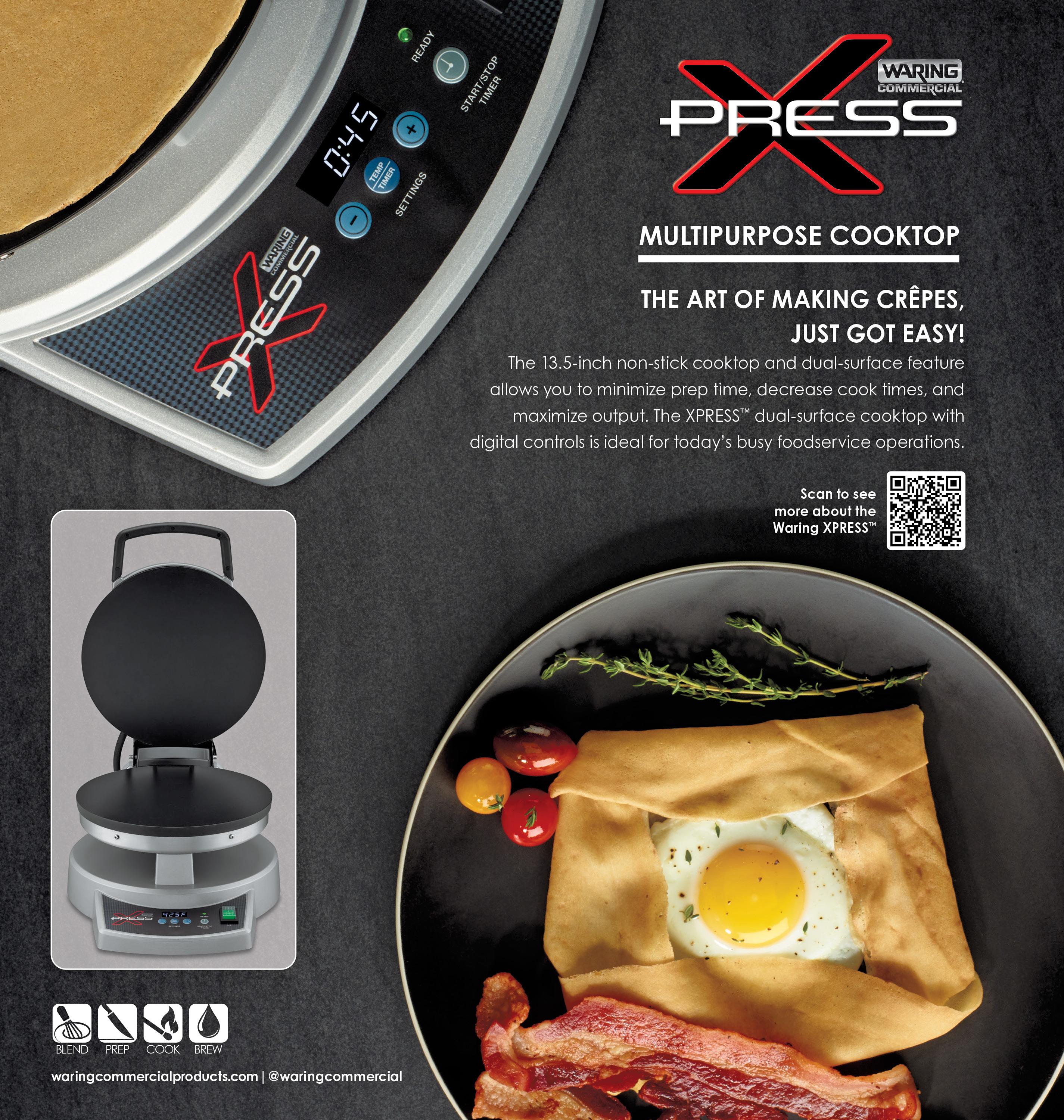
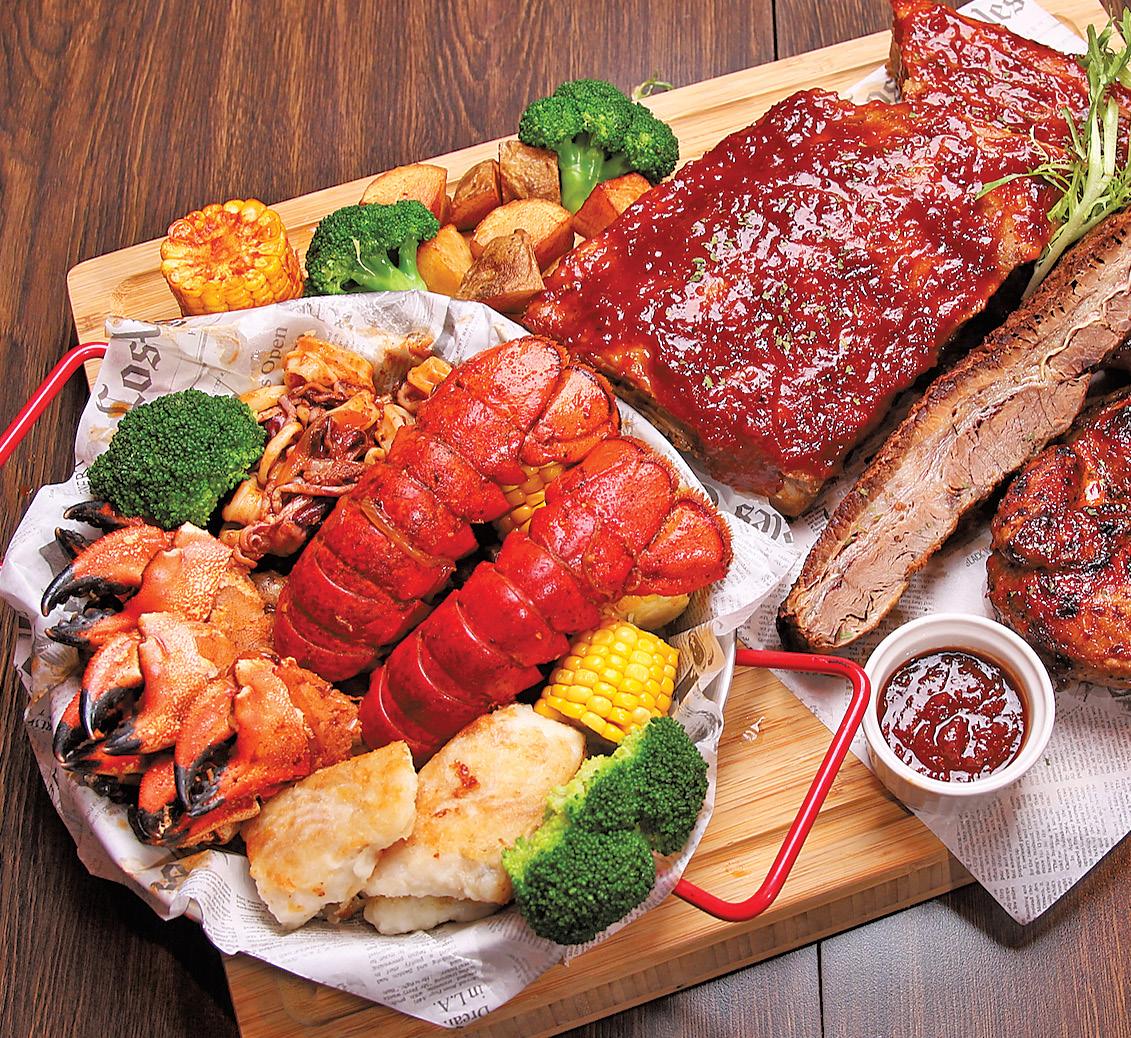
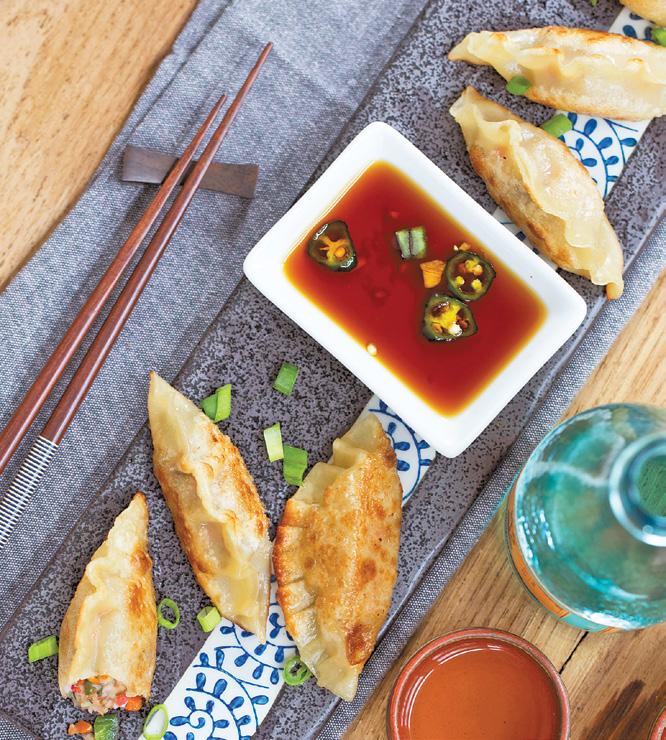
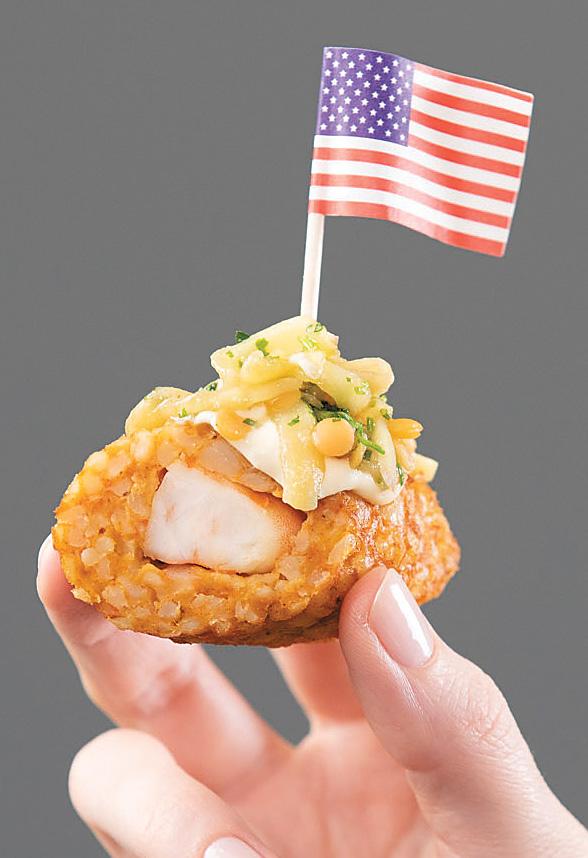

Food Export helps U.S. suppliers in its 23 member states export their goods internationally through a multi-disciplinary approach. Learn about Food Export’s programs and services with its digital Program Booklet, designed to give you an in-depth overview of our diverse programs and services. Suppliers can easily download individual pages for convenient sharing. This resource will further empower both new and established suppliers to explore international market opportunities and drive long-term growth.
The international HORECA sector encompasses the Hospitality, Restaurant, and Catering industries. This industry plays a pivotal role in the global economy, incorporating hotels, dining establishments, and catering services, all requiring a diverse range of products and services.
The HORECA sector consistently needs high-quality, desirable food and beverage products. Consistent demand provides vast opportunities for exporters to introduce new commodities that can enhance the quality and experience of hospitality services. The sector spans across multiple areas, from luxury hotels and fine dining restaurants to ca-
sual eateries and catering services. This diversity allows businesses to explore various niches and tailor their offerings to specific segments, increasing their chances of success. Each segment has its unique requirements and opportunities, allowing for a broad range of products and services to be introduced. Engaging with the HORECA industry offers businesses the opportunity to expand their international footprint. This sector’s global nature means that successful products and services can be scaled to various markets worldwide.
The HORECA sector is also often at the forefront of innovation in foodservice and hospitality. Businesses that export to this sector can benefit from exposure to new trends, which can drive further growth and development. Staying ahead of trends in sustainability, health and wellness, and technology can position businesses as leaders in the market.
Conduct comprehensive market research to understand the demands and trends within the HORECA sector. Utilize resources like Food Export’s Market Entry programs to gain insights into different markets and consumer
preferences. Analyzing competitors and understanding local regulations are crucial steps in preparing your business for export.
Ensure your products meet international standards and regulations. Compliance with health and safety standards is paramount. Food Export’s Branded Program can assist with marketing strategies and ensure your products align with the necessary quality standards. This Program helps U.S. suppliers with funding for marketing and promoting their products internationally, which can be essential for building a brand presence in new markets.
Establish strong connections with key industry players through Focused Trade Missions, Buyers Missions, and industry events. Food Export offers Focused Trade Missions to facilitate these connections, providing opportunities to meet potential buyers and distributors in target markets. Building relationships with local partners can provide valuable insights and help navigate market entry barriers.
Adaptability:
Be prepared to customize your products and services to meet different regions’ specific needs and preferences. Cultural differences can impact food preferences, dining habits, and service expectations. Being flexible and responsive to these variations can enhance your competitiveness in the HORECA sector. Adaptability also includes being aware of and responding to trends such as sustainability and health consciousness, which are increasingly important to consumers worldwide.
Marketing and Promotion:
Effective marketing is essential for breaking into the HORECA sector. Utilize digital marketing, participate in trade shows, and consider collaborations with local influencers to increase brand awareness. Food Export’s marketing services, including the Branded Program, provide tools and funding to help promote your products effectively in international markets.
The HORECA sector thrives with various exports catering to its diverse needs. Here are some examples of products that are currently performing well:
continued on page 105
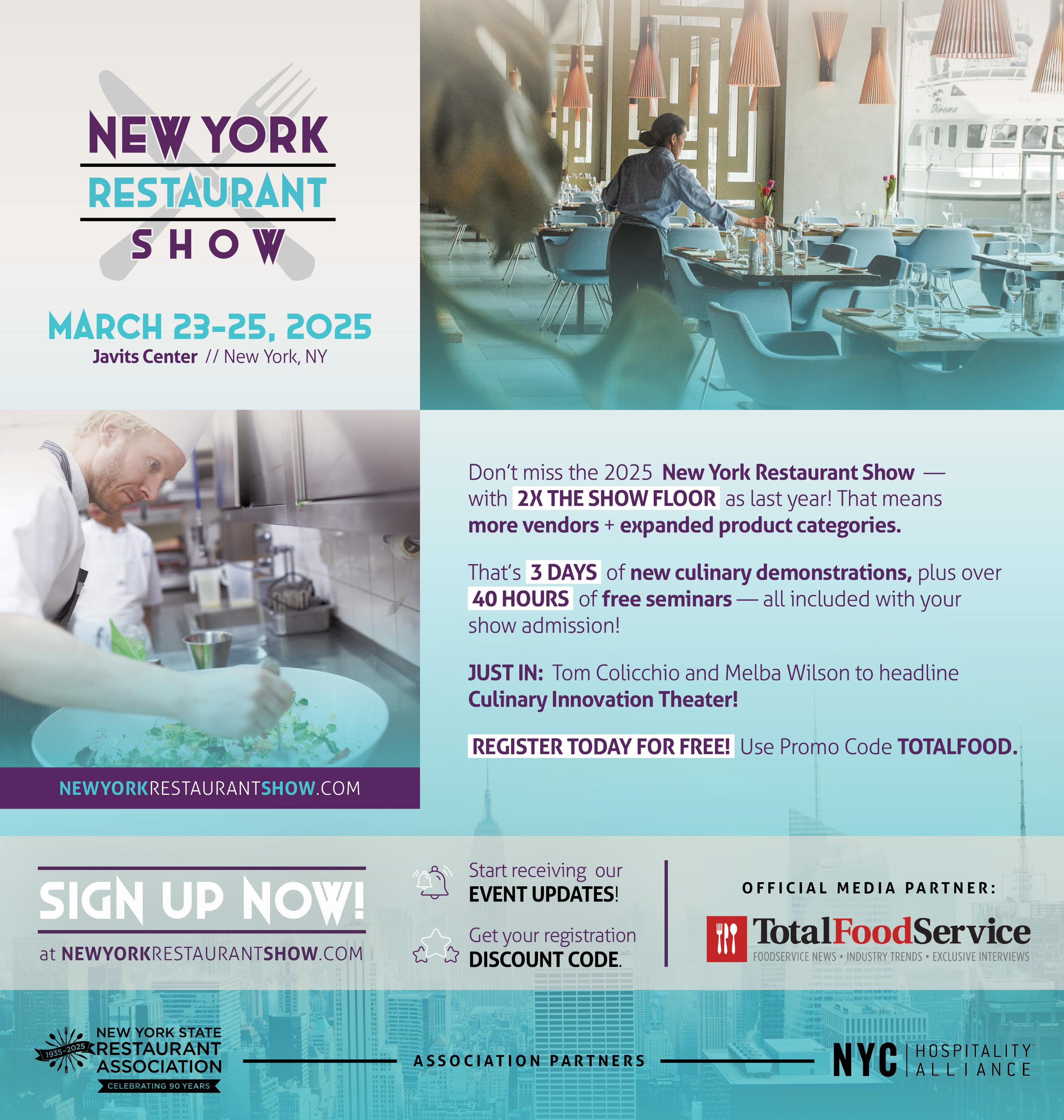
As the restaurant and foodservice industry enters 2025, labor challenges remain a critical issue. Staffing shortages, escalating labor costs, and higher turnover rates have forced operators to rethink their approach to kitchen efficiency. At the forefront of these solutions is combi cooking technology, which provides the flexibility and automation needed to thrive with smaller kitchen teams.
However, not all combi ovens are created equal. Choosing the right technology can make or break a restaurant’s ability to overcome labor challenges and maximize the efficiency of menu food costs. Blodgett’s Invoq combi ovens, designed with input from six global brands and led by experts like Ronald van Bakergem, Executive Director of Combi Sales, are leading the way in delivering innovative, user-friendly solutions tailored to today’s kitchen needs.
Labor shortages have been a pressing issue for years, but the pandemic exacerbated the problem. Many operators now face the reality of running leaner teams, which requires a shift in how kitchens are designed and managed. “Operators are looking for equipment that not only cooks but also simplifies operations,” said Ronald van Bakergem. “Combi ovens, with their ability to handle multiple cooking methods in one unit, are the perfect fit for this challenge.”
Invoq Combi ovens can cook, bake, steam, roast, fry, braise, stew, reheat and sous vide cook—all within a single

unit. This reduces the need for traditional steamers & convection ovens and minimizes the need for highly skilled labor. Yet not all combi ovens are up to the task of meeting the diverse demands of modern kitchens. Blodgett’s Invoq combi ovens stand out because of their adaptability and ease of use. “One of the biggest complaints we hear is that combi ovens can be overly complex to operate, which adds stress to already overburdened kitchen teams,” van Bakergem explained.
“We designed Invoq with simplicity in mind, so even operators with minimal training can achieve consistent results.”
“With advanced features and unparalleled flexibility, Invoq is more than a combi oven—it’s a game-changing staffing solution.” — Ronald van Bakergem
A key feature is the Invoq’s SmartChef, an automatic feature for intelligent cooking that allows chefs to see, follow and learn from the oven, to develop their own recipes. Select the type of food, desired cooking method and core temperature. Press start and the oven will guide you step by step through the process for a perfect result. SmartChef offers a secure and user-friendly experience, promoting learning and skill development at the same time. Another standout feature is the multi-rack tray system, which accommodates various tray sizes simultaneously. “This maximizes throughput, even in smaller models,” van Bakergem noted. “Operators can do more with less, making it an ideal solution for kitchens with limited space or budget.”
Blodgett’s Invoq ovens also feature CombiSteam and HybridSteam technologies, offering precision in steam generation. “Steam plays a crucial role in preserving the natural texture and
flavor of food,” said van Bakergem. “Our combi ovens use cutting-edge steam injection systems to create perfect cooking environments with minimal energy and water consumption.”
For operators seeking even greater flexibility, HybridSteam adds a water reservoir to generate high-density steam, allowing for fine-tuned control. This combination of technologies ensures the best possible results across a wide range of dishes, from delicate pastries to robust proteins.
In today’s kitchens, sustainability isn’t just a buzzword—it’s a necessity. The Invoq combi oven delivers significant energy and water savings compared to previous models. “In convection mode, the Invoq uses 19% less energy per running hour,” van Bakergem shared. “In steam mode, it reduces energy use by 70% compared to its predecessor, thanks to improved steam saturation and advanced sensors.” These features not only lower operational costs but also align with growing consumer demand for environmentally responsible practices.
Another labor-saving feature is Invoq’s CareCycle cleaning system, which uses phosphate-free cleaning tablets to reduce chemical costs by 50%. “Chefs love that the cleaning cycle can be activated while the oven is still hot,” said van Bakergem. “This minimizes downtime and gets the oven back in service faster.” With multiple cleaning cycles to choose from, including a 15-minute turbo setting, CareCycle ensures that kitchens can maintain hygiene standards without disrupting operations.
Blodgett has also prioritized ease of use with a smartphone-like touch intercontinued on page 116

Golden Tiger is answering the call for fusion flavors with three new heat-andserve potstickers.
Inspired by consumers’ love for Asian/American fusion dishes, many top U.S. restaurant chains are offering appetizers and desserts using flavors and ingredients from both cultures.* Especially popular are bites that are shareable, quick and easy to prep, and filled with premium ingredients.
Golden Tiger’s new potstickers fit the bill, offering easy back-of-house preparation, a long hold time for takeout and delivery, and gourmet ingredients that are flash frozen to lock in flavor.
The new Apple Pie Potsticker is filled with sweet diced apples seasoned with cinnamon and sugar, tapping into nostalgic flavors that are favorites for 57% of consumers, including 62% of Gen Z.*
Found on 24.4% of menus, the apple pie profile is ideal for satisfying the craving for this classic flavor in modern foods and beverages, like apple pie cream or apple pie cocktails. Desserts as snacks are gaining in popularity as well, with more consumers saying they enjoy grab-and-go sweets to brighten up their work day.*
Golden Tiger’s Apple Pie Potstickers are great when served as-is as a simple appetizer, dressed up with sweet and smoky bacon jam, or topped with a bourbon caramel sauce and ice cream for a decadent dessert.
Additional recipe ideas include:
• Vanilla Ice Cream Apple Crisp: Crispy oat streusel served with vanilla ice cream, fresh apple slices and crispy, fried Golden Tiger Apple Pie Potstickers tossed in cinnamon sugar and drizzled

with salted caramel sauce.
• Apple Pie Potstickers Over Autumn Hash: Apple Pie Potstickers are panseared and served over a bed of hash made with prosciutto and butternut squash and topped with a fried egg.
• Apple Pie Potstickers with Brussels Sprout Salad: Fried Apple Pie Potstickers served over a Brussels sprout salad with feta cheese, pomegranate seeds, bacon, and red onion, finished with a lemon poppy seed vinaigrette.
Southwest Style Chicken Potsticker
Golden Tiger’s new Southwest Style Chicken Potstickers are filled with the highest quality spinach, pepper jack cheese, cooked chicken breast, corn, red bell pepper, and black beans that are seasoned Southwestern-style. They’re made with a durable wrapper that offers a crispy texture when deep-fried. Southwest chicken is on 3.4% of U.S. menus, up 4% over the past year.*
Simply heat and serve as a grab-andgo item, or pair with salads, soups, or
fried rice. Additional recipe ideas include:
• Mini Chimi Potsticker Suizos: Golden Tiger Southwest Style Chicken Potstickers are baked in enchilada sauce and topped with shredded cheese and cilantro.
• Southwestern Queso Fundido Potstickers: Queso fundido topped with chorizo, served with fried Southwest Style Chicken Potstickers, and garnished with cilantro.
• Mole Southwest Chicken Potstickers: Southwest Style Chicken Potstickers are fried and served over a sweet and savory mole sauce, drizzled with lime crema, and garnished with toasted pepitas and cotija cheese.
• Southwest Chicken Potstickers with Frontier Ranch: Southwest Style Chicken Potstickers are served with a zesty frontier ranch sauce made with fresh jalapeños, smoky chipotle peppers, and cilantro.
• Southwest Chicken Potstickers with Guasacaca: Southwest Style Chicken
Potstickers served with a creamy sauce made with avocado, onion, bell pepper, jalapeño, garlic, lime juice, white vinegar, olive oil, parsley, and cilantro.
The new Kimchi Chicken Potsticker is filled with a delectable combination of tender chicken, crisp cabbage, and zesty kimchi (on 4.9% of menus and up 2% over the past year*), accented by fresh green onions and a touch of bold gochujang sauce. Encased in a unique, crispy red chile wheat wrapper, these potstickers are as visually appealing as they are delicious. Simply heat and serve, or easily elevate it to gourmet status with the following recipes:
• Korean Potsticker Stir Fry: A stir fry made with Kimchi Chicken Potstickers, sliced peppers, onion, carrots, green onion, and a spicy gochujang sauce.
• Korean Fried Chicken Potsticker: Deep fried Kimchi Chicken Potstickers tossed in sweet chili sauce and garnished with sesame seeds and scallions.
• Kimchi Potsticker Bibimbap: Kimchi Chicken Potstickers are served atop fragrant rice with beef bulgogi, sautéed spinach, and mushrooms, garnished with pickled daikon, bean sprouts, and scallions, and topped with a fried egg.
For ready-to-eat appetizers and desserts that offer consumers the East meets West fusion flavors they crave, look no further than Golden Tiger Potstickers.
Ajinomoto Foods North America is your source for great global food, delivering flavor without the labor in appetizers, handhelds, sides, and entrées. Find online tools, websites, social media, apps, and more at AjinomotoFoodservice.com.
*Datassential

What plant-based trends are set to flourish in 2025? To answer this, I conducted an in-depth exploration of expert predictions and industry insights. The results revealed a treasure trove of information, from which I’ve curated the most relevant and actionable trends for Total Food Service readers and followers.
As we enter the new year, several plant-based trends are poised to redefine the culinary landscape, fueled by consumer preferences and industry innovations. But first, let’s consider the broader context.
The 2025 Dietary Guidelines Advisory Committee has made recommendations to promote healthier eating habits, emphasizing an increased focus on plant-based foods. These guidelines underscore the growing popularity of plant-based diets, highlighting their dual benefits for health and the environment.
The committee emphasizes beans, peas, and lentils as essential plant-based protein sources, noting their lower saturated fat content compared to red and processed meats. Rich in fiber, these foods support improved health outcomes and reduce the risk of chronic diseases. The guidelines propose grouping these alongside other protein-rich foods such as nuts, seeds, soy products, and even traditional proteins, reflecting

their nutritional value.
Research further links plant-based diets to reduced risks of heart disease, diabetes, obesity, and certain cancers. Additionally, these diets provide environmental benefits by minimizing reliance on animal-based products.
The National Restaurant Association’s (NRA) 2025 What's Hot Culinary Forecast highlights key plant-based trends, notably: Functional mushrooms, celebrated for their health benefits, are taking center stage in dishes ranging from pasta to coffee and desserts. Fermented and pickled foods that include items like kimchi and pickled vegetables are gain-

Cherry Dumaual is a seasoned contributing writer for Total Food Service, bringing years of experience in culinary communications to her role. As the former Partnerships Director at The Monday Campaigns/Meatless Monday, she was responsible for spearheading the PR and partnership development for Monday initiatives, including Meatless Monday. During her tenure, she successfully forged partnerships with renowned organizations, such as C-CAP (Careers for Culinary Arts Program), the American Institute of Cancer Research, and New Jersey Healthy Kids Initiative. Prior to joining TMC, Cherry held the position of Senior Vice President at leading PR agencies, where she worked with major food and healthcare clients. Her passion for learning and cooking international cuisines has led her and her husband to explore local food markets and restaurants in over 50 countries. This firsthand experience has allowed her to gain a deep understanding of different cultures and cuisines, which she brings to her work in the food industry.
ing popularity for their tangy, bold flavors.
continued on page 108

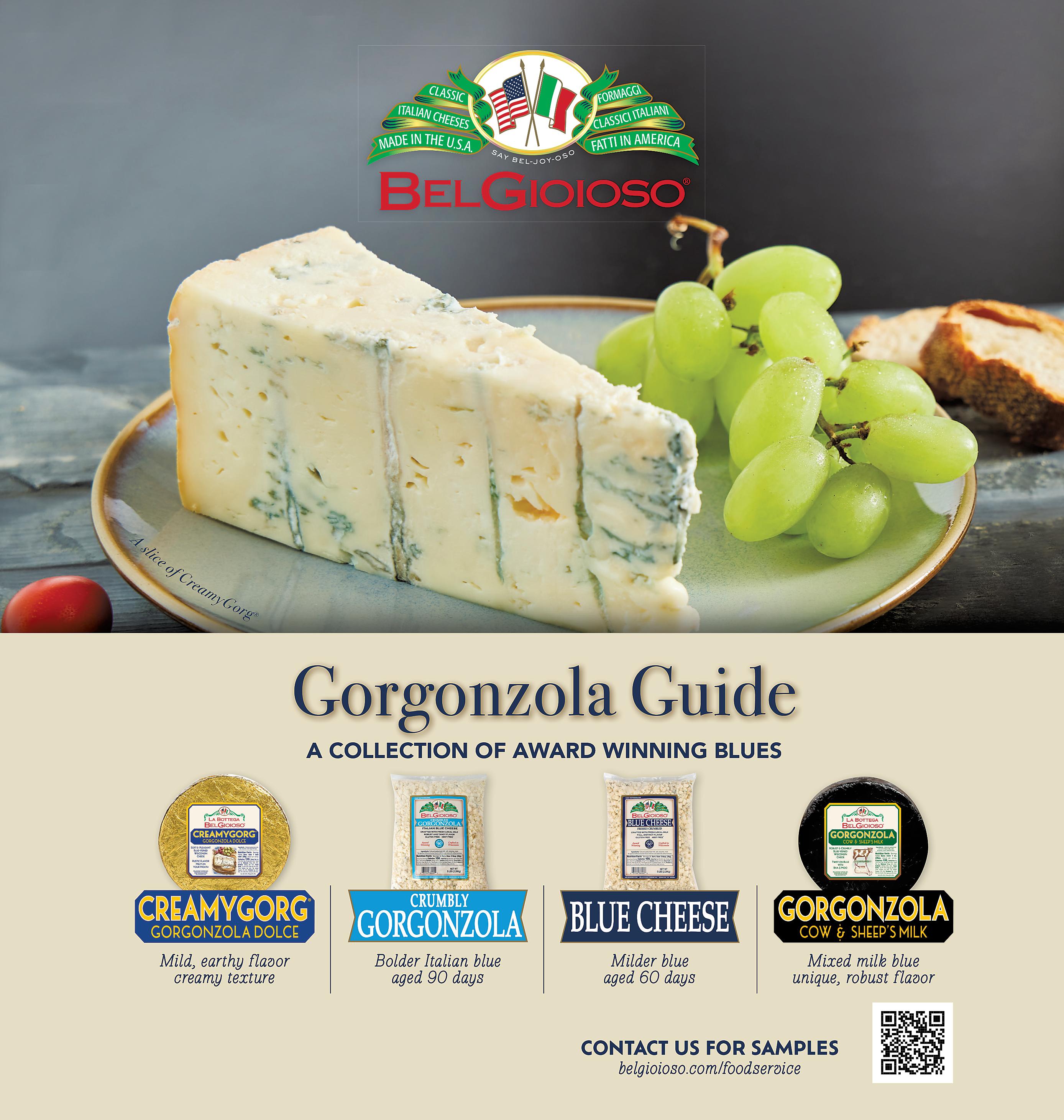
In the fast-paced world of foodservice, staying ahead means constant evolution. For decades, Hoshizaki has been at the forefront of this principle, solidifying its reputation as a global leader in commercial ice and refrigeration equipment. By making strategic changes and responding to market demands, Hoshizaki ensures its customers receive innovative products and unmatched service.
“Adapting to the needs of our customers has always been at the core of our success,” said Scott Meyer, Vice President of Sales at Hoshizaki America. “We continually evaluate our strategies, products, and services to maintain our position as a market leader.”
Founded in 1947, Hoshizaki has built a name synonymous with quality and reliability. From ice machines to refrigeration units, the company has delivered groundbreaking products that meet the demands of foodservice professionals worldwide. Hoshizaki America, headquartered in Peachtree City, Georgia, operates with a vision to combine cutting-edge technology with customerfirst practices.

“By bringing CMI into the fold, Hoshizaki can better serve its partners with faster delivery times and improved customer support.” — Allan Dziwoki
This commitment to innovation has been recognized repeatedly, including multiple ENERGY STAR® Partner of the Year – Sustained Excellence awards for energy efficiency. However, accolades alone are not enough. The company thrives on anticipating the needs of its clients and continuously refining its processes to deliver better results.
Hoshizaki America recently implemented several changes to strengthen its market position and improve customer service. These moves included key leadership promotions and the acquisition of Cannon Marketing, a longstanding distributor in the Southeastern United States.
The recent leadership changes highlight Hoshizaki’s focus on strategic growth and market expansion.
Anthony Ramkissoon was promoted to the newly created position of Direc-

tor of Sales, Medical & Scientific. With 26 years of experience at Hoshizaki, Anthony has developed an unparalleled understanding of the highly regulated medical and scientific markets. His ability to build strong relationships with decision-makers and deliver tailored solutions has been a key factor in his success. “Anthony’s expertise in these specialized markets will allow us to expand into new areas and reinforce Hoshizaki’s leadership in ice and refrigeration,” said Meyer.
Steve Wright was promoted to Director of Strategic Dealers after excelling as Manager of Strategic Dealers. Over the past three years, Steve has demonstrated a remarkable ability to foster strong customer relationships and optimize program performance. His innovative approach and commitment to driving growth make him an ideal leader for Hoshizaki’s dealer initiatives. “Steve’s

deep industry knowledge and passion for customer success have been instrumental in strengthening our partnerships,” Meyer noted.
With over 28 years of experience, Kelly Marincik has been promoted to Senior Director of Strategic Sales. In her previous role as Director of Strategic Accounts Management, Kelly distinguished herself by building lasting relationships with key national accounts. Her proactive approach and holistic strategic planning have been crucial to Hoshizaki’s success in growing its business. “Kelly’s dedication to understanding her clients’ needs and delivering results sets the stage for continued growth,” Meyer said.
At the Hoshizaki Alliance, Jim Kuo was appointed Senior Vice President of Operations Excellence for the Americas Region. A 26-year veteran of Hoshizaki, Jim has a proven track record of driving operational improvements. His new role will involve overseeing efficiency initiatives across all Hoshizaki Alliance factories. “Jim’s operational expertise will further our commitment to delivering
continued on page 104


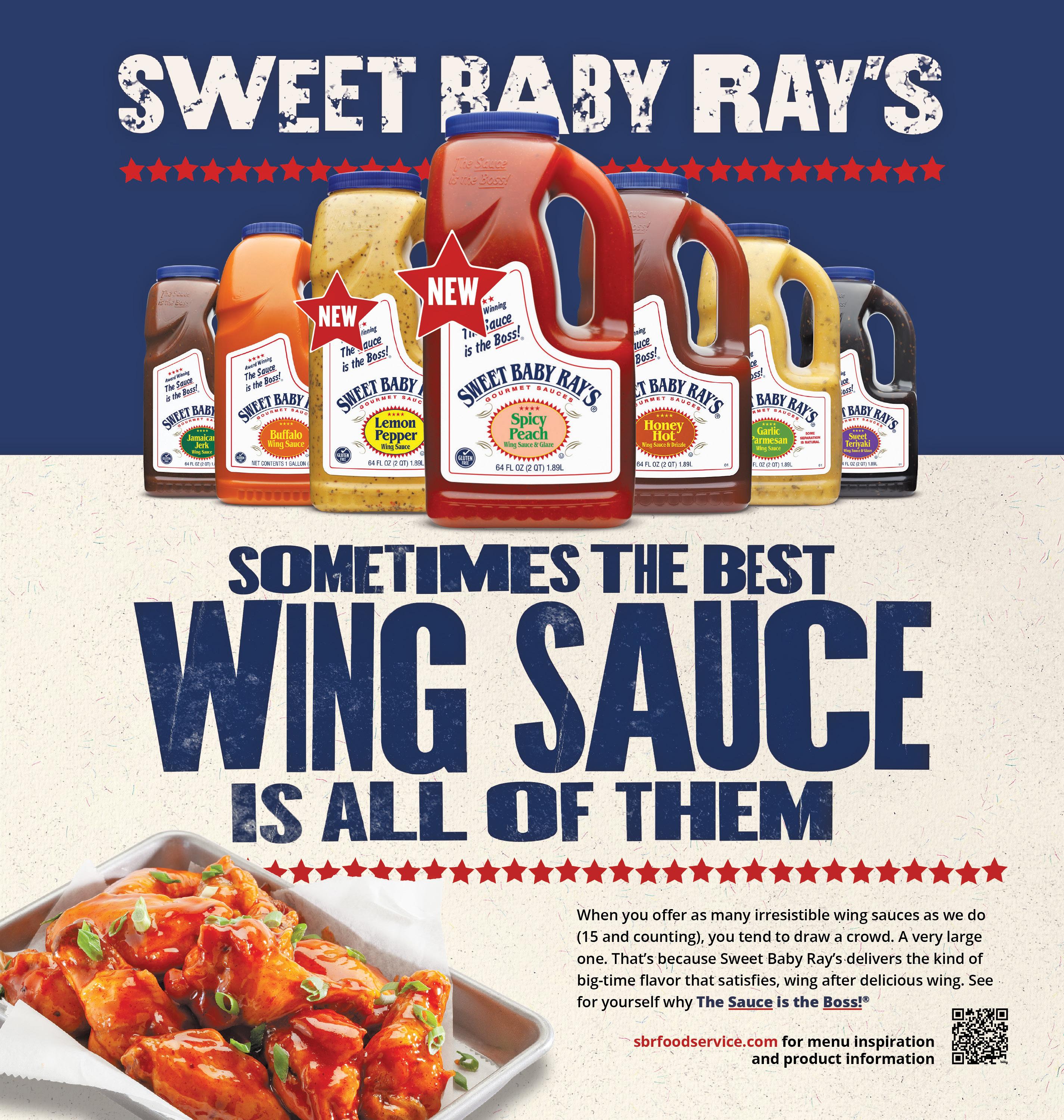
Ever wonder how you can become the go-to place where everyone wants to work? From streamlining systems and enhancing training to boosting morale and maintaining a great physical environment, these essential steps will attract top talent and build a motivated, committed team. Follow these strategies to improve your work environment and elevate your restaurant’s reputation and profitability.
Why aim to be an employer of choice?
It’s not just a niceto-have; it’s a strategic necessity. When your restaurant is known for treating its employees well, you attract top talent and reduce turnover. Think about it: less turnover means lower costs and fewer disruptions. Plus, a positive reputation as an employer leads to a motivated and stable team. Happy employees are more productive and committed, which enhances customer service and boosts your restaurant’s reputation and profitability.
Here are the steps to take to begin your journey toward being
Follow these strategies to improve your work environment and elevate your restaurant’s reputation and profitability.
the restaurant where everyone wants to work.
Streamlining your systems for success
Efficient systems are the backbone of any successful restaurant. They improve daily operations and reduce
chaos and stress. When your team knows what to do and how to do it without constant confusion, they can focus on delivering excellent service. Technology plays a crucial role here. From scheduling software to POS systems, tech can significantly reduce the daily pressures your team faces,

David Scott Peters is an author, speaker, restaurant expert and coach who coaches restaurant operators how to stop being prisoners of their businesses and to finally achieve financial freedom. His first book, Restaurant Prosperity Formula: What Successful Restaurateurs Do, teaches the systems and traits restaurant owners must develop to run a profitable restaurant. Thousands of restaurants have worked with Peters to transform their businesses. Get his free 30-minute training video http://www.davidscottpeters.com.
making their workday smoother and enhancing job satisfaction.
The physical appearance of your restaurant is more than just aesthetics. A clean, inviting space makes a strong first impression on potential hires and boosts employee morale. Regular maintenance and quick fixes show your team that you care about the workspace, which can significantly improve morale and make your restaurant a preferred employer.

The power of training
Training is more than just a formality; it’s a critical investment in your team’s growth and satisfaction. Effective training programs prepare your team to meet the demands of their roles and show them that you’re willing to invest in their personal and professional growth. Comprehensive training that covers practical skills and soft skills like customer service and teamwork
continued on page 112

Restaurant workers face a wide range of potential risks that can lead to common injuries, resulting in lost work time and costly workers' compensation (WC) claims for employers. With the industry's fast-paced environment and the frequent use of sharp objects, hot surfaces, and heavy machinery, injuries are a significant concern.
In 2024, cuts, punctures, and scrapes remain some of the most commonly reported injuries in the restaurant industry, comprising about one-third of all WC claims. With the increasing use of advanced kitchen tools and automated food preparation equipment, the potential for injury persists despite improved
safety measures. Ensuring that employees are adequately trained in the use of new technologies and that safety protocols are rigorously followed is crucial in minimizing these types of injuries.
While cuts and similar injuries are frequent, a recent industry study in 2024 highlighted that slips, trips, and falls (STFs) continue to be the most costly and time-consuming injuries. STFs account for approximately 4.7 times more in paid losses compared to other common injuries and require over twice as many days for employees to return to work. This significant impact is largely due to the severity of these injuries, which can include fractures, sprains, and head injuries.

The increased focus on ergonomics and the adoption of slip-resistant flooring materials have helped reduce the incidence of STFs, but the risk remains substantial. As the restaurant industry evolves, with more open kitchen designs and the integration of automated service technologies, maintaining rigorous safety standards is essential to prevent these costly accidents.
For restaurateurs with high-deductible insurance programs, the direct costs associated with workplace injuries are immediately felt when they pay for the loss. In 2024, the financial burden of workers' compensation claims has increased, partly due to inflation and the rising costs of medical care. As a result, it is more important than ever for restaurant owners to invest in preventive measures and employee training programs to mitigate these risks.
To address these challenges, many restaurants in 2024 are adopting comprehensive safety programs that include regular training sessions, routine safety audits, and the implementation of advanced technologies designed to reduce injury risks. Wearable devices that monitor employee posture and movement are becoming more common, helping to identify and correct behaviors that could lead to STFs or other injuries.
Additionally, the integration of AI and machine learning in safety management systems allows for real-time monitoring and predictive analytics, enabling restaurant managers to identify potential hazards before they result in injuries.

a leading global insurance brokerage, where he specializes in providing insurance services to the restaurant industry. As a 25+ year veteran and former restaurateur himself, Robert has worked with a wide array of restaurant and food service businesses, ranging from fast-food chains to upscale, “white tablecloth” dining establishments. Robert can be reached at 212-3382324 or by email at robert.fiorito@ hubinternational.com.
In 2024, a poor loss history continues to have significant financial repercussions for restaurant owners. Insurance premiums can increase substantially when a business has a history of frequent or severe claims, and the risk of being dropped by the insurance carrier is higher than ever. With the ongoing economic pressures and rising costs of claims, maintaining a good loss history is crucial for keeping insurance coverage affordable and available.
In addition to workers’ compensation (WC) claims, restaurant owners are also responsible for accidents involving patrons that occur anywhere within their establishment, including parking lots and other exterior areas under their control. For example, failure to properly address hazards such as uneven pavement or poor lighting can lead to slip and fall
continued on page 114


The restaurant industry is known for its hustle and grind, but it often takes a toll on the health of the people who power it. Long hours, repetitive tasks, and high-pressure environments can lead to physical strain and mental fatigue. Yet, a proactive approach to wellness can transform the workplace, fostering healthier, happier, and more productive teams. Drawing from years of experience as a physical therapist, I’ve identified strategies that restaurant owners and managers can implement to support their staff’s well-being. Here’s how you can create a culture that values and prioritizes employee health, both physical and mental.
We have found that stretching reduces back pain and wrist strain. Simple stretches go a long way in reducing common workplace injuries. For example, a seated knee-to-opposite-shoulder stretch or a figure-four stretch can alleviate lower back pain, while wrist extensor and flexor stretches help relieve strain from repetitive gripping. Encourage teams to spend a few minutes stretching before or during shifts. This not only helps prevent chronic pain but also fosters team bonding during wellnessfocused moments.
Through our collaboration with restaurant and foodservice professionals, we’ve discovered that short breaks—just two to three minutes—can re-energize the body and mind. For kitchen staff who are on their feet, walking or dynamic stretching can counteract the impact of standing for long periods. Servers, who move constantly, benefit from brief moments of seated rest. Simple adjustments like these can significantly reduce
High-pressure moments are inevitable in the foodservice industry, but quick breathing exercises can help staff manage stress. Deep, slow breaths can reduce tension and help employees refocus.
fatigue and prevent injuries.
Our extensive experience in the restaurant and foodservice industry has revealed that posture-friendly practices prevent physical strain. Proper posture is key to minimizing physical strain. Staff should stand tall with a neutral spine, weight evenly distributed on both feet. When lifting heavy items, I advise keeping the back flat, engaging the core, and bending at the knees. Training your team in these techniques can prevent unnecessary injuries and promote longevity in their roles.
In partnering with our foodservice
clients, we’ve come to understand that ergonomic tools ease repetitive stress. Investing in ergonomic tools demonstrates a commitment to employee well-being. Cushioned mats reduce the impact of standing for long hours. Ergonomic knives decrease wrist strain, and lightweight serving trays help reduce the burden on shoulders and arms. These small changes can make a big difference in preventing repetitive stress injuries.
Our work in the restaurant and foodservice sector has consistently demonstrated that strength training builds injury resistance. Encourage your staff


Dr. Karena Wu is a licensed physical therapist and the owner of ActiveCare Physical Therapy, with locations in New York and India. She specializes in sports rehabilitation, ergonomic assessments, and injury prevention. With over 20 years of experience, Dr. Wu has worked with a diverse clientele, from professional athletes to culinary professionals. A sought-after speaker and wellness consultant, she is passionate about helping people stay strong and pain-free. Visit ActiveCarePhysicalTherapy.com for more information.
to engage in simple strength-training exercises to build core stability and joint support. Strong muscles absorb forces better, reducing joint stress. Strengthening the core, in particular, supports the limbs and enhances overall movement efficiency, protecting employees from long-term damage.
Based on our hands-on experience with restaurant and foodservice operations, we’ve identified that Hydration and nutrition sustain energy and focus. Hydration and balanced nutrition are vital for energy and focus during demanding shifts. Did you know that 75% of people are chronically dehydrated? Aim for 3-4 liters of water daily. Encourage a diet rich in complex carbohydrates, lean proteins, and healthy fats to sustain energy and reduce mental and physical fatigue. From our work with restaurant and foodservice clients, we’ve observed that mindfulness and breathing help manage stress. High-pressure moments are inevitable in the foodservice industry, but quick breathing exercises can help staff manage stress. Deep, slow breaths can reduce tension and help employees refocus. Implementing mindfulness practices like this can create a calmer, more supportive environment.
Our interactions with foodservice professionals have highlighted that supportive footwear reduces fatigue and injuries. Proper footwear is non-
continued on page 104

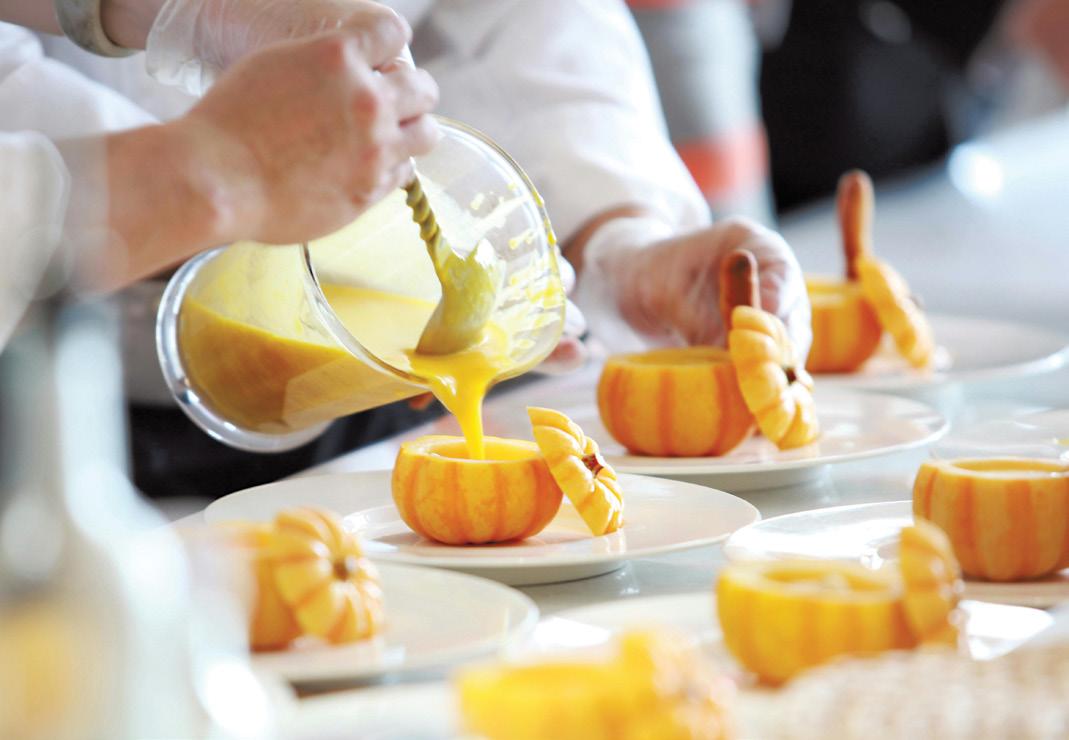
We made it! It's 2025 and the foodservice industry finds itself at a pivotal moment. The demand for plant-based cuisine has reached unprecedented heights, driven by consumers who are increasingly eco-conscious, health-focused, and eager for culinary innovation. Committing to plant-based leadership isn’t just an ethical choice—it’s a strategic one. By aligning menus with sustainability goals and embracing the cultural shift toward plant-based eating, foodservice operators can catalyze positive change while driving growth.
The numbers don’t lie. According to market research, the global plantbased food market is expected to grow at a compound annual rate of over 12% by 2030. This growth is fueled by a confluence of factors: increasing consumer awareness of climate change,

health-conscious dietary habits, and a desire for diverse and innovative dining experiences. For foodservice businesses, stepping into plant-based leadership positions isn’t just about keeping up; it’s about staying ahead.
Leadership in this context means more than offering a token vegan dish. It’s about embedding plant-based options into your culinary DNA, showing a commitment to innovation and inclusivity that resonates with both diners and industry peers.
The foodservice industry plays a significant role in environmental sustainability. From energy usage to food waste, the choices we make have a profound impact on the planet. Plantbased cuisine is inherently more resource-efficient, requiring fewer inputs like water and land while generating lower greenhouse gas emissions than animal-based products. To align menus with sustainability
goals, consider the following steps:
1. Evaluate Current Offerings: Conduct an audit of your menu to assess the proportion of plant-based dishes versus traditional options. Identify high-impact areas where plant-based substitutions can reduce your carbon footprint.
2. Source Locally and Seasonally: Work with local farmers and suppliers to reduce food miles while highlighting fresh, seasonal produce. This not only supports the community but also enhances the quality of your offerings.
3. Adopt Zero-Waste Practices: Incorporate creative solutions like repurposing vegetable scraps into broths or excess produce preserved, pickled or dehydrated into powders to add more flavors to soups, stews, and dusting dishes not only to add esthetics but added flavors to the final dish too, and feature dishes that minimize waste.
Engaging Eco-Conscious Diners
Consumers today expect more

Chef Nina Curtis is a celebrated professional in plant-based cuisine, named one of the 25 Top Women in Foodservice and Hospitality for 2024. With over two decades of culinary excellence, she has redefined the possibilities of plant-based cuisine, earning widespread acclaim from vegans and non-vegans alike. In 2020, she was honored as America’s Top Hospital Chef, highlighting her commitment to health and flavor. In 2023, Chef Curtis curated a historic plant-based menu for a White House State Dinner at the invitation of First Lady Dr. Jill Biden, honoring Prime Minister Narendra Modi. This groundbreaking event showcased her ability to elevate plant-based cuisine to luxurious heights.As the Director and Executive Chef of Plant’ish & Co. Culinary Arts, Chef Curtis continues to innovate and inspire through her delectable creations and leadership. Her role in the American Culinary Corps, a James Beard Foundation and State Department initiative, underscores her dedication to culinary diplomacy and cultural exchange. Chef Curtis’s influence extends beyond the kitchen. She is a passionate advocate, sharing her expertise through captivating dining experiences and enlightening lectures, inspiring culinary professionals and enthusiasts worldwide with her imaginative and nourishing creations.
than a good meal; they want to know their choices align with their values. Transparency and education are key to capturing the eco-conscious diner. Showcase the environmental benefits of your plant-based options through storytelling, menu descriptions, and staff training.
• Highlight Sustainability: Use clear, engaging language to describe how a dish’s ingredients and preparation methods contribute to sustainability.
• Interactive Experiences: Consider hosting events like plant-based cooking demonstrations or farm-totable tastings to deepen customer connections.
• Social Media Advocacy: Share your plant-based journey on social
continued on page 111


We asked industry tastemakers what food & beverage trends took off in 2024, and what they predict is coming in 2025. I am sharing predictions from culinary, wine, spirits, and hospitality industry experts.
“Advanced culinary techniques, once confined to high-end restaurant kitchens, will continue being embraced by bars in 2025, offering guests an elevated experience that merges mixology with gastronomy. Anything from clarified cocktails to utilizing different acids. These cocktails tied with unique experiences continue to wow guests.” - Gabriel Urrutia, Brugal 1888 Brand Ambassador & Mixologist.
Food and Wine Pairings
“As wine culture evolves, people will continue to use wine in different and unique ways. One notable shift we’ve already been seeing that I predict will continue is moving away from the tradition practice of wine bottle collecting and a larger emphasis on enjoying wine in the

present, focusing specifically on wine and food pairings that enhance the overall dining experience. This food and wine pairing trend will help people develop a deeper appreciation for the complexities of their meals and wine. With this approach, wine will be enjoyed in a more immediate, experiential way, leading to a quicker turnover of bottles and a less static approach to wine consumption, focused on aging in a wine cellar.” - Chef Todd Knoll, Executive Chef at Bricoleur Vineyards.
“Full-Service Dining is coming back into vogue after a year focused on counter-style and do-it-yourself dining. Guests will be delighted to see tablecloths, fine tableware, and elevated table service return in 2025, along with innovative, interesting menus.” - Bernard Hamburger, Director of Food & Beverage Marriott Marquis Houston
“More is not always best: A slight reduction in portion sizes will meet a preference for more refined, flavorful and unique presentations. Guests will enjoy

comfort foods with a twist, and shareables.” - Chef David Hackett, Executive Chef, Caribe Royale Orlando Resort
“Immersive dining experiences will be a key focus for us at Margaux, with interactive culinary events, chef and mixologist-led workshops, and collaborations designed to enhance the dining experience. Tableside presentations will be another key element that fosters memorable connections between food, drink, atmosphere, and community in 2025.”T.J. VanRhee, Director of Food & Beverage, JW Marriott Grand Rapids.
“Imaginative Menus with Small Indulgences – In 2025, guests will be excited about menus that blend unexpected flavors and ingredients, celebrating diverse origins. Simple, natural ingredients will appeal to health-conscious diners who are focused on wellness. And adding a little something extra – a small indulgence like a gourmet snack or treat – will help restaurants create an emotional connection with the diner, elevating the dining experience.” - Bernard Hamburger
4. Demand for Zero-Proof and
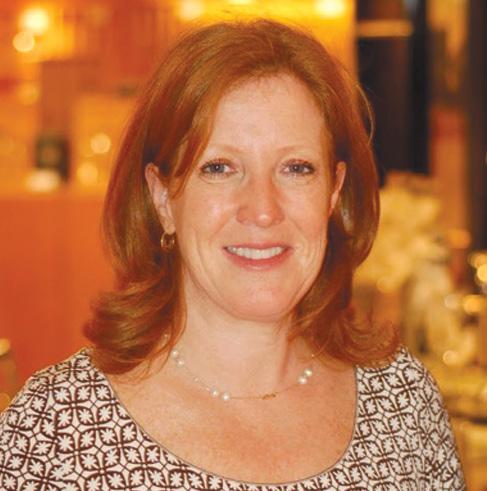
Joyce Appelman is the SCOOP News Editor and Senior Contributing Writer for Total Food Service and previously the National Communications Director for C-CAP, Careers through Culinary Arts Program. An industry leader supporting education and scholarships, she has been instrumental in opening career opportunities for many young people in the foodservice industry. Email her at joyceappelman@gmail.com
“Mocktails and alcohol-free drinks will be even more pronounced on drink menus, offering a whole new look on what is possible in the non-alcoholic arena, and allowing non-drinkers to feel more comfortable while increasing beverage revenue.” - Chef David Hackett
“As mindful drinking continues to gain momentum, non-alcoholic beverages have solidified their place on menus especially with THC-infused drinks pushing restaurants to offer "California Sober" alternatives to offset alcohol sales.” - T.J. VanRhee
“Demand for Zero-Proof and other non-alcoholic beverages continues to rise as well, offering bartenders the opportunity to master making these alternatives as mouthwatering as traditional drinks.” - Matt Barba, Chief Operating Officer, Charlestowne Hotels
5. Splurge with Balance
“Non-alcoholic beverages are here to stay as consumers want the pleasure of a cocktail without the spirits. Dining out is often a splurge occasion, yet today’s restaurant patrons are finding more options to balance their choices and manage indulgence.”- Sharon Olson, Member of Les Dames d'Escoffier International and Founder of Culinary Visions
6. Rum as the New “It” Spirit?
“Rum continues to find new con-
continued on page 34
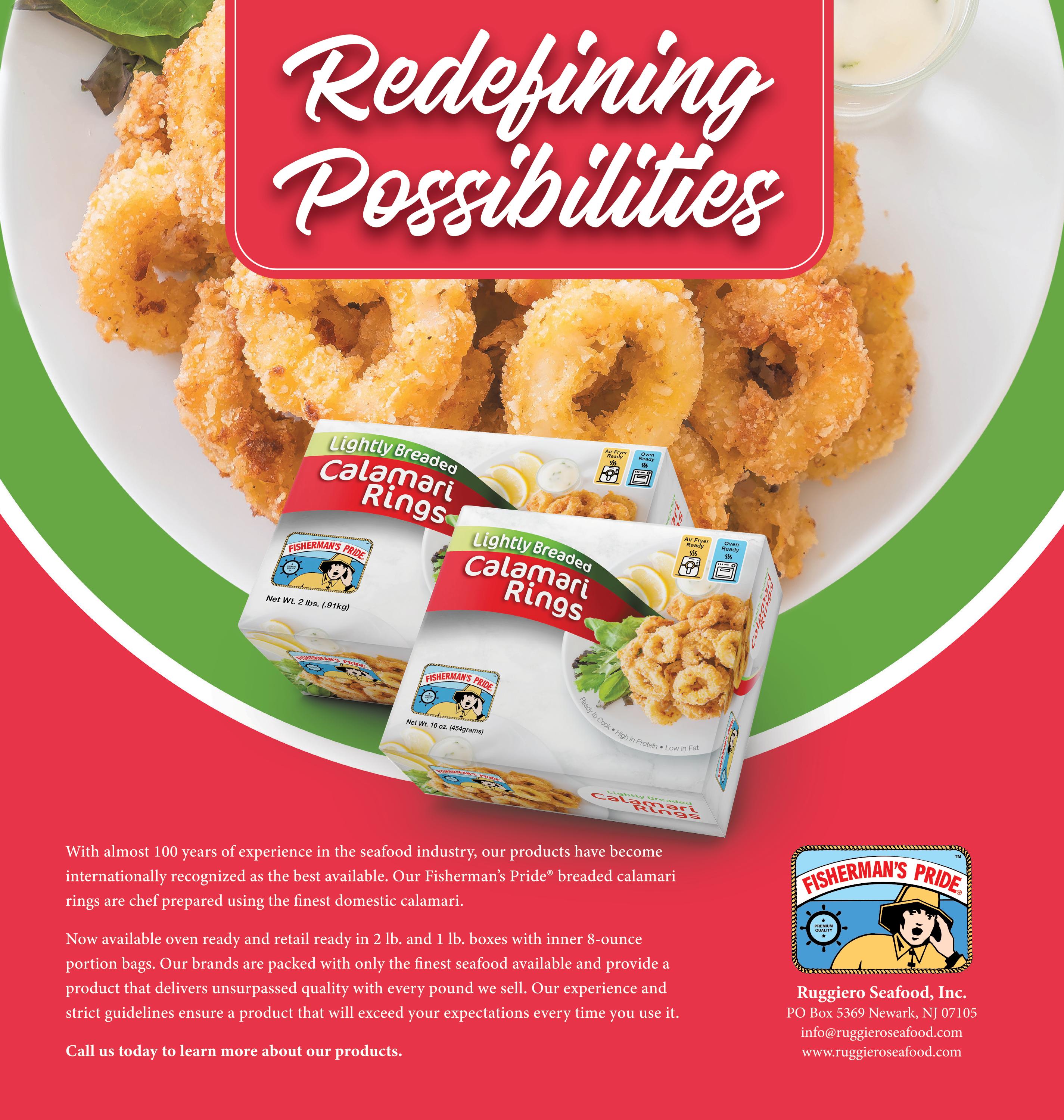
sumers through education and quality changing perceptions of rum. Great value can be found in rum as consumers look for unique finishes and innovation like Brugal Colección Visionaria Edición 02 which explores the aromatics of coffee through a toasting process that offers rum fans a new way to enjoy legendary brands.” - Gabriel Urrutia
“We’ll see a lot more plant-based and vegan food offerings on menus with bold flavor profiles that will even entice meat lovers to give them a try.” - Chef David Hackett
“Guests are excited about healthconscious tasting menus, elevated plantbased offerings, and shared plates featuring healthy, local ingredients.” - Matt Barba
“Sustainability remains top of mind for consumers, who value locally sourced ingredients to support local economies and reduce environmental impact. This extends to proteins, with a focus on responsible seafood harvesting and animal welfare in farming.” - T.J. VanRhee
“Guests are focusing more and more on wines, oils and vinegars sourced from single vineyards and olive groves reflecting biodynamic practices. Bio Dynamic agriculture, which includes organic methods, focuses on a self-sustaining relationship between the land, plants, and animals. Plants are harvested at a natural moment in the season instead of on a fixed date; Wines are purer, lower in sugar and alcohol, and free from additional chemicals; and drinkable vinegars and flavor-rich oils are gathering interest.”Bernard Hamburger
10. Resurgence of Brunch
“Interest continues to rise in elevated brunch offerings – our in-house F&B team is already working with our properties to develop new experiences that will elevate Saturday and Sunday dining across our portfolio.” - Matt Barba
11. Mushrooms, Yes, Mushrooms!
“Interest in mushrooms benefits, flavor and versatility will expand in 2025 with unique and tasty varieties replacing your common Portobellos. Mushrooms will also go beyond food menus and even veer into cocktails and adaptogenic N/A drinks.” - Ryan Schmied, Director of Food and Beverage, Amway Grand Plaza
12. Gen-Z Consumers – The New Tastemakers?
“Gen Z consumers are shifting demand toward non-alcoholic, low-ABV, and premium beverages, with a focus on quality over quantity following the “premiumization” trend. In 2025, fewer drinks will be consumed overall, but high-end options like premium mineral waters and spirits will grow in popularity as Gen Z develops a deeper appreciation for quality. And, Gen Z will pay more attention to the nuance of flavors from quality teas like Pu'er and alternates like Yerba Mate.” - Ryan Schmied
13. Gen Z as a Driver
“Gen Z’s influence on restaurant marketing is driving a push toward more personalized, value-driven, and healthconscious experiences. As a result, restaurants must be agile, tech-integrated, and authentic in their marketing, emphasizing sustainability, quality, and experiences that resonate with this valuesdriven demographic.” - Andrew Glantz, Founder and CEO of GiftAMeal
14. Swicy and Newstalgia
"The 'swicy' trend combines the bold, exciting heat of spicy ingredients with the sweetness of tropical flavors, creating a unique and adventurous flavor profile. We're thrilled to embrace this growing trend with offerings like our limited-time Tajín Mango Fried Pie, and we anticipate 'swicy' foods will continue to captivate taste buds across the nation in 2025. Similarly, 'newstalgia' allows us to reimagine classic comfort foods with modern twists that resonate with today’s diners. In 2025, we’re excited to bring this trend to life with innovative LTOs, including reimagining our classic nachos by introducing new dip variations featuring our signature queso and
an enhanced queso blanco. These trends perfectly align with Taco Cabana’s commitment to bold flavors and culinary creativity." -Ulyses Camacho, President and COO of Taco Cabana.
15. From Farm to Tent, CulinaryDriven Camping Is Booming
Though many associate camping with pre-packaged meals or processed snacks, a new wave of campgrounds on farms is redefining camping’s culinary experience. Pitchup.com saw an impressive 443,000 searches for farm campgrounds in 2024, where wine enthusiasts, foodies and eco-friendly travelers can explore where their food comes from, taste local produce and dishes, and reconnect with the land, while also offering farms an alternate income source. Agritourismfocused campgrounds, such as Sequoia Mountain Farms in Pinehurst, California or In Our Garden in Italy, offer a glimpse into sustainable farming, from olive groves to vineyards.
“Pitchup.com predicts that travelers will continue to seek authentic experiences to explore cuisine and where their food comes from, while also offering a secondary income source to agricultural sites in need." - Dan Yates, Founder and Managing Director of Pitchup.com.
16. Guest Data Drives Competitive Advantage
“The brands that thrive will use guest data to deliver personalized experiences and make smarter business decisions in 2025. From menu optimization to real estate strategy, data will separate winners from losers in an increasingly competitive landscape. We're seeing early signs of brands successfully balancing third-party reach while building profitable direct ordering channels, recognizing that marketplace dependency limits margins and guest relationships.” - Zach Goldstein, Founder and CEO of Thanx
“Personalization and Customer Data: 70 per cent of operators now report sending personalized offers to customers, offering value and convenience without feeling intrusive will remain a key factor in building loyalty.” - Samir Zabaneh, Chairman and CEO of TouchBistro
17. Service Empowered
by Technology
“As AI optimizes operations like inventory and workforce management, the focus will remain on enhancing human service, with almost 9-in-10 (89 per cent) feeling positive about the use of AI in restaurants.” - Samir Zabaneh
“Chicken has become America’s ultimate comfort food. It’s versatile, craveworthy, and familiar, which keeps it in high demand, especially during uncertain economic times. In 2025, we expect to see continued growth in menu innovation with bold flavors, premium ingredients, and creative presentations, keeping loyal fans happy while drawing in adventurous foodies.” - Jack Mashini, Co-Founder of Wing Snob
19. The Bean Renaissance
“Beans are having their moment. As we step into 2025, it’s fair to call it ‘The Year of the Bean.’ From hearty soups and stews to elevated takes on hummus and bean-based protein alternatives, this simple ingredient will become a cornerstone of the global food landscape, celebrated for its ability to meet consumer demand for healthier, more sustainable dining options.”- Kate Howell, Third Vice President of Les Dames d'Escoffier International
“Globally inspired flavors like yuzu, tamarind and ube, along with functional smoothies and bowls are set to dominate along with smaller, shareable bites redefining quick-serve dining and resonating with younger, on-the-go consumers.”
- Susan Taylor, CEO and President of Juice It Up
If you are interested in learning about additional trends for 2025, you might be interested in Baum + Whiteman International Food + Restaurant Consultants 2025 Trends Report, https://www. baumwhiteman.com/trend-reports
And Roland Foods Predictions Guide, https://rolandfoods.com/blog/rolandfoods-2025-fine-foods-industry-trendspredictions-guide.


P.J. Clarke’s is more than just a restaurant; it’s a living piece of history that embodies New York’s vibrant culture. For decades, the name has been synonymous with hospitality, community, and timeless charm. At the helm of this iconic brand is Phil Scotti, a Marine veteran turned restaurateur, whose leadership has transformed P.J. Clarke’s into a beacon of authenticity in a constantly changing city.
Total Food Service sought out Scotti to delve into the secrets of his success and understand what fuels his passion for food, hospitality, and giving back to the community. From his early days running a luncheonette to revitalizing one of New York City’s oldest saloons, Scotti’s journey is a testament to resilience, creativity, and a love for bringing people together. In this exclusive feature, we celebrate the man behind the brand and explore his vision for the future of P.J. Clarke’s.
Could you share how you first got started in the restaurant industry? What was it about this career that inspired you to build a legacy with P.J. Clarke’s?
I got my start when my uncle offered me $1,500 to take over a failed luncheonette in a strip mall outside of Philly. It was called the JEM restaurant—named after the previous owners, Jim and Mary. They ordered a sign that accidentally came back as “JEM,” and they left it that way. I figured, why not
continued on page 38

give it a shot?
At first, I thought it was all about the food, but I quickly learned that it was the relationships that made the restaurant business so rewarding. People weren’t just there to eat—they came to connect. That lesson stayed with me and became the foundation of everything I’ve done since.


to preserve, and what new elements have you introduced to keep it relevant?


When I moved to New York, a friend introduced me to P.J. Clarke’s, and it instantly felt like home. There was something magical about the place—the quirks, the characters, the Heineken prices that didn’t match at either end of the bar. It was a first-date litmus test for me: if the woman didn’t appreciate the humor, we probably weren’t a match. Years later, when the chance came to acquire it, I jumped at it.












The authenticity of P.J. Clarke’s is its soul, and preserving that was non-negotiable. There’s a sense of nostalgia when you walk in—a feeling that nothing’s really changed, even though the world outside might be unrecognizable. That’s powerful.





P.J. Clarke’s has a storied history dating back to 1884. What aspects of the brand were most important









We’ve worked hard to maintain the saloon vibe, the classic menu, and the warm welcome from staff who genuinely love what they do. At the same time, we’ve modernized in ways that enhance the guest experience without compromising what makes P.J.’s special. For instance, our expanded Oyster Bar taps into a growing appetite for fresh, quality seafood, while still fitting seamlessly into the P.J.’s identity.
What’s your secret to running a res -
continued on page 40

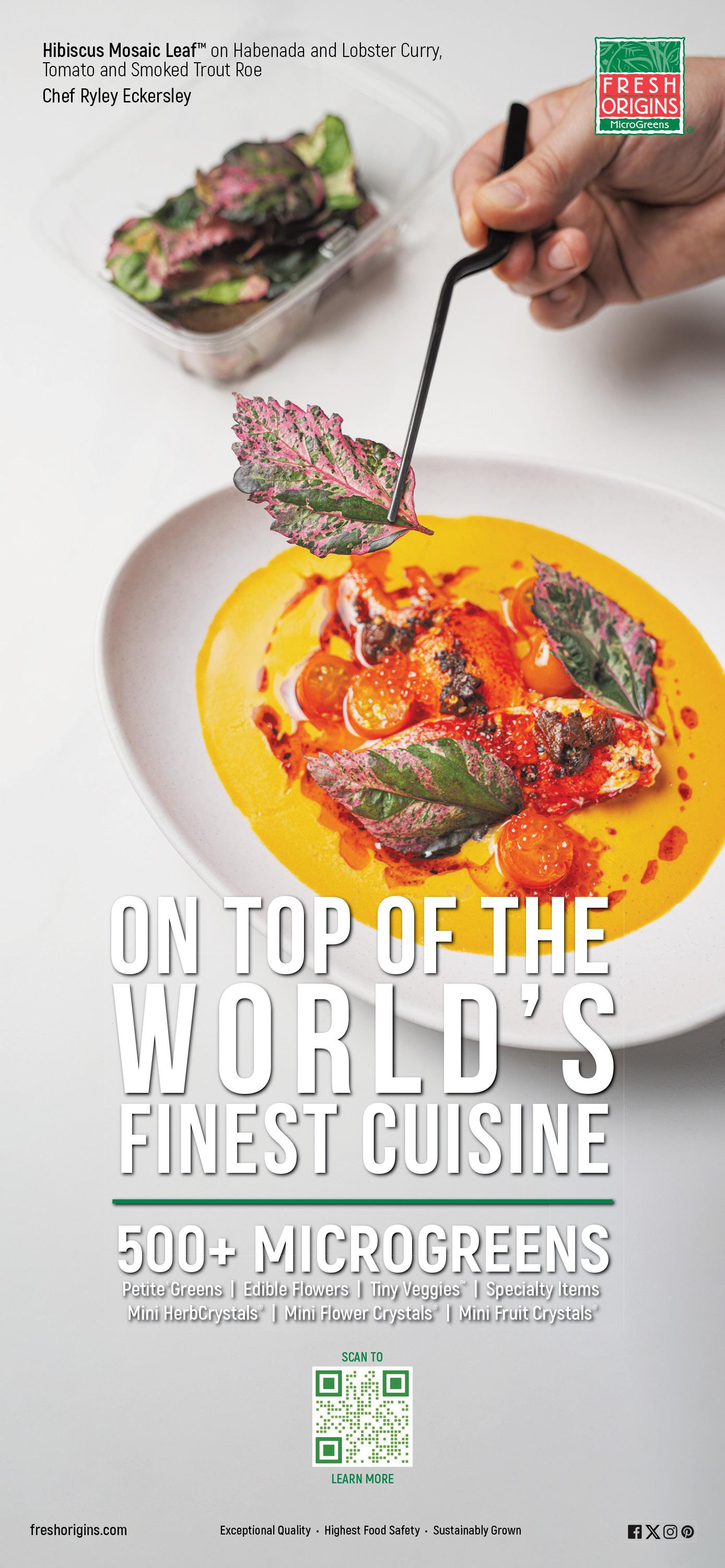
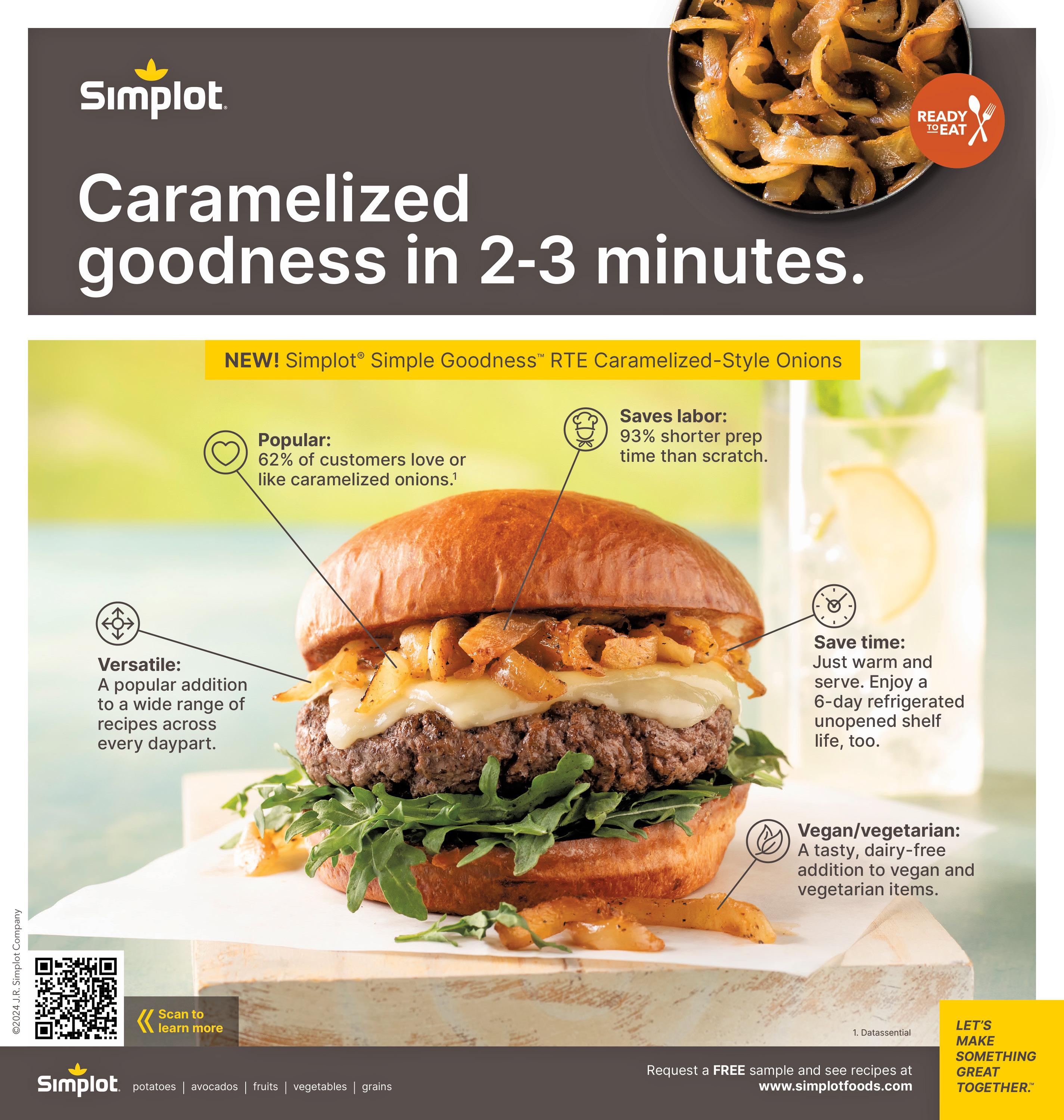
taurant that appeals to both locals and tourists, generation after generation?
Hospitality and consistency. Tourists might come because of the reputation, but locals stay loyal because they feel at home. At P.J.’s, you know what to expect—a great burger, a perfectly poured drink, and a bit of banter with the bartender.
We also embrace our role as a generational experience. Families introduce their kids to P.J.’s, and those kids grow up and bring their own families. It’s about being part of the fabric of people’s lives, not just a spot they visit once.
Giving back to the community seems central to your philosophy. What drives that, and can you share more about P.J. Clarke’s initiatives?
Someone once told me, “Every day is a struggle, so we must be kind to one another.” That stuck with me. Giving back isn’t just something we do; it’s part of who we are.
Nationally, we’re involved with Operation Mend, an incredible organization that helps severely wounded veterans and their families rebuild their lives. As a veteran, I feel a deep connection to their mission.
Locally, we’ve supported the Goddard Riverside Center for over two decades. Our chefs just prepared their 400th turkey for families in need—a milestone that means a lot to us. Moments like that remind me why we do what we do.
How did your time in the Marines shape your leadership style and approach to business?
The Marines taught me resilience, discipline, and the importance of teamwork—qualities that are invaluable in the restaurant business.
Early on, I had a hard time letting go of the Marine mindset. I expected everyone to operate like a soldier, and that just didn’t work. Over time, I learned to adapt my leadership style to meet people where they were. Now, I focus on fostering a culture where everyone feels valued and empowered.
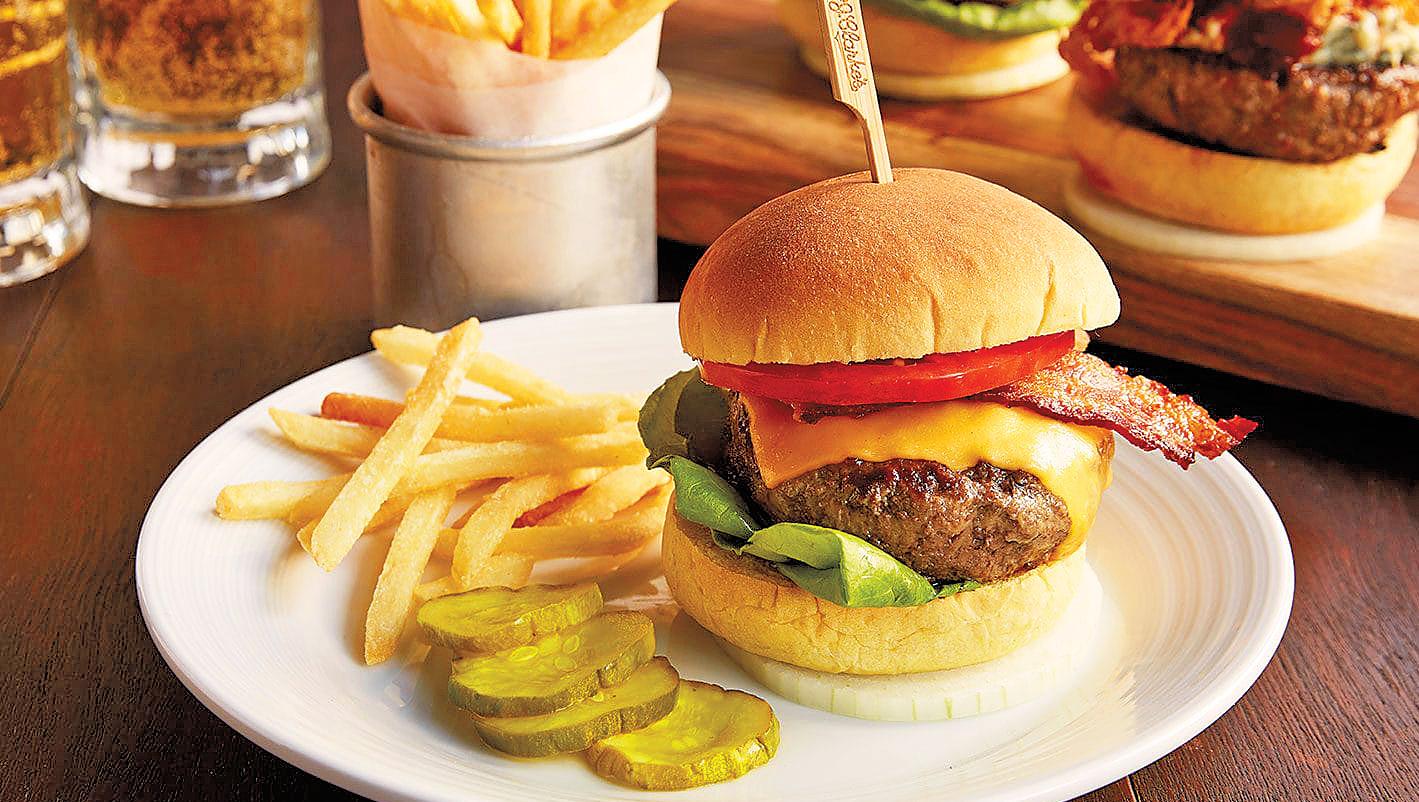



What’s the most important lesson you’ve learned about leadership?
Communication is everything. You can have the best team in the world, but if people don’t understand the mission or their role in it, you’re going to fail.
I also believe in leading by example. Whether it’s the dishwasher or the general manager, everyone looks to the leader to set the tone. If you’re not willing to roll up your sleeves and do the hard work, why should they?
You’ve introduced new concepts like the Oyster Bar at P.J. Clarke’s. How do you decide when to innovate and when to stick with tradition?
It’s all about listening to our guests. The Oyster Bar wasn’t something we planned from the start—it was a response to demand. We were already selling half a million oysters a year in New York, so expanding on that made sense.
Innovation has to feel organic. If
it doesn’t align with who you are as a brand, it won’t resonate with your guests.
The New York restaurant scene is notoriously competitive. How do you ensure P.J. Clarke’s stands out? It’s all about authenticity. New York is full of trendy spots that come and go, but there’s something timeless about a place that stays true to itself.
continued on page 42
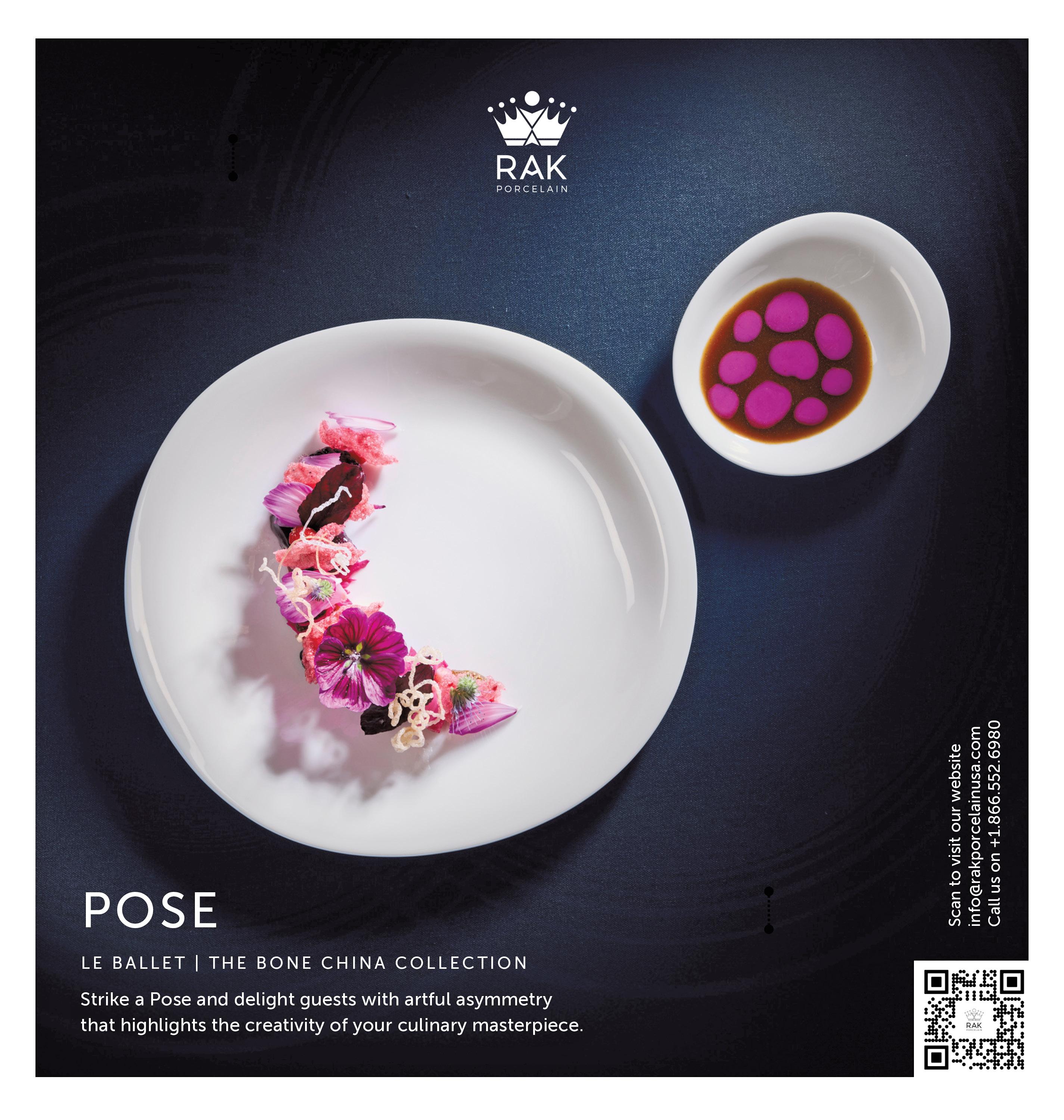
We also prioritize location. A great spot with a mix of day and night traffic, residential and office spaces, makes all the difference. But at the end of the day, it’s the experience that keeps people coming back.
What’s been your proudest moment as the owner of P.J. Clarke’s?
There have been so many, but one that stands out is seeing families who’ve been coming to P.J.’s for generations. When someone tells me their grandfather used to take them here, and now they’re bringing their kids, it hits me that we’re part of their story.
Tell us about your wife, Thea, and the role she’s played in your journey.
Thea is my partner in every sense of the word. She joined us during the restoration of P.J.’s, and her sensibility
and attention to detail have been instrumental in shaping the brand.
We joke that she’s the only person who can keep me in line. But in all seriousness, her support and perspective have been invaluable. She has a gift for creating hospitality moments that feel effortless and genuine.
What’s your advice for aspiring restaurateurs?
Be prepared for hard work. The restaurant business isn’t for the faint of heart. You need to be passionate about hospitality, willing to learn, and ready to roll with the punches.
And don’t think you can succeed on charm alone. You need a solid plan, a great team, and the ability to create a culture that people want to be part of.
continued on page 44
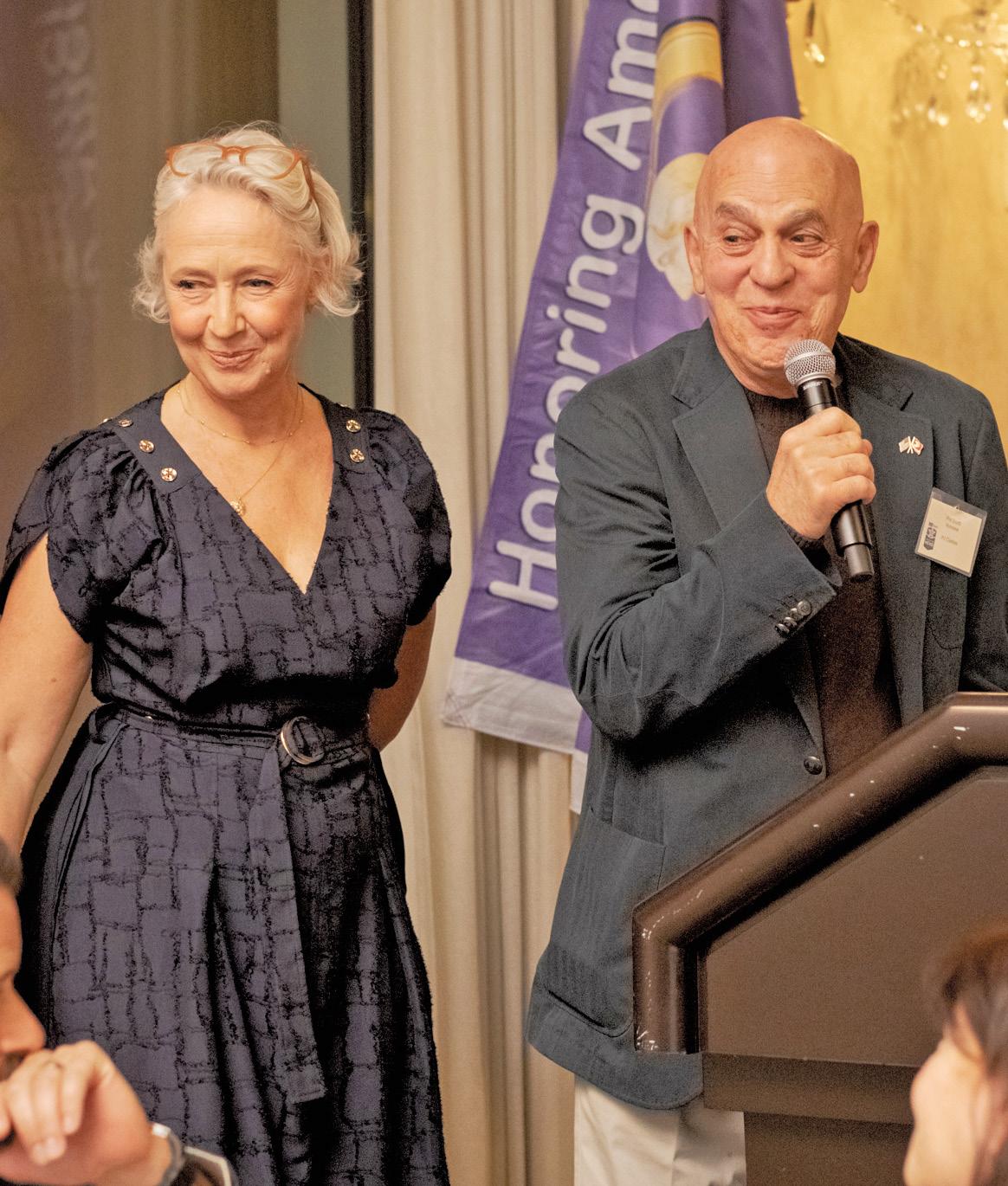

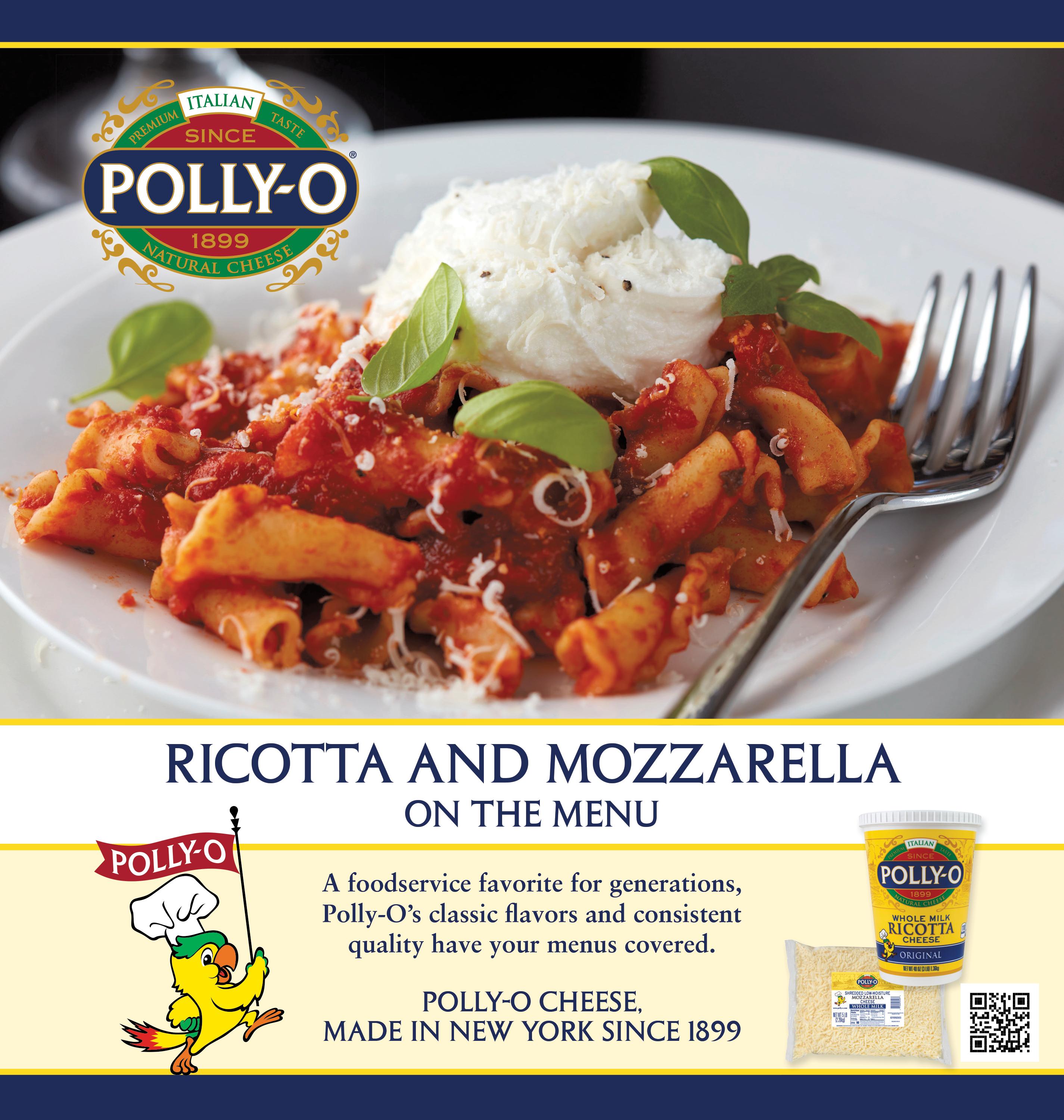
What’s next for P.J. Clarke’s? Any exciting plans on the horizon?
We’re gearing up to open a new location at JFK’s Terminal Six—a project I’m really excited about. It’s an opportunity to bring the P.J. Clarke’s experience to a whole new audience.
Beyond that, we’re exploring opportunities in other cities and keeping a close eye on how people’s lifestyles are evolving. The restaurant business is always changing, and staying relevant means staying curious.
When you look back on everything you’ve accomplished, what do you want your legacy to be?
I don’t spend much time thinking about legacy—I’m more focused on getting up every day and doing the best I can.
But if I had to answer, I’d say my legacy is the people I’ve worked with. I want them to feel like they were part of something meaningful and to have the same opportunities I’ve had. If
they can look back and say, “I was part of something special,” then I’ve done my job.
Finally, what’s your definition of success in the restaurant business?
Success is creating a place where people want to be. It’s not about awards or accolades—it’s about the moments. The couple on their first date. The friends celebrating a milestone. The regular who feels like family. If you can do that, you’ve succeeded.
All photos courtesy of P.J. Clarke's unless noted otherwise



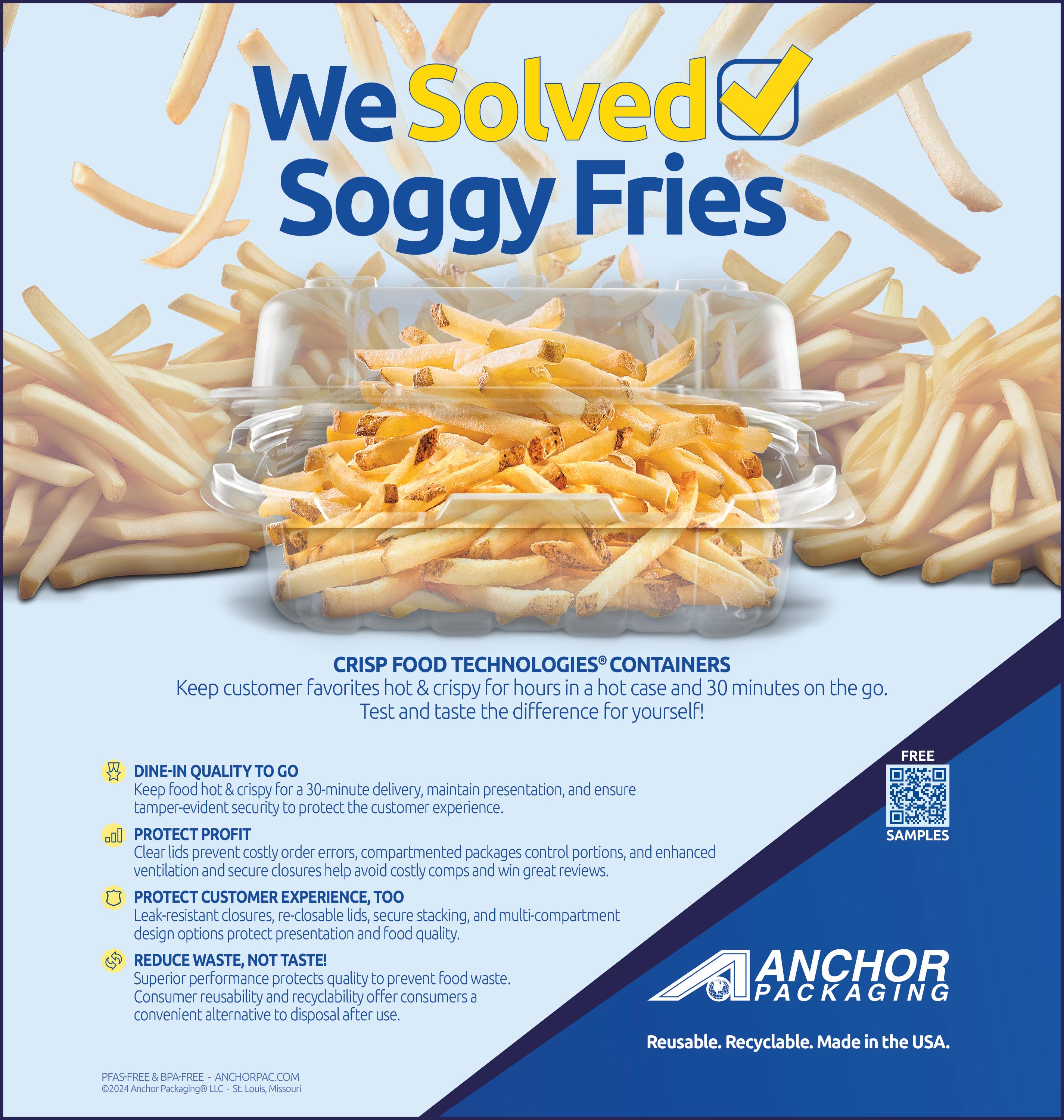
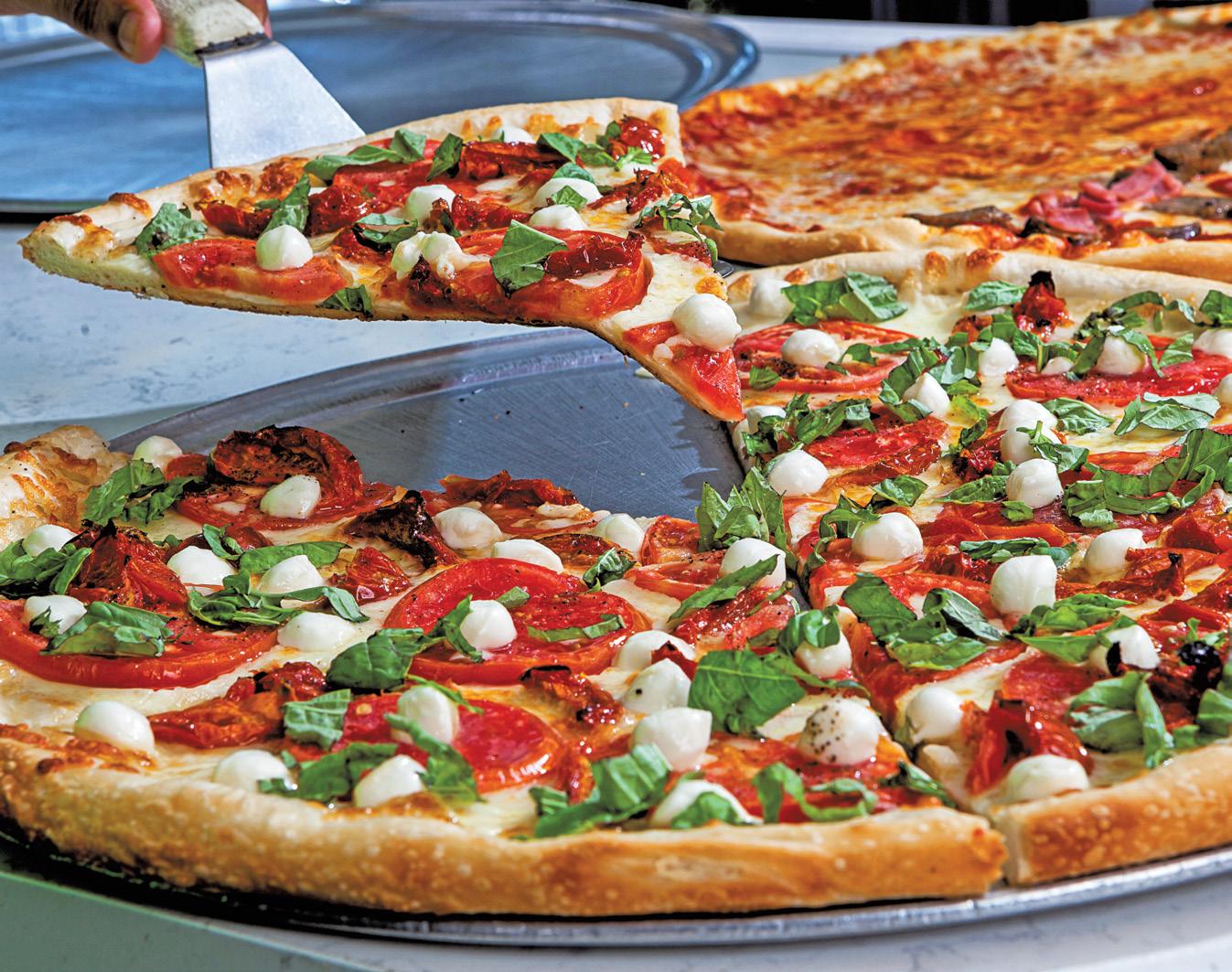
Standing out in the pizza industry—a space dominated by household names and fierce competition—requires more than just good food. It demands a unique blend of quality, innovation, and strategic vision. For Cannoli Kitchen Pizza, the challenge has been to carve out a niche that combines authentic Italian recipes with the operational efficiency of fastcasual dining.
“The pizza business is saturated, but there’s still room for brands that deliver a superior experience,” said Austin Titus, President of Cannoli Kitchen Pizza. By focusing on authenticity, consistency, and a strong franchise model, Cannoli Kitchen is thriving where others struggle to gain traction.
Cannoli Kitchen Pizza offers franchisees a distinct opportunity to succeed in the competitive pizza space.
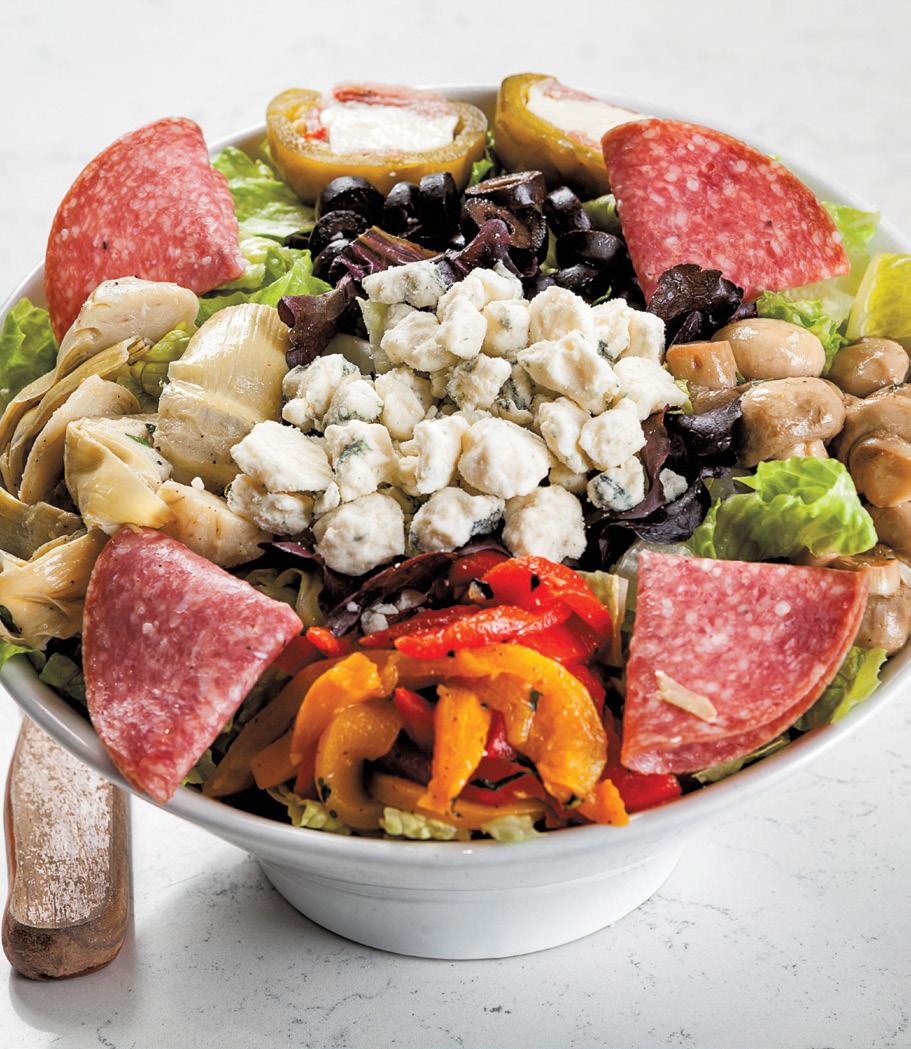
“Our focus is on bringing premium Italian flavors to customers who want convenience.” — Austin Titus
The brand blends authentic Italian cuisine with a streamlined operational model, allowing franchise owners to deliver high-quality food in a fastcasual setting.
“Our focus is on bringing premium Italian flavors to customers who want convenience,” Titus explained. “It’s about combining the best of both worlds—great food and great systems.”
The menu features classic New York-style pizzas, pastas, and desserts, all crafted using traditional Italian recipes. This commitment to authenticity sets Cannoli Kitchen Pizza apart from other fast-food pizza brands that focus on value over quality. The Boca Raton, FL based company also offers a
compact, efficient footprint that minimizes startup costs and simplifies operations. Franchisees benefit from a proven business model designed to compete with major chains while maintaining a boutique feel.
Titus has become a keen observer of the marketplace. He predicts significant changes in the pizza industry in 2025 as consumer preferences and technologies evolve. “Technology is going to be a game-changer,” he noted. “Franchises that invest in AI, advanced point-of-sale systems, and automation will have a major edge.”
These tools streamline operations, enhance customer service, and provide valuable data for inventory and staffing decisions.

The demand for off-premises dining will also grow, according to Titus. “Delivery and takeout have become staples for consumers. By 2025, I expect up to 85% of sales in some locations to come from off-premises dining.” Cannoli Kitchen’s model is well-positioned to capitalize on this trend, offering both dine-in and offpremises options to meet customer needs. Sustainability and transparency will also play a larger role. “People want to know where their food comes from and how it’s made,” Titus said. Cannoli Kitchen is exploring ecofriendly packaging and ingredient sourcing to stay ahead of this trend. One of Cannoli Kitchen’s standout features is its commitment to consistency. The cornerstone of its kitchen operations is the Dragon Oven, a state-of-the-art conveyor oven manu -
continued on page 115

Cuisine Solutions Inc. (CSI), the global leader and largest premium food company in pioneering and perfecting the sous vide technique, will celebrate the 8th edition of International Sous Vide Day (ISVD) on Sunday, January 26th with three exclusive culinary celebrations around the globe. The day marks the 83rd birthday of Dr. Bruno Goussault, the Master of Modern Sous Vide and Chief Scientist of CREA (Culinary Research and Education Academy), the education and consulting arm of Cuisine Solutions.
For the 8th edition of ISVD, Cuisine Solutions will host three VIP events in Lyon, France, Bangkok, Thailand, and Miami, Florida. Culinary leaders, top food scientists and Michelin-starred chefs will come together to experience the evolution of sous vide cooking and the artistry behind this time-honored technique, pioneered by Dr. Goussault over 50 years ago in 1971.
The evening ISVD event in Lyon, France – taking place during the Sirha Lyon exhibition – will be hosted by Cuisine Solutions’ Chief Strategy Officer Gérard Bertholon and held at the Restaurant Gastronomique Christian Têtedoie on their beautiful rooftop, offering a panoramic of the city. The celebration will welcome Cuisine Solutions President & CEO Felipe Hasselmann and Chairman Stanislas Vilgrain, as well as top chefs and culinary leaders Ghislaine Arabian, 1ere femme Chef 2 Etoiles Michelin, Romain Besseron, Chef Hôtel de Matignon 1er Ministre, Éric Briffard MOF Cordon Bleu, Christian Têtedoie,

MOF, Frédéric Jaunault, MOF, Franck Putelat, MOF, Christophe Raoux, MOF, Christian Segui, École Hôtelière de Lausanne (EHL), Jean Louis Gerin, MCF, Sébastien Canonne, MOF Pâtisserie, Jacque Mallard, Président d'Honneur de la Guilde des Terroirs, Alexandre Berthaud, Chef des Cuisines Té Traiteur Évènementiel, Alexis Quaretti, Executive Culinary Director Oceania, Eric Barale, Senior Culinary Director, Apollo Group, and José Bailly.
A selection of innovative tasting stations prepared by top international Cuisine Solutions chefs will showcase sous vide creations from the world’s cuisine, including American-inspired creations, as well as Lyon’s classic recipes, served alongside the finest champagne and
cocktails. The evening will also feature intimate 10-minute sous vide cooking sessions with top Cuisine Solutions chefs in the kitchen to taste and experience what the sous vide technique can bring to cuisine. During the fête, Chef Bertholon will present this year’s recipients of the European third annual Champions of Sous Vide Awards.
Throughout the event, retrospectives from each prior International Sous Vide Day will play alongside videos from the Sirha Lyon exhibition. The night will conclude with a special ceremony to celebrate Dr. Bruno Goussault’s 83rd birthday and his latest honor, the 2024 Grand Prix de la Science de l’Alimentation. This prestigious award is given annually to an individual, corporation or institution
contributing to the improvement of food and nutrition science at an international scale.
In Bangkok, Thailand, Cuisine Solutions’ Director of Operation in Asia, Antoine Grelet and Chief Manufacturing Executive Jean-Pierre Guillaud will host a brunch experience at Love Me Tender restaurant. Guests will celebrate the art of sous vide in the heart of Bangkok, as they are treated to Thai sous vide creations, live tasting stations and the latest hits spun from the DJ.
In Miami, Florida, VIP guests will be treated to interactive tasting stations complete with cryoconcentration cocktails in bold flavors like blood orange, ube and pineapple, created by mixologist and Co-Host of Bar Rescue Season 9, Phil Wills, at the beautiful Diplomat Beach Resort. Guests will join Cuisine Solutions’ CCO, Miguel Franco, and VP of Culinary Services, Chef Sean Wheaton. The evening is sponsored by Teinnovations, Fortessa, JBS, Saputo and Van Drunen Farms.
Following the ISVD celebration in Miami, Cuisine Solutions will host its inaugural Innovation Day on January 27th. The all-day event will be broken up into four sessions, bringing together global culinary leaders to explore where the industry has been and where it is going, highlighting sustainability, artificial intelligence and more.
• Culinary: Thinking about Cuisine Solutions products as ingredients, the CSI Culinary team is focused on innovating with the products you may think continued on page 111
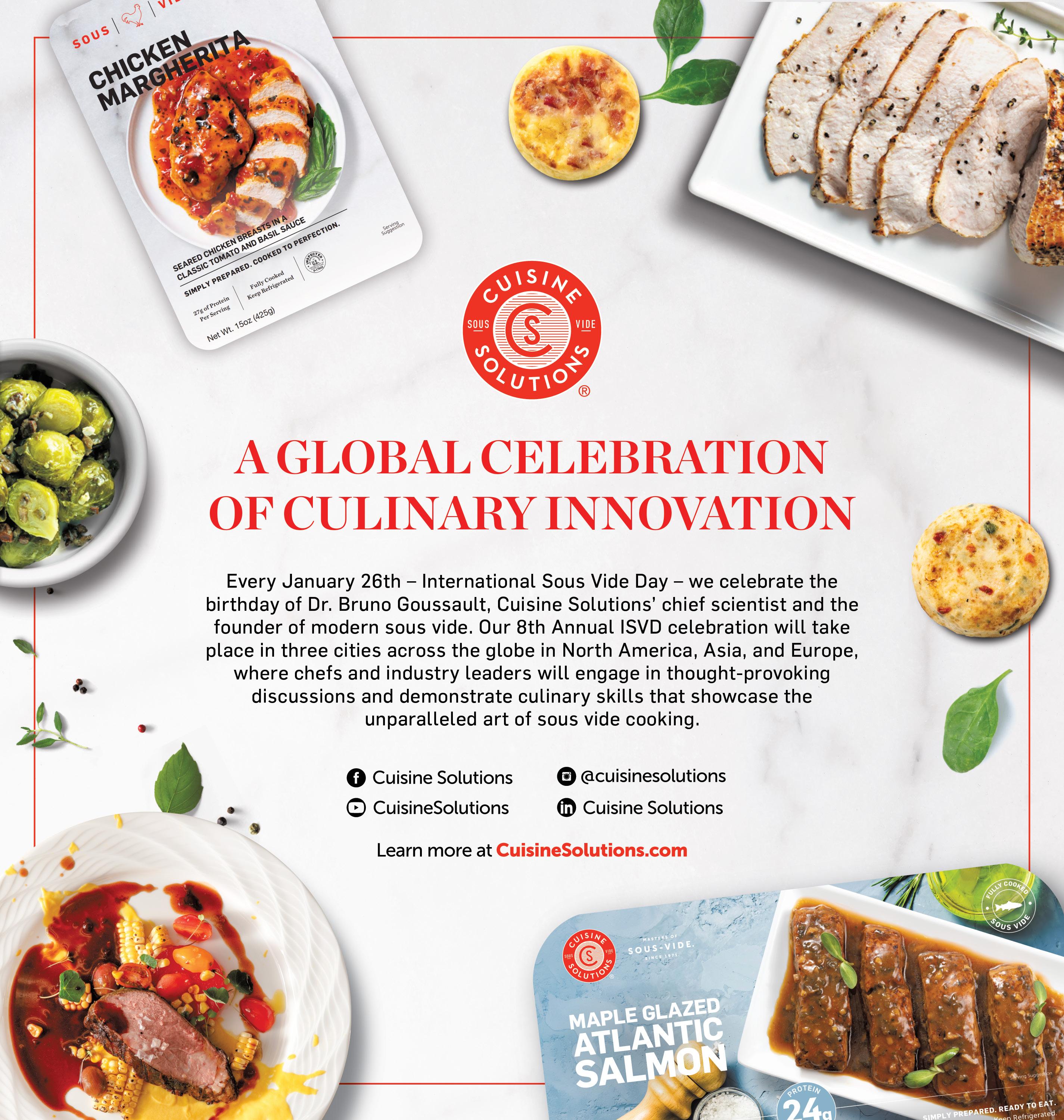
The Society for Hospitality and Foodservice Management (SHFM) hosted its highly anticipated annual holiday party at Spotify’s world headquarters in Manhattan. Against the vibrant backdrop of the city, the event brought together industry leaders, innovators, and members to celebrate a year of achievements while looking ahead to the future of workplace hospitality.
The gathering was not just a holiday celebration—it was a showcase of SHFM’s vital role in shaping the future of contract feeding and workplace amenities across corporate offices,
colleges, universities, and healthcare facilities. With Spotify’s sleek and modern space as the setting, the evening was a perfect blend of hospitality, networking, and reflection on the organization’s mission.
SHFM represents the most influential professionals in workplace hospitality, overseeing operations ranging from corporate cafés and catering to childcare services and conference support. As hybrid work schedules continue to challenge traditional workplace norms, SHFM members are pioneering new ways to bring employees back to the office by creating appealing and dynamic environments.
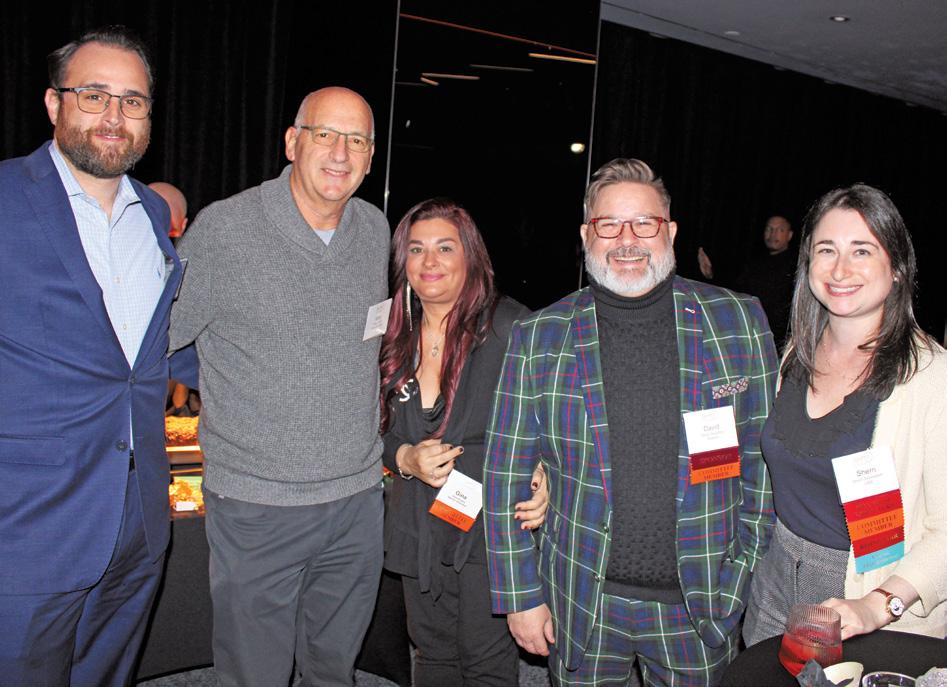

“This event is a celebration of what SHFM stands for—connecting professionals, driving innovation, and leading the way in hospitality,” said Shayne Varnum, President of SHFM and veteran ITW Food Equipment executive. “We’re focused on creating spaces that foster meaningful human connections and ensure our industry thrives in a changing world.” SHFM also plays a critical role in supporting sustainable practices, aligning services with the growing demand for wellness and eco-consciousness in foodservice.
At its core, SHFM empowers its members to deliver exceptional work-
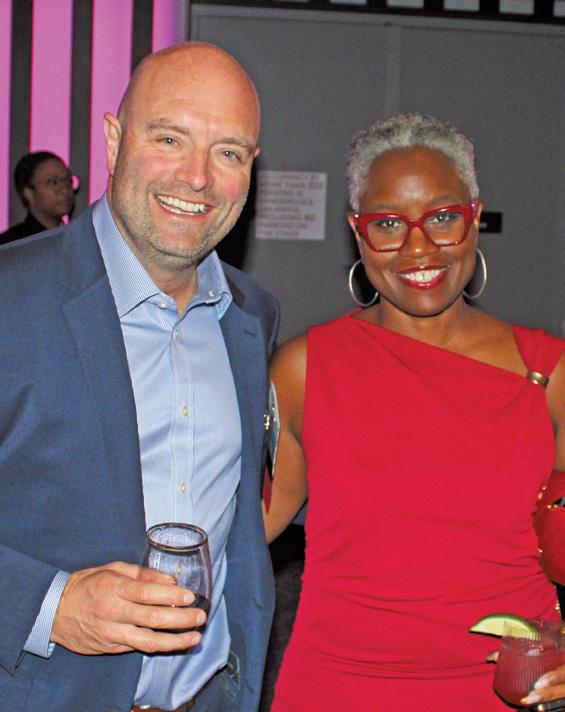
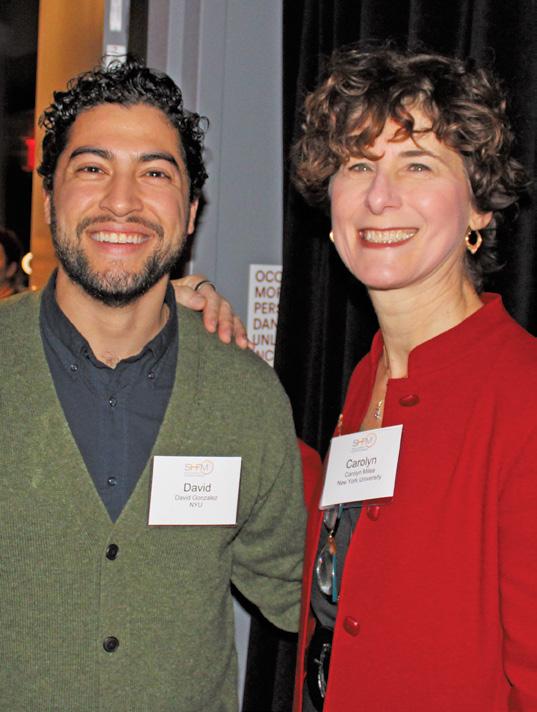
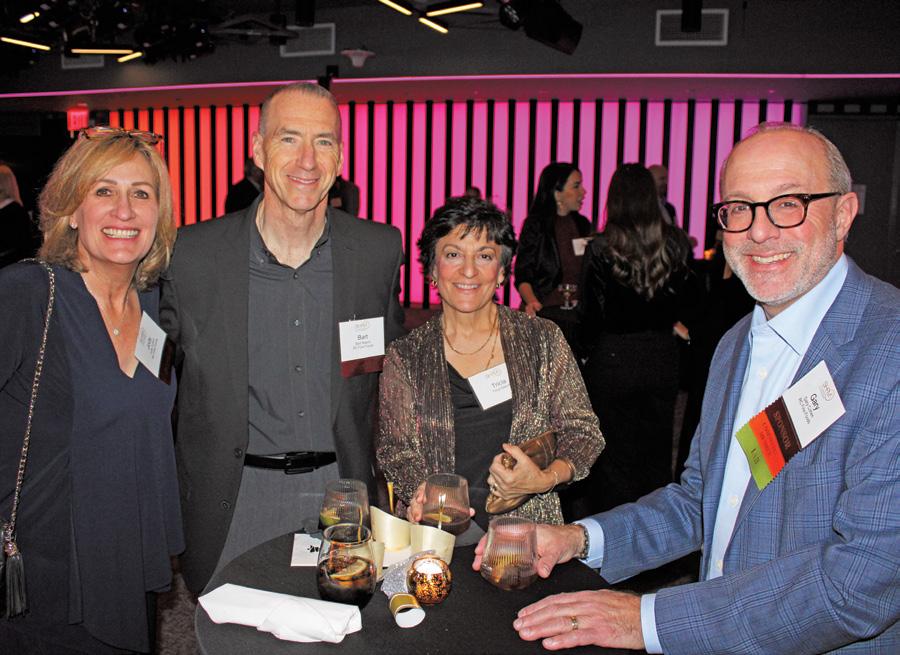
place experiences. From streamlining operations with AI technology to designing inclusive dining spaces, the organization supports professionals who manage food and amenities for millions of employees nationwide. “We’re at a pivotal moment for workplace hospitality,” Varnum explained. “The industry is balancing modernization with the need for comfort and familiarity. It’s about using technology to enhance—not replace—the human touch that’s at the heart of hospitality.”
In his role as SHFM president, Var-
continued on page 104
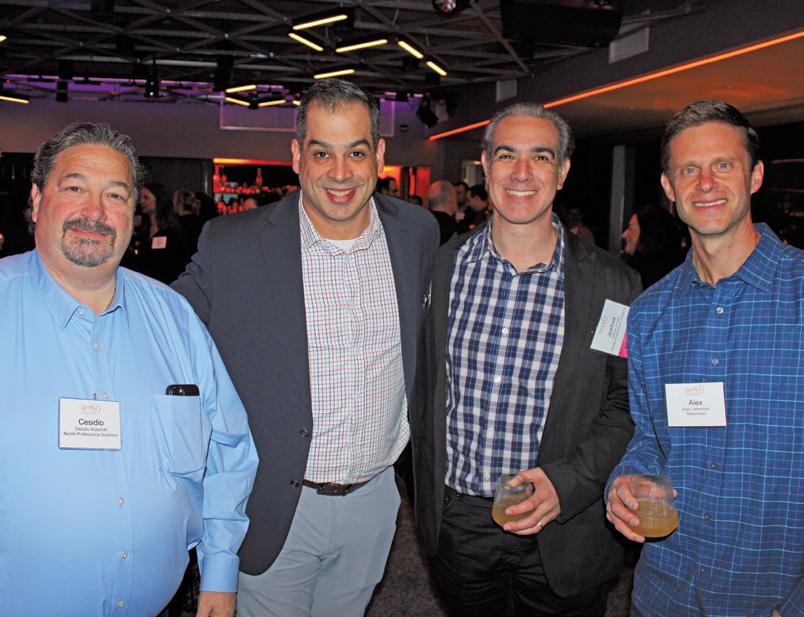
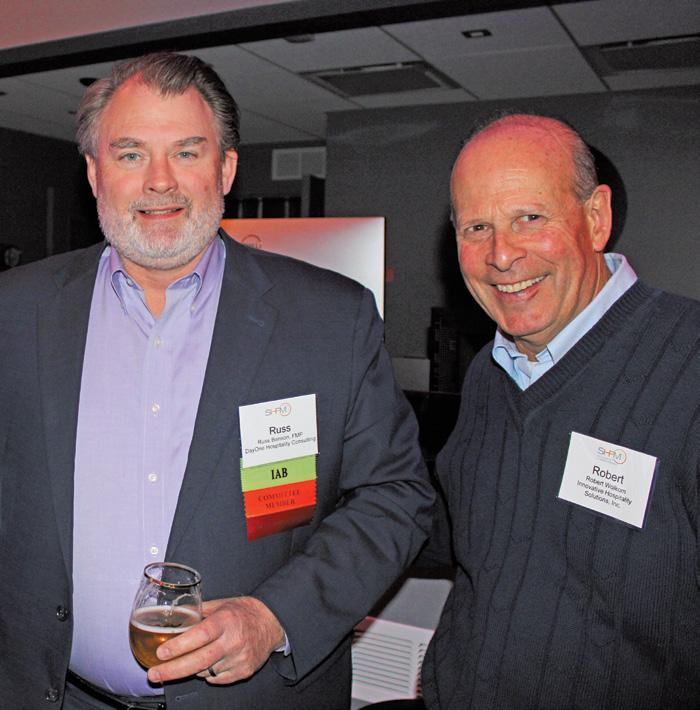


In the fast-paced, stress-inducing world we live in, Rage Rooms are offering a unique and cathartic outlet for people to vent their frustrations. Guests can don protective gear, grab a bat or hammer, and smash everything from plates to old electronics in a safe, controlled environment. But while the thrill of destruction is the main attraction, Rage Rooms are quickly discovering that a robust foodservice program can elevate their offerings and increase revenue. Adding food and beverages to the Rage Room experience enhances the overall appeal and encourages customers to stay longer, celebrate special occasions, or simply refuel after an intense smashing session. Here’s how Rage Rooms can leverage innovative kitchen solutions like AutoFry to create a winning combination of thrills and tasty treats.
These days, entertainment and dining increasingly go hand-in-hand, Rage Rooms can benefit immensely from incorporating a foodservice program. Here’s why:
• Extended Guest Visits: Customers are more likely to linger if they can enjoy food and drinks after their smashing session.
• Higher Revenue per Customer: Offering snacks, meals, and beverages increases the per-visit spending.
• Event Hosting: Birthdays, corporate team-building, and bachelor/ bachelorette parties are ideal for Rage Rooms with food options.
• Unique Experience: A curated menu adds to the overall appeal, turning a Rage Room visit into a memorable outing.
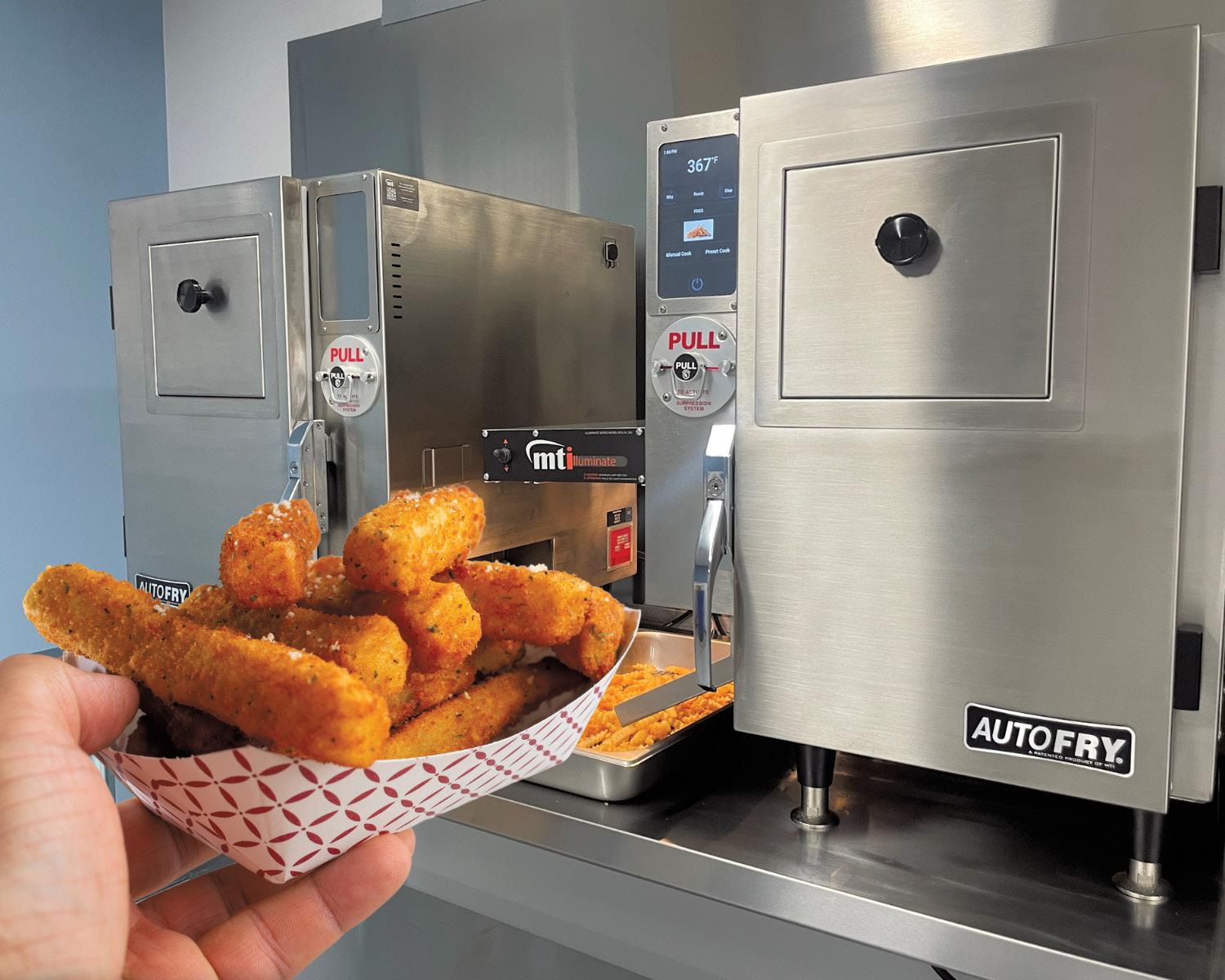
Ventless kitchen equipment like the AutoFry is a game-changer for Rage Rooms looking to add foodservice without the need for extensive renovations or costly ventilation systems. Here’s how AutoFry can help:
• Ease of Installation: AutoFry’s ventless design allows it to be installed virtually anywhere, making it perfect for facilities not originally designed for food preparation. No Hoods? No Vents? No Problem!
• User-Friendly Operation: This fully enclosed fryer is simple to operate,
making it ideal for staff with minimal culinary training.
• Safety First: AutoFry’s enclosed system minimizes the risk of accidents, a crucial factor for non-traditional foodservice settings.
• Wide Menu Options: With the ability to fry a variety of items, AutoFry enables Rage Rooms to offer a diverse and appealing menu.
The ideal Rage Room menu should be
continued on page 106
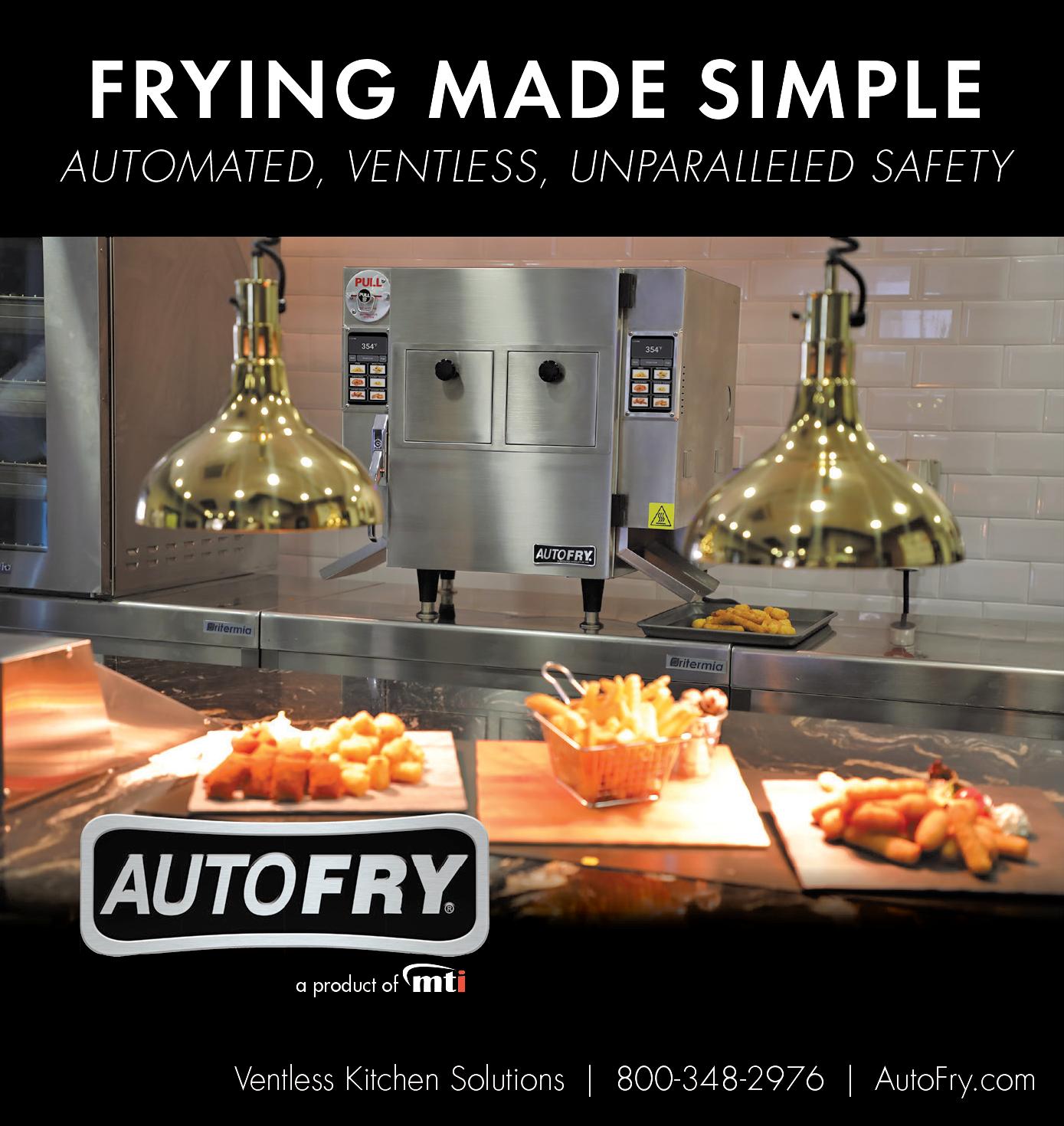
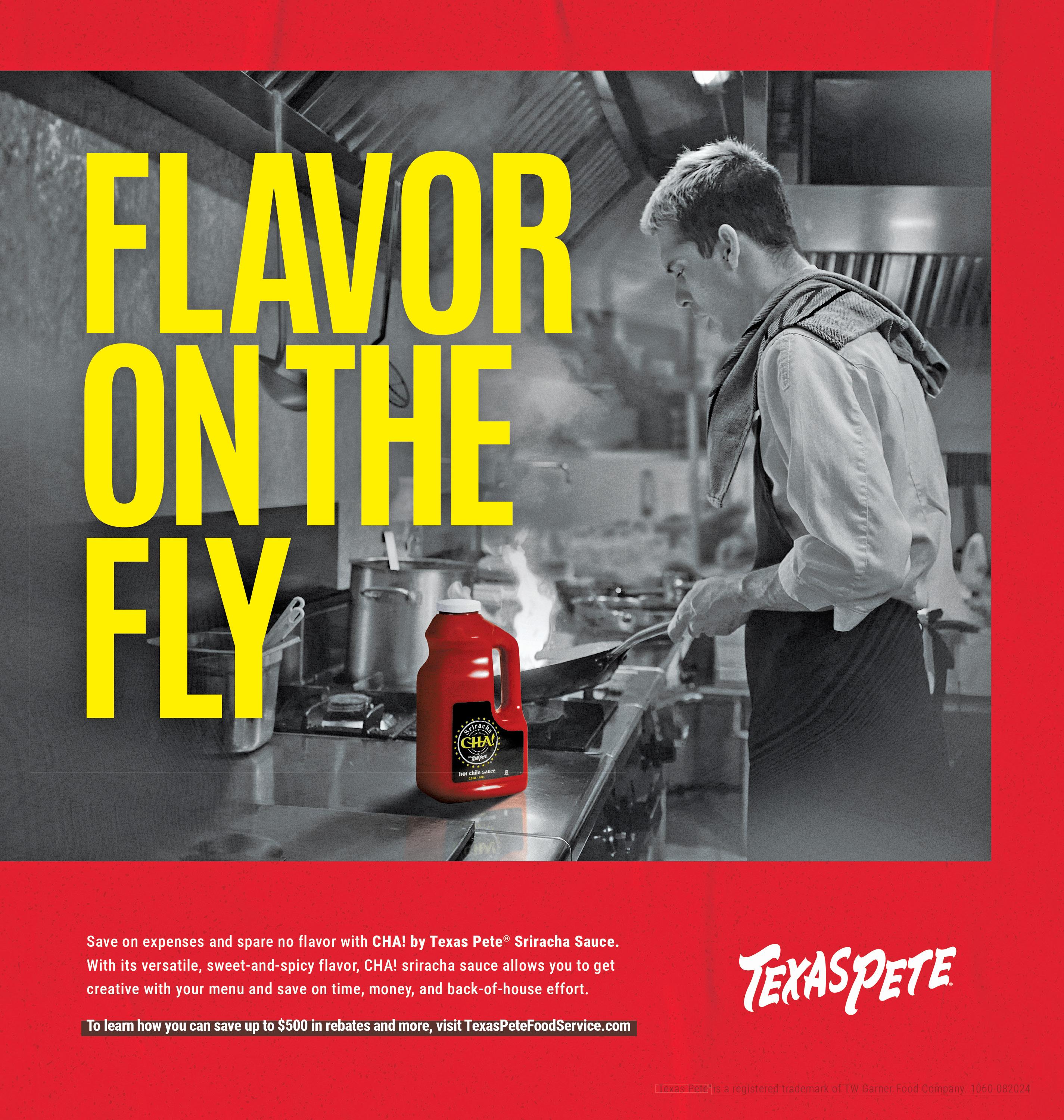
Labor shortages and inflationary food costs have presented unprecedented challenges to restaurant and foodservice operators across the country. With rising wages and fewer workers, coupled with the escalating price of ingredients, maintaining profitability has become a daunting task. Amid these pressures, operators are seeking solutions that deliver quality, consistency, and ease of preparation.
Enter fully cooked Australian lamb, a versatile and labor-saving product line that helps restaurateurs address these challenges while crafting craveable, creative, memorable menus. According to Jaclyn Oyola, CEO of Aussie Select, “We designed our products with the modern operator in mind. Whether it’s for a charcuterie board, breakfast burrito, or upscale sandwich, Aussie Select makes it easy to bring an elevated, globally inspired protein to menus.”
Australian lamb is pasture-raised, grass-fed, and Halal-certified, providing a sustainable, high-quality protein option that meets the demands of today’s conscious consumers. But beyond its ethical and environmental appeal, its practicality in the kitchen makes it indispensable for labor-strapped operations. “Labor is one of the biggest pain points for operators today,” said Oyola. “With Aussie Select, there’s no need for extensive prep. The lamb arrives pre-cooked, frozen for easy storage and long shelf life, and ready to use. Just thaw, slice, or cube it, and you have a consistent, premium product with zero waste.” By eliminating the need for on-site cooking, Aussie Select allows kitchens to save time and
labor while maintaining high-quality menu offerings. The product’s extended shelf life also ensures operators can control shrink and avoid unnecessary food costs.
Aussie Select lamb is incredibly versatile and can elevate menus across various formats, making it a valuable addition for foodservice operators. It works beautifully on charcuterie boards, offering a flavorful, non-pork protein alternative that enhances variety. For breakfast menus, lamb pairs surprisingly well with eggs, making it a standout ingredient in dishes like breakfast burritos, shakshuka, and frittatas. At lunch, it shines in handheld formats, such as lamb pastrami BLTs or Mediterranean-inspired wraps. It also adds global flair as a pizza or flatbread topping, paired with ingredients like tzatziki or harissa for a Middle Eastern twist.
For more refined offerings, Aussie Select lamb performs exceptionally well in center-of-plate entrées, such as sliced roasted lamb for fine dining or first-class in-flight meals. Its flexibility makes it suitable for catering, dine-in, or takeout, allowing chefs to innovate and create standout dishes across meal occasions.
“We’ve seen chefs use our products in everything from lamb French dips to lamb-wrapped asparagus,” Oyola noted.
“The product’s flexibility lets operators get creative, whether it’s for catering, dine-in, or takeout.”
In addition to labor savings, Aussie Select lamb aligns with key consumer trends. Millennials and Gen Z diners are drawn to lamb’s novelty and nutritional
continued on page 116
“With Aussie Select, chefs can elevate menus without elevating labor costs or stress.” — Jaclyn Oyola

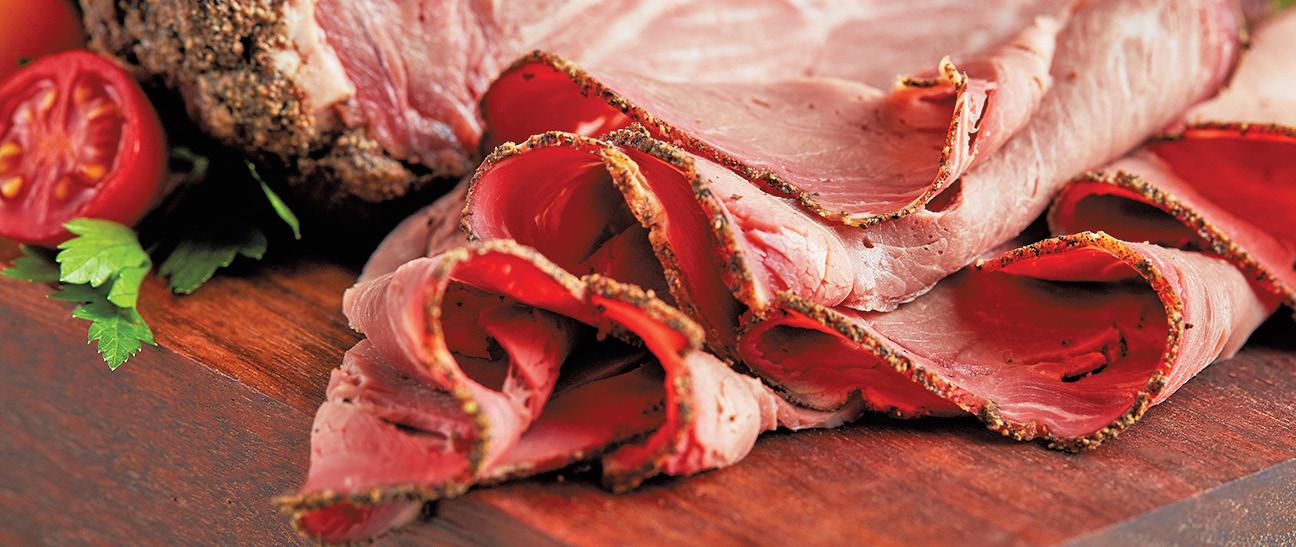
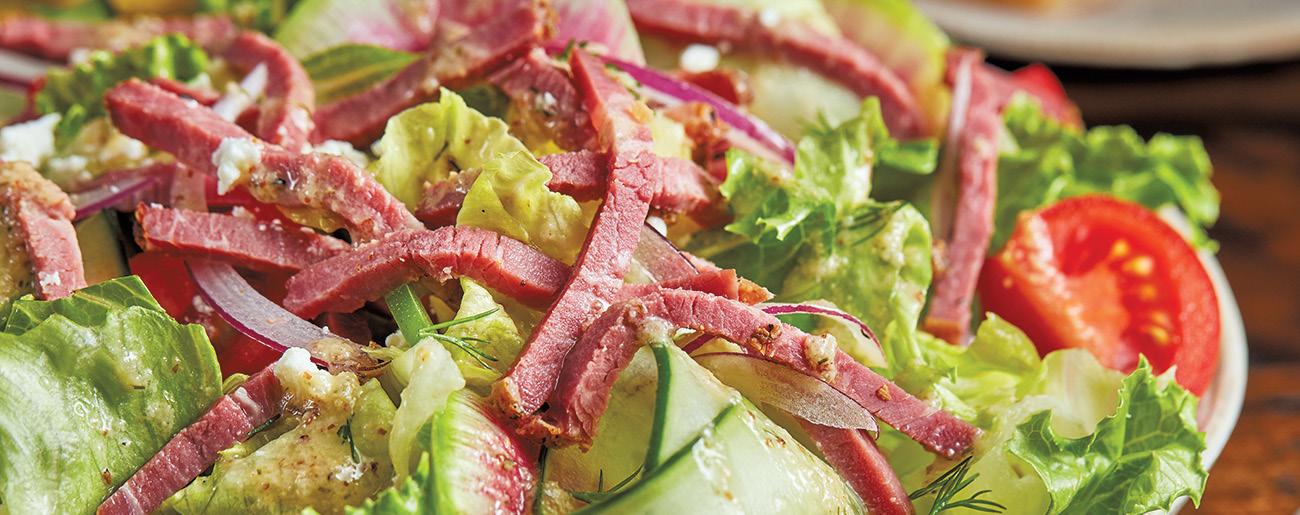

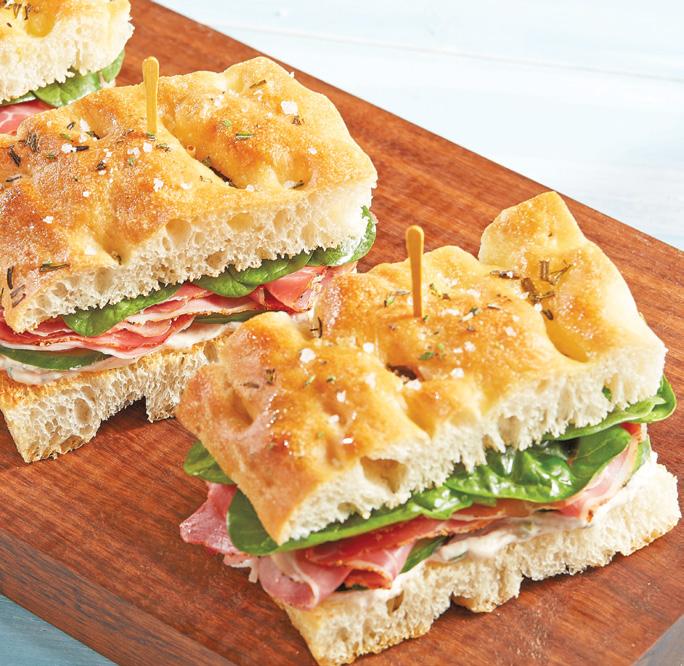

Pickled, marinated, roasted, even raw…I love beets in any way, shape, or form you can imagine. For many people, their only awareness of how to consume beets is from a can. But trust me, eating fresh beets offers a whole different culinary experience, and is definitely a tasty treat.
Growing up in my village of Thermo, Greece, we liked them presented in their simplest and most delicious form. Harvested fresh from the garden, we’d boil them up, slice them, then toss in a little olive oil, vinegar, (or lemon depending our mood or what we had handy), and finish by mix in some minced garlic, salt, and pepper.

Beets have been around since ancient times, and permeate history. The earliest signs of cultivation trace back to approximately 4,000 years ago in the Mediterranean. During that time, people ate only the leaves of the beets, while the root was generally believed to be of great medicinal value. It wasn’t until the 16th century that the root of the beet was first recorded as being cultivated for consumption in either Italy or Germany. However, it wasn’t until two centuries later, when French chefs adopted the idea that it was a vegetable that could not only heal but be enjoyed, and its popularity skyrocketed.
According to legend, beets were also considered to be a favorite among several of the Greek Gods. It has been said that Aphrodite, the goddess of love, ate beets to enhance her beauty.
Historically, beets have been considered an aphrodisiac in many cultures, with some of the lore being that if a man and a woman ate from the same beet, they were destined to fall in love.
Ancient Romans believed that beets, and their juice, promoted amorous feelings.
Beets are bulbs that can be found growing all around the world, though they grow optimally in deep fertile soils with good drainage. Whilst beets are sun-loving vegetables that grow well in full or partial sunlight, they don’t particularly like extreme heat –nothing more than 85ºF.
While they can be grown in my homeland of Greece, they are only found on a large scale on the plains of Thessalía, Makedonía, and Thráki,
yielding sweeter and more tender crops during their peak period, from June to October. Beets also grow well in cooler climates, and at higher altitudes. In Costa Rica, beets are considered an important vegetable, and found throughout markets in urban and rural settings. The dominant producing country in Europe is Poland, though a popular vegetable throughout all of Europe.
Beets are one of the hot new 'superfoods,’ and are experiencing a culinary revival, being rediscovered by some, and for others discovered for the first time. These rich, ruby gems are nutrient-dense, and backed by research showing they can be helpful in reducing blood pressure, improving blood circulation, and even cognitive

Chef Maria Loi is an entrepreneur, Greek food ambassador and healthy lifestyle guru. The author of more than 36 cookbooks, she is also the host of the award winning PBS series, The Life of Loi: Mediterranean Secrets, now airing its second season on PBS stations nationwide. Both seasons 1 & 2 are available to stream on PBS Passport, Amazon Prime Video, Apple TV, Amazon Freevee, Roku, and Plex TV. The Life of Loi aims to build an inspirational, educational movement around the Mediterranean diet and lifestyle. Loi Food Products, her specialty brand built on traditional ingredients from Greece, includes refrigerated dips, savory pies, pastas, botanical herbs, and olive oil sold on QVC, at Whole Foods Markets, Fresh Direct, and at other retailers. Chef Loi is also the namesake of the acclaimed restaurant, Loi Estiatorio, in the heart of Midtown Manhattan. Connect with her on LinkedIn, follow her on Instagram and Facebook, and learn more about her food philosophy at loiestiatorio.com/chef-loi/.
function. Recent studies also seem to indicate that beets can do everything from strengthen immunity to boosting athletic performance. As a result of the increasingly high demand for the now trendy beet, they have become, in some parts of the country, quite pricey, a simple matter of supply and demand.
As a vibrant and colorful vegetable, beets are loaded with vitamins and minerals including potassium, sodium, iron, folate, phosphorus, magnesium, calcium, vitamin C, and B vitamins including thiamin, niacin and riboflavin.
Beets are also rich in antioxidants, getting their deep color from one known as betalain, giving beets their deep pigmented hue, which has potent anti-inflammatory properties. They are a great source of fiber and contain phytochemical compounds, which have protective properties.
continued on page 58

Before tossing them into the garbage can, or down the disposal, fight that temptation and hold onto those precious greens – the tops of the beets. They contain beta-carotene, lutein, and zeaxanthin, all of which are important for eye health.
While often overlooked, beet greens are some of the most nutrient-rich greens around, containing more antioxidants and other phytonutrients than the bulbous roots from which they grow. They are also higher in iron than spinach, one of their main competitors.
No matter which way you slice it (or dice it, or shave it), beets are incredibly versatile in a culinary setting…
In a Salad: I love a simple salad with beets. It’s great for both family dinners, and entertaining because beets are so vibrant in appearance. Though I prefer roasted, shaved raw beets lend a beautiful crunchy texture and earthy sweetness to salads.
However, my go-to recipe for Patzaria Salata (Beet Salad) includes a mix of roasted beets, salad greens, manouri cheese (a 100% sheep’s milk cheese), and walnuts, all of which are then tossed with a vinaigrette made with olive oil and red wine vinegar.
It’s worth noting that the key to roasting the beets is to take it slow. Place them on parchment paper on top of tinfoil, drizzle with olive oil, and then wrap them up into neat little bundles and cook for an hour or so in a hot 425ºF oven.
I also love salt-roasting them, which I do by placing a layer of salt on the bottom of a pan, coating the beets in olive oil, and then covering the entire pan with foil. The result is a lightly seasoned and perfectly roasted bulb.
Pickled Beets: If you haven’t tried making them, pickling beets is fun, easy,
and tasty. In general, you’re taking freshly cooked beets, reserving some of the water they were boiled in, and then adding a simple brine of pickling salt, sugar and white vinegar (or, if you’re not partial to the taste of white vinegar, you can use red wine, rice wine, or cider vinegar), along with any spices you like.
Made Into a Soup: There are a variety of ways of making a beet soup, some creamy, some savory, whatever suits your taste. A classic beet soup is a blended mix of roasted beets, potato or parsnip (a starchy vegetable), onion, garlic, a squeeze of lemon along with a bit of zest, some salt and pepper. I like finishing the soup off with a nice dollop of Greek yogurt, sprinkled with some dill for garnish.
And for those wondering what the basic difference is between a beet soup and borscht -- borscht has a specific flavor profile which often includes cabbage, potatoes, and meat (usually beef or pork, but sometimes chicken or lamb).
Drink Up/Beet Juice: Beet juice can be a refreshing, energizing, immuneboosting drink. It can also aid in facilitate weight loss, and help the body rid itself of toxins. There are infinite
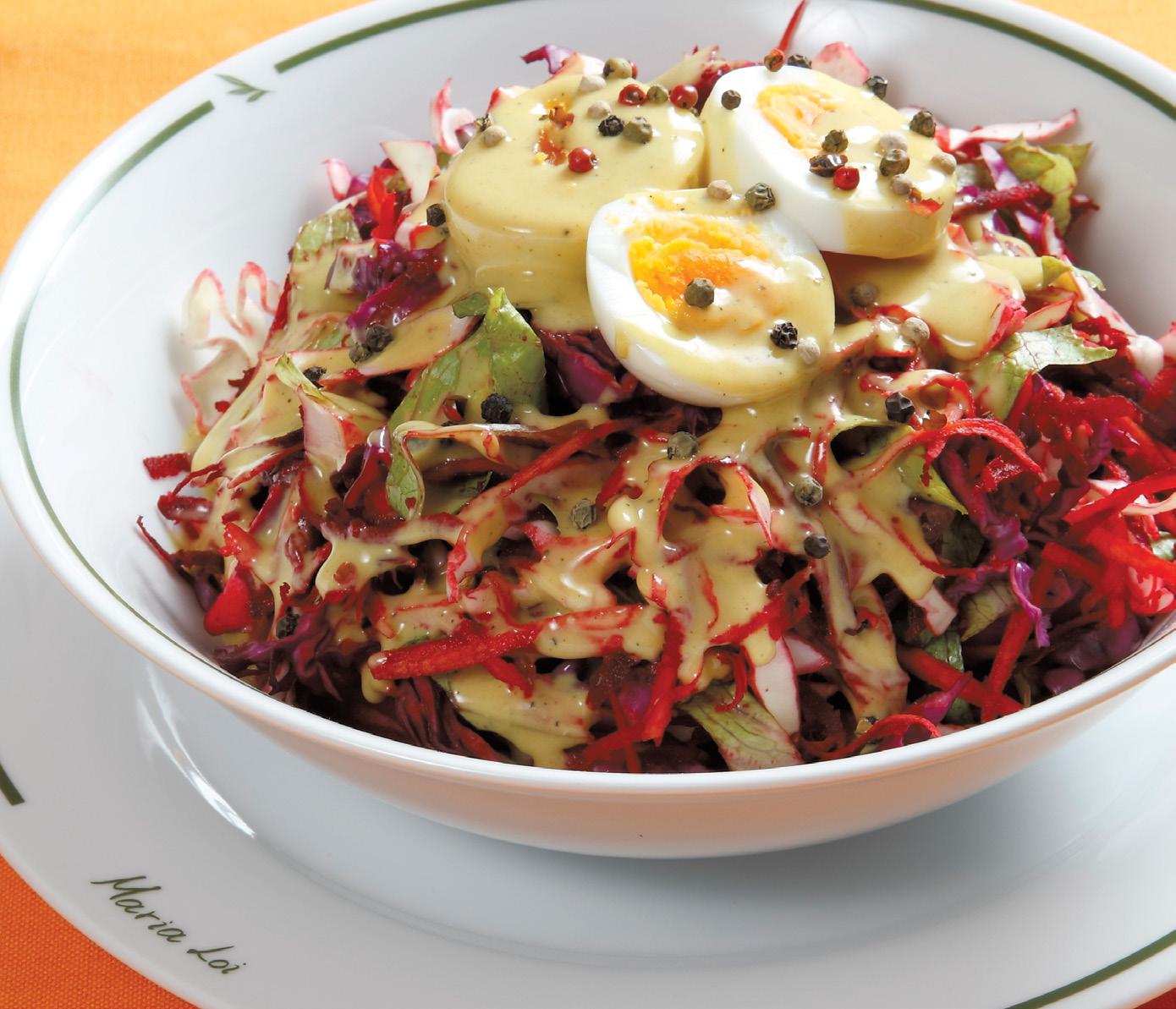
number of ways to add variety to this blended drink.
What I like to include is peeled raw beets with carrots, apple, lemon juice, ginger, and water as needed, which helps the blend achieve the exact consistency I like. While there are no official guidelines on what a recommended daily intake of beet juice would be, a cup a day, or 8-ish ounces of juice, has been shown to be help -
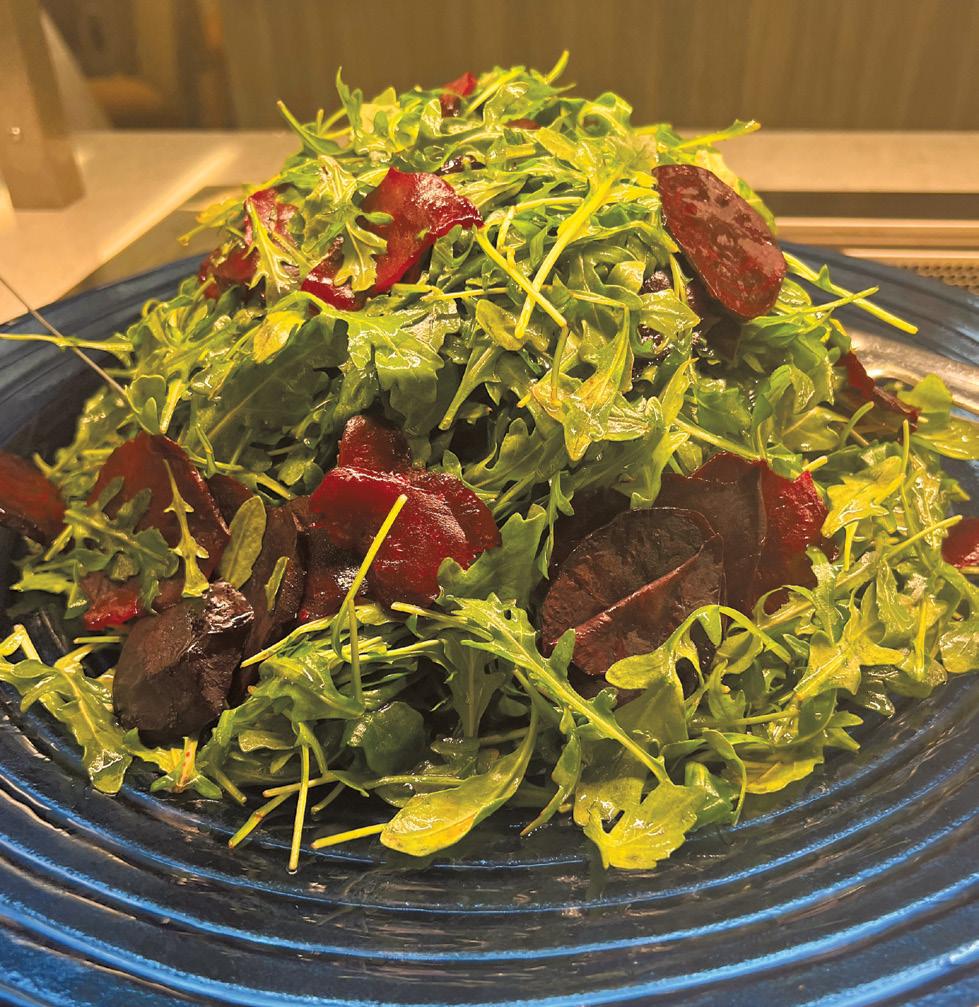
ful in lowering (in some people) blood pressure.
Beet the Clock
There is no doubt that beets can take a long time to cook, but there is a certain way of beating the clock: enter the pressure cooker. What can be an hour-long process can be reduced to a short 15 minutes, and the result is tender, flavorful beets that can’t be beat.

We Got the Beet I realize that some people have a bit of hesitation when it comes to eating beets. People can dislike them for a variety of reasons including the texture, and the distinct taste, which is sometimes described as earthy. That said, I am absolutely convinced that with the right ingredients, paired with some simple cooking techniques, those who may not have been fond of them will find their hearts and stomachs skipping a beat for beets!
All photo credits are Chef Loi



The PBAC Consultants’ annual gala, held this year at the iconic Harmonie Club in New York City, marked a pivotal moment for the Westchesterbased equipment and supply representatives. With a record turnout of industry leaders and creative kitchen designers, the evening was not only a celebration of PBAC’s achievements but also a glimpse into its bold future.
The event was headlined by the announcement of new leadership for PBAC. Joshua Erdheim was named President Elect, while Damon DeMercurio stepped into the role of Vice President of Sales. Also named to the leadership team were Lisa Kerester, Jeff Youker, Cory Perez, & Joshua Finn. These transitions signal a generational shift in leadership, as PBAC co-founders Michael Posternak and


Steve Bauer, along with owners Sarah Haviland (Larry Cantamessa’s wife) and David Aikenhead, prepare to pass the torch to the next wave of innovators.
“The PBAC team has always been about growth, innovation, and excellence,” said Erdheim. “Our rebranding—including the new logo and website—is a statement of our commitment to a bright and bold future.

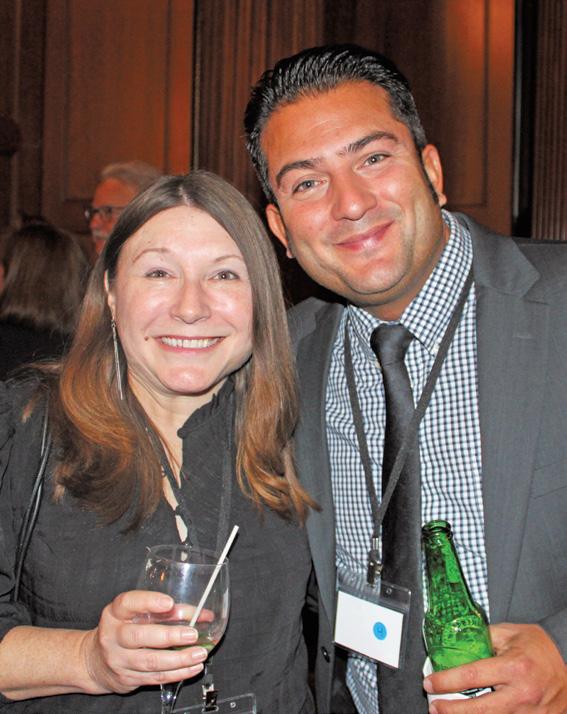
It reflects the dynamic and forwardthinking approach we’re taking as we prepare for 2025 and beyond.”
The Harmonie Club proved to be the perfect setting for PBAC’s biggest event yet necessitated by the gala’s growing popularity. The night featured a standout performance by Broadway alumna and celebrated singer-songwriter
continued on page 112
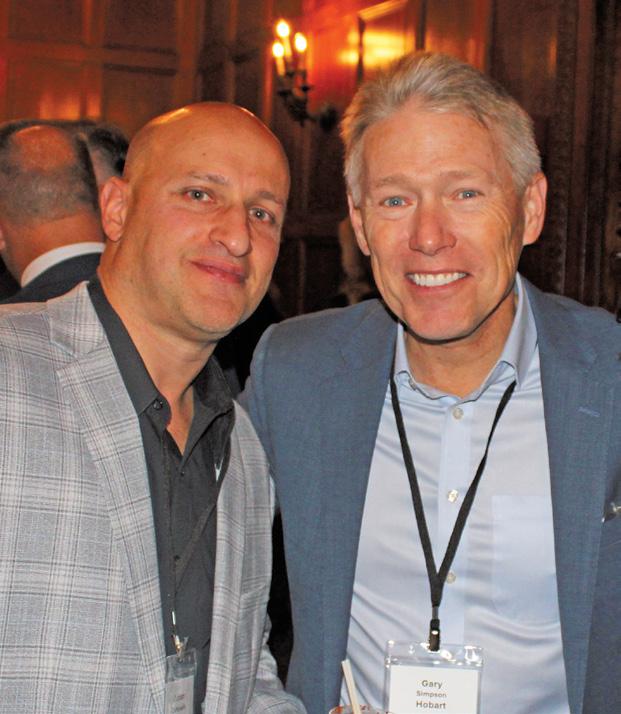



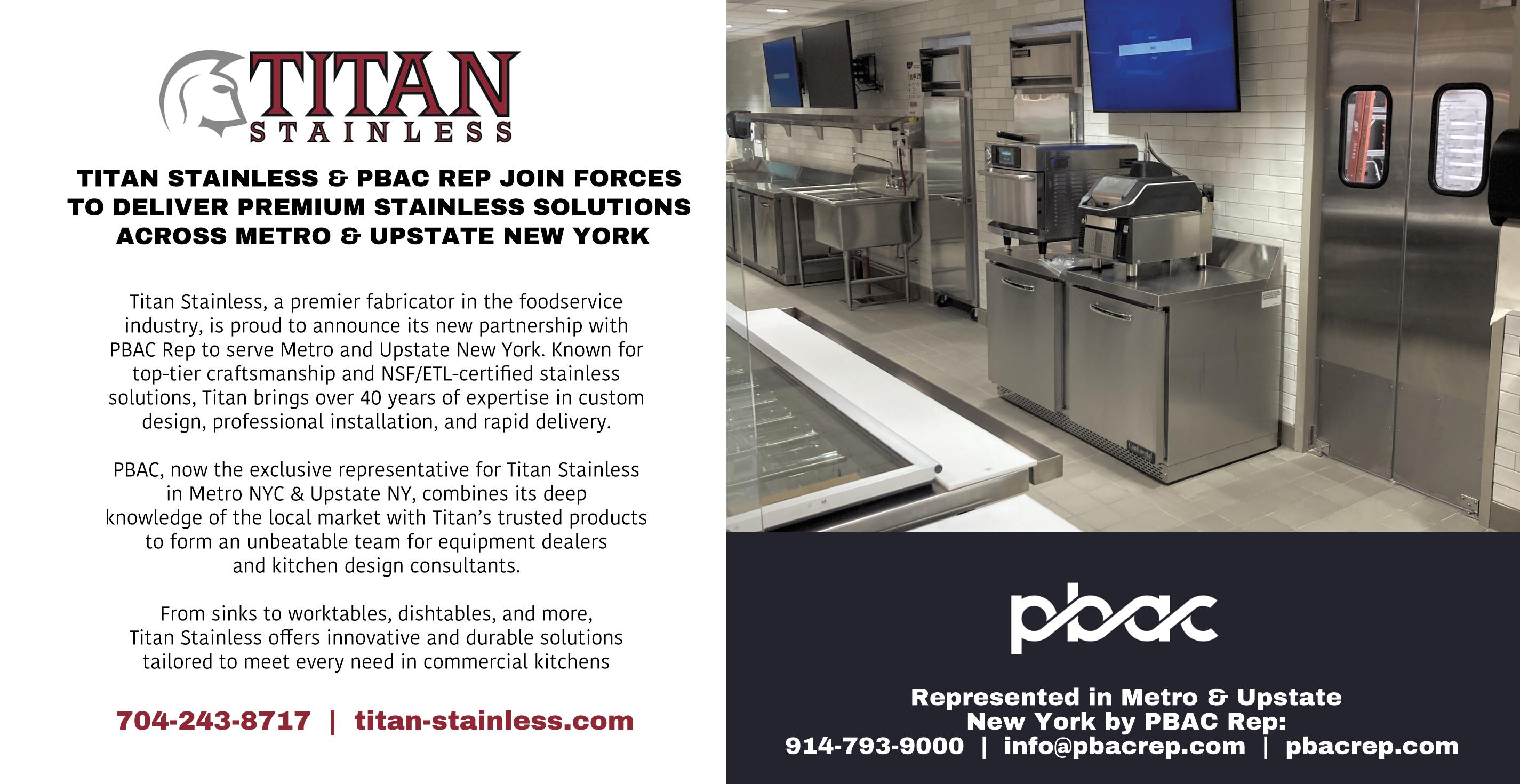
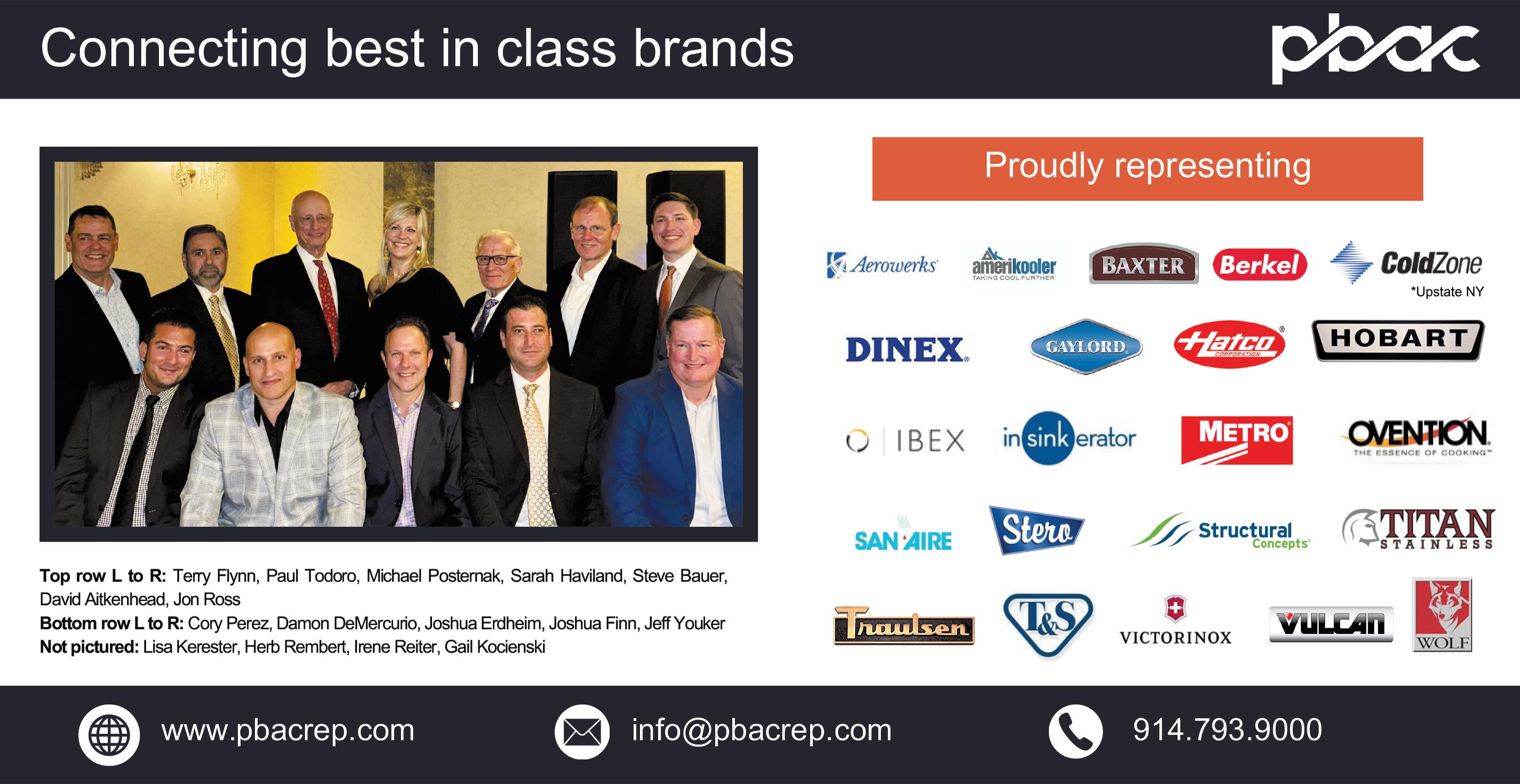

Detroit: The City of Chefs
Keith Famie, a local filmmaker and chef’s 1 hour, 35-minute documentary film chronicles and is a deep look into the Detroit’s culinary world through interviews with notable metro Detroit chefs, restaurants and the hospitality industry. The documentary covers several decades starting from the 1950s and 1960s to the present day.
The film includes interviews with prominent metro Detroit restaurateurs, including the late Joe Muer Jr. of Joe Muer restaurants and Joe Vicari of the Joe Vicari Restaurant Group with two dozen restaurants under its umbrella including the Andiamo group of restaurants. Featured in the film are longtime and prominent chefs including Brian Polcyn, Shawn Loving and Paul Grosz.
“I’ve been wanting to tell this story for 20 years,” Famie told the Free Press in 2023 announcing the film production. “These were the guys that were the hot chefs in the '80s and '90s.”
Those interviewed for the film include both past and present culinarians. They are some of Detroit's most recognizable chefs who molded metro Detroit's culi-




nary scene decades ago as well as chefs and restaurant owners who are shaping it today.
Many of those chefs worked with and learned from well-known European chefs like Milos Cihelka from Czechoslovakia, French-Canadian chef Douglas Grech, known as Chef Duglass, and Yvonne Gill, who hailed from New Zealand, Famie said. Cihelka is known as the "godfather of chefs" in metro Detroit and is responsible for creating and founding in 1970 the Michigan Chefs de Cuisine Association, a professional organization for chefs.
The film also highlights the role and impact of metro Detroit's culinary arts schools including Schoolcraft College with its many master chef instructors, the culinary arts programs at Oakland Community College and Macomb Community College.
Matt Sartwell, Managing Partner, Kitchen Arts & Letters Bookstore in New York City shares his book reviews...
Eleven Madison Park: The Plant-Based Chapter (Limited Edition) by
Daniel Humm


The first restaurant to win three Michelin stars while serving a fully vegan menu, New York’s Eleven Madison Park is handsomely represented in this limited-edition set of three books in a slipcase. All copies are signed by Chef Daniel Humm, and hand numbered. The most extensive volume (227 pages) is Recipes. Seasonally organized, the recipes for 88 plated dishes are each accompanied by a photograph. Complex assemblies of multiple components–white asparagus grilled with green almonds and ginger involves at least six subrecipes–these dishes feel wholly original and would be arresting on any fine dining menu.
They are supplemented by more than 300 recipes for additional components for everything from a sunflower petal kimchi to an arugula tapenade.
Backstage (148 pages) consists of photographs by Ye Fan of the restaurant’s transformation from 2021 to 2023. Her candid photographs reveal the restaurants staff at work and in occasional relaxation, providing images of focus, camaraderie, and introspection.
Drawings is a portfolio of Daniel Humm’s watercolor continued on page 106

From handcrafted wood-fired pizza ovens to high-speed ovens and thermoplastic slip-resistant flooring, the foodservice equipment industry offers a dizzying array of solutions. Behind every high-quality product lies an equipment rep—once seen as a transactional intermediary but now an indispensable consultant and strategist.
For Succession Reps, a fourth-generation company led by the Kaufmann family, adapting to the changing needs
of kitchen equipment dealers, consultants, and operators is central to their rebranding and mission. “The rebranding of Kaufmann & Associates to Succession Reps reflects our commitment to evolving with the industry while honoring our legacy,” says Dan Kaufmann, Vice President of Sales at Succession Reps.
“It’s about more than selling—it’s about creating value through knowledge, relationships, and operational solutions.”
Succession Reps embraces a consultative approach to align with today’s


market. “Our role has expanded to help navigate operations, technological advancements, and evolving market demands,” Kaufmann explains. “It’s not just about the equipment anymore—it’s about how that equipment works for the operator.”
As operators face staffing shortages, regulatory challenges, and space constraints, reps need to understand more than specs. For instance, when assisting a kitchen consultant in designing a university cafeteria, Succession Reps does not stop at providing top-tier modular shelving or blast chillers. They assess workflow bottlenecks and offer tailored solutions, such as ventless high-speed ovens for faster turnaround in limited spaces or pollution control units for wood-fired kitchens.
Rebranding to Succession Reps is more than a name change—it’s a strategic move to align with the future of foodservice. “The industry is shifting rapidly,” says Kaufmann. “Our new branding sends a clear message that we’re not just here to sell; we’re here to be a partner, a resource, and a problem solver.”
The Succession team is carefully built to meet the unique needs of Metro New York’s equipment and supply dealers and consultants. Led by Mark Kaufmann, CEO, and Adam Kaufmann, President, the team combines decades of expertise and dedication. Dan Kaufmann, Vice President of Sales and Marketing, drives growth and client relationships, while Bradley Kaufmann, Vice President of Operations, ensures seamless day-to-day efficiency. Marisa Givliano, a skilled Sales Representative, delivers tailored solutions, and
Jenn Anderson, Office Manager, keeps operations running smoothly. Together, this dynamic team provides exceptional support, ensuring clients receive top-tier service and results.
John Pennington, Vice President/ Director of Sales and Marketing at AccuTemp Products, Inc., highlights the team’s impact. “The Kaufmann’s and Succession are a trusted partner for us in their role as our manufacturer’s representative for AccuTemp in the NY metro and Northern New Jersey areas. In this role, they call on Consultants, Dealers, and End Users of our products and promote our brand of steam equipment to all of them,” Pennington noted. "They have built this trust with years of dedicated service in this area.” He also commends the Kaufmanns’ approach to service, adding, “We love working with the Succession team as they are very responsive and believe in providing the best customer service and customer experience possible, which aligns with our goals as well.”
Succession Reps’ extensive portfolio includes everything from high-end steamers and griddles to premiumquality combi steamers and to-go hot food holders. This diversity allows them to cater to a broad spectrum of needs. “We pride ourselves on helping dealers and consultants select the right tools for every challenge,” Kaufmann notes. The rise of technology has put vast amounts of information at consultants’ and operators’ fingertips, but Kaufmann sees this as an opportunity rather than a threat. “The biggest thing we can give
continued on page 114


RATIONAL USA, the leading manufacturer of intelligent cooking equipment for commercial foodservice, recently announced the following promotions and additions:
David Johnivin has been promoted to Corporate Chef, iHexagon. Prior to this, Johnivin was the Regional Sales Manager for Minnesota, Wisconsin, and the Dakotas. Now, Johnivin will be reporting to Paul Milione, Director of Product Management.
Zac Lennox has joined RATIONAL as Corporate Chef, iHexagon. Prior to joining RATIONAL, Zac was working at Palacios Murphy. He will be reporting to Paul Milione, Director of Product Management.
"With the iHexagon, we’re redefining the future of professional kitchens, pairing cutting-edge innovation with the trusted culinary support RATIONAL is known for,” said Paul Milione, Director of Product Management. “This state-of-the-art technology isn’t just about transforming how food is prepared; it’s about empowering chefs with the tools, expertise, and guidance they need to push boundaries, inspire creativity, and consistently deliver excellence on the plate.”
“At RATIONAL, we believe that innovation is only as strong as the support behind it, and with the iHexagon, you’ll have both. Expanding our resources ensures that as we revolutionize the way kitchens operate, we also deliver the hands-on guidance and expertise our customers deserve.”
About RATIONAL: The RATIONAL Group is the world market and tech -

"With the iHexagon, we’re redefining the future of professional kitchens, pairing cutting-edge innovation with the trusted culinary support RATIONAL is known for.” — Paul Milione, Director of Product Management, RATIONAL
nology leader in the field of hot food preparation for professional kitchens. Founded in 1973, the company employs more than 2,500 people worldwide. RATIONAL is listed on the Prime Standard of the German Stock Exchange and is included in the SDAX.
To learn more about RATIONAL products and services, attend a RATIONAL Live event to see how we help commercial kitchen operators do more with less space, waste, energy, cost, and stress: https://www. rational-online.com/en_us/experience/rational-live/
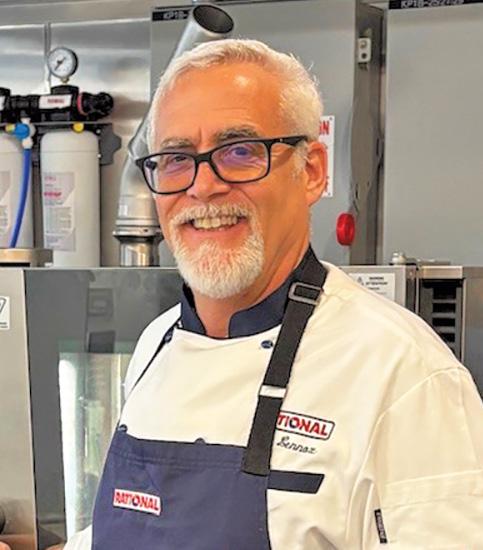

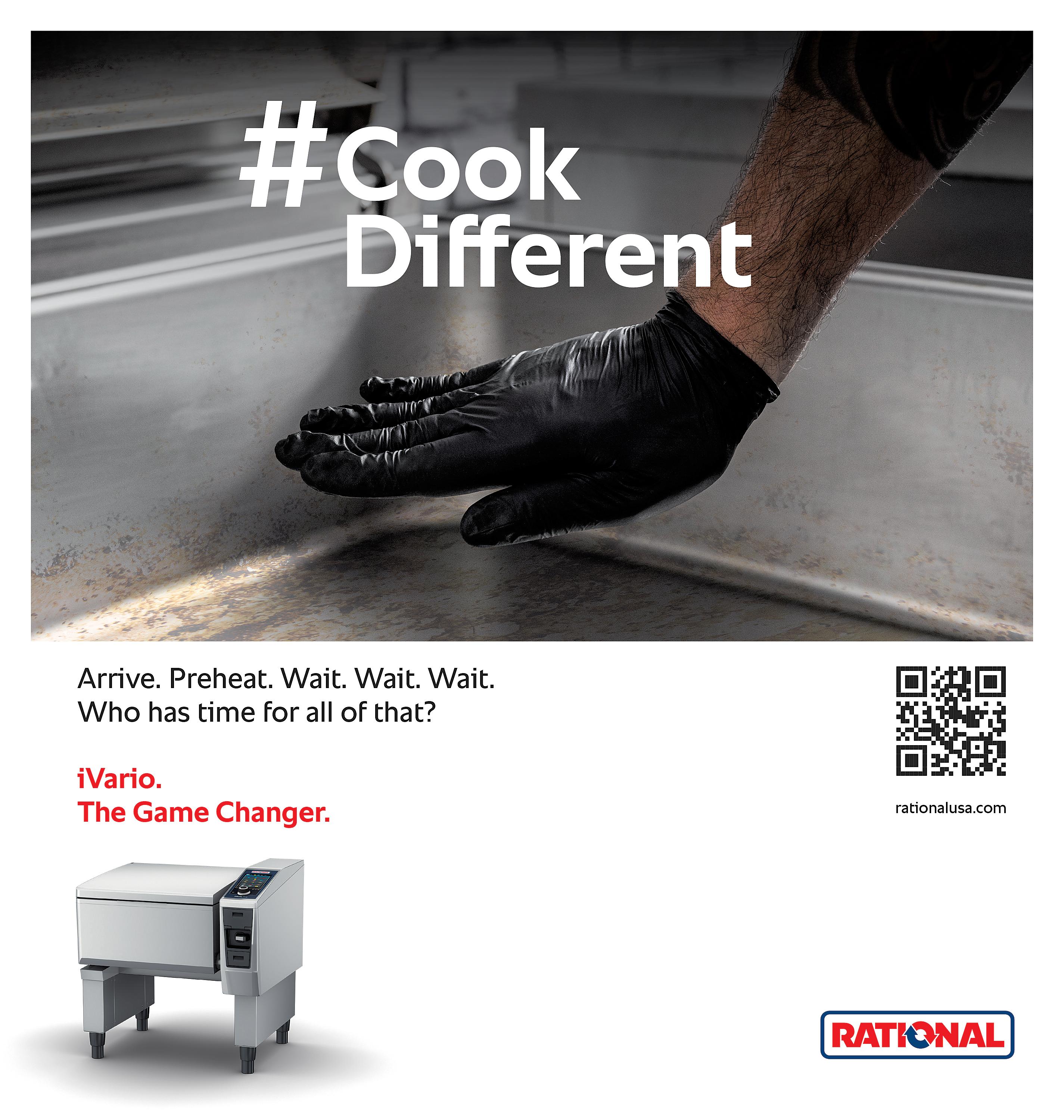
The American Jewish Committee (AJC) has long been a beacon of advocacy, education, and leadership, championing civil rights and combatting antisemitism globally. With roots dating back over a century, the AJC fosters connections between communities and inspires initiatives that promote tolerance, inclusion, and justice.
One of its most dynamic initiatives, the AJC-Foodservice & Paper Division, has become a vital arm of this mission, bridging the foodservice industry with causes that impact the broader com-
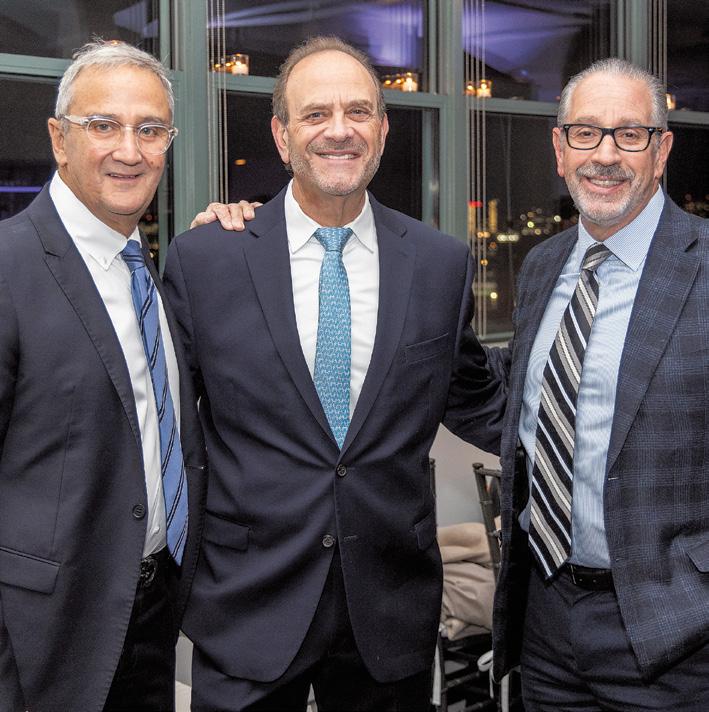

munity. Through events like the Annual Tribute Dinner, the division highlights industry leaders whose contributions extend beyond business success, showcasing their dedication to social responsibility and unity.
Last month, the AJC-Foodservice & Paper Division hosted its 63rd Annual Tribute Dinner at Tribeca 360°, a venue renowned for its stunning views and modern elegance. Over 300 industry leaders, advocates, and supporters gathered to celebrate the achievements of distinguished honorees and reaffirm their commitment to fighting an-
tisemitism and fostering community.
Rob Monroe, Chair of the AJC Dinner Committee, set the tone for the evening with his warm welcome. “This event is a testament to the power of collaboration and shared values,” Monroe remarked.
The event shone a spotlight on three sets of honorees, each recognized for their significant contributions to the foodservice industry and beyond. Penny Hutner and Danny Schwartz lead Advance Tabco, a fourth-generation family business known for its innovative manufacturing of commercial kitchen equipment. Fred Singer of

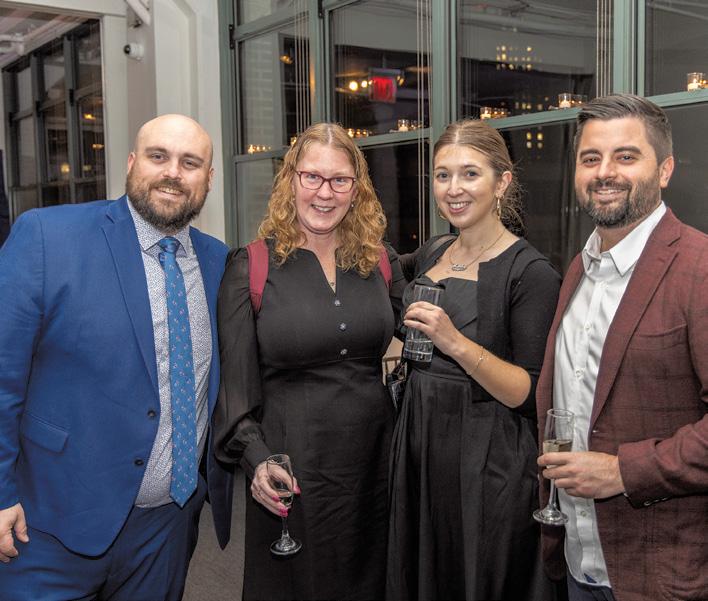

Singer Equipment introduced the pair, detailing their company’s 94-year journey from humble beginnings in 1929 to becoming an industry cornerstone. “It was a wonderful evening being honored with this award,” said Hutner. “Fred Singer summarized with such passion the beginnings of Advance Tabco as detailed in our grandfather’s book.” She emphasized the importance of AJC’s mission, adding, “The organization has a lot of hard work ahead helping all recognize and prevent antisemitism. We

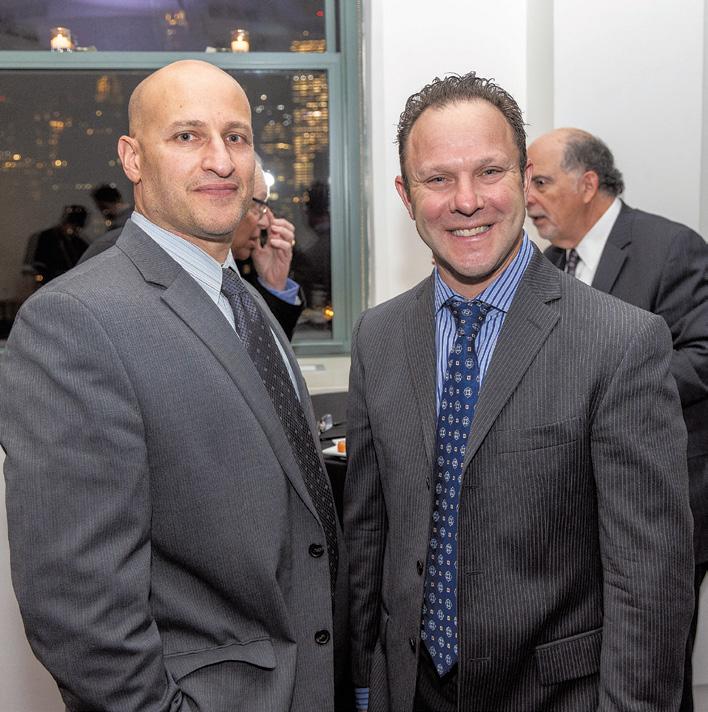

In the bustling world of foodservice, success relies on consistency, efficiency, and quality. One oftenoverlooked factor in this equation is the walk-in cooler or freezer—essential equipment that plays a central role in preserving food, optimizing operations, and ultimately driving profits. Choosing the right refrigeration solution isn’t about finding the cheapest option; it’s about securing the best value.
Walk-in refrigeration units ensure food safety and freshness by maintaining consistent, reliable temperature control. Whether storing perishable produce, dairy, or frozen meats, these units minimize spoilage and waste, which directly impacts the bottom line.
“Reliable refrigeration is critical for any foodservice operation,” said Hakan Inan, CEO of Galaxy Group. “A well-chosen walk-in cooler or freezer not only protects food quality but also reduces energy consumption and operational costs over time.”
Astra’s Quick Ship solution stands out due to the technical expertise behind its design. Developed by graduate-level engineers, the system is built on a foundation of advanced engineering principles. The result is a thoughtfully designed system of panels, optimized for size and efficiency, and kept in stock to allow for a wide range of configurations tailored to diverse needs.
The right walk-in design also supports kitchen efficiency. With customizable configurations and advanced layouts, foodservice staff can quickly locate and access ingredients, saving valuable time during peak hours. Beyond functionality, energy-efficient systems and highquality insulation help operators reduce utility costs while maintaining compliance with stringent health and safety standards.
Understanding the challenges and needs of modern foodservice opera-
“Quick access to reliable refrigeration solutions is no longer a luxury—it’s a necessity. With the Astra Quick Ship line, we’re delivering fully customizable units that ship within 48 hours, giving our dealers a distinct advantage in serving their clients.”
— Hakan Inan , CEO of Galaxy Group
tions, New Jersey-based Galaxy Group created the Astra series of walk-in coolers and freezers. This innovative line is built on a foundation of high-quality components sourced globally and assembled with precision to meet U.S. market demands.
“Our goal with the Astra series was to deliver unmatched value,” Inan added. “We shopped the world for the best materials and developed a line that combines exceptional performance with cost-efficiency. This means equipment dealers, consultants, and end-users get the best return on their investment.”
The Astra series from Galaxy Group exemplifies the intersection of innovation and practicality, offering walkin refrigeration solutions designed to meet the diverse needs of commercial kitchens, foodservice operations, and industrial facilities. With three distinct
product lines—Astra Quick Ship, Astra Custom, and Astra Warehouse—there’s a solution for every requirement.
When time is of the essence, the Astra Quick Ship line delivers. With over 300 pre-designed standard sizes and 2,000+ configurations (including door sizes, locations, and cooler/freezer combos), these units provide rapid access to highquality refrigeration. Available in cooler heights of 7’3” and freezer heights of 7’7”, Quick Ship units are equipped with allcam-lock panels for easy assembly and superior insulation.
“These units are ideal for operators who need dependable refrigeration on short notice,” said Hakan Inan. “We’ve made it simple for dealers and consultants to meet their clients’ needs quickly.” Refrigeration options include boxonly models or systems with top-mount or remote cooling. Professional installa-

tion services further streamline the process, ensuring units are up and running efficiently. Easy Quoting & Specs are conveniently available in AutoQuotes to quote customers and access specifications with ease.
The Astra Custom line takes flexibility to the next level, allowing clients to design walk-ins that perfectly fit their space and operational requirements. With customizable heights up to 12 feet and various door styles—including swing and sliding options—these units cater to unique kitchen layouts and workflows. “Our Custom line is all about personalization,” Inan explained. “We want operators to have refrigeration solutions that integrate seamlessly into their operations.” Like the Quick Ship line, Astra Custom uses durable cam-lock panels with L-shaped brackets for added stability. Units ship within two to four business days, ensuring minimal disruption to busy schedules.
Add-ons like aluminum diamond plates, kick plates, and LED lighting further enhance functionality and aesthetics. “Every business has its own unique needs,” Inan explained. “With Astra, we’ve created a product line that adapts to those needs, ensuring our dealers can provide tailored solutions to their clients.”
For large-scale applications, the Astra Warehouse line offers the ultimate in size and durability. These walk-ins feature heights up to 20 feet and are built with reinforced cam-lock panels and heavy-duty doors. Whether for food manufacturing or storage facilities, these units provide robust solutions capable of handling high-volume demands.
“The Warehouse line is designed for businesses that need industrial-grade performance,” Inan said. “It’s about reliability and scalability.” With shipping timelines of four to six business days, continued on page 108

When you hear “microwave,” what comes to mind? Reheated leftovers? Soggy texture? For too many chefs, the microwave is an afterthought in the kitchen— “Chef Mike” something tucked in a corner for emergencies. But I’m here to tell you, it doesn’t have to be that way. In fact, when you invest in the right microwave technology and learn to use it properly, it can transform your kitchen operations in ways you might not expect.
Let me give you a peek into what’s possible. At Midea, we’ve developed commercial microwaves that aren’t just about speed—they’re about precision and consistency. And that’s the magic word for Chefs, isn’t it? Consistency. Whether you’re serving 2 plates or 200, you want every dish to taste, look, and feel the same. A properly programmed Commercial Microwave Oven can do just that.
One of the most exciting advancements in microwave technology is our inverter system. Unlike traditional microwaves, which blast full power on and off like flipping a light switch, inverter microwaves deliver continuous, adjustable power. What does that mean for your food? Imagine defrosting a filet of salmon. With oldschool microwaves, the edges might cook while the center stays frozen. With inverter technology, you get even, controlled heating that keeps the in-
tegrity of the fish intact.
I often say that microwaves are like sous chefs—they are the hardest working personnel in the kitchen (other than the team in the dish room) and can save you time and reduce waste if you train them right. For instance, you can use our Commercial Microwaves ovens to gently reheat sauces without scorching, soften butter in seconds, or even temper chocolate perfectly for desserts and pastry. And if you’re in a high-volume operation? Think about how quickly you can turn around items like steamed vegetables or prepped rice, pilaf, potatoes or other sides.
Now, let’s talk about an area where microwaves are absolute heroes: takeout and delivery. In the age of apps and convenience, customers expect their food to arrive at home just as good as it would at your table. That’s a tall order for any Chef. With Midea Commercial Microwaves, you can reheat or finish dishes right before packaging to lock in flavor and texture. For example, steaming proteins like chicken or fish ensures they stay moist and flavorful, even after a 20-minute drive to your customer’s
house. Or think about rice bowls—just a few seconds of steam from the microwave, and that rice goes from dry to restaurant-perfect.
Here’s the thing: A Commercial microwave is only as good as the chef using it. I’ve been in kitchens where the microwave sits idle because no one trusts it. That’s where training comes in. When I work with chefs and kitchen teams, I focus on day-part applications. In the morning, microwaves can make batch prep more efficient—think precooking bacon or steaming eggs for breakfast sandwiches. For lunch and dinner, they’re invaluable for reheating or finishing components without tying up the grill or oven. And don’t overlook desserts. I’ve shown teams how to make mug cakes, molten chocolate brownies, and steamed puddings with just a microwave. The reactions are always the same: “I had no idea a microwave could do that.”
Now, I know what some of you are thinking: “This sounds great, but how does it help my bottom line?” Let’s break it down. First, there’s the reduction in waste. Defrosting proteins evenly means


Chef Ken Megarr is a graduate of the prestigious Culinary Institute of America, and is currently the Director of Culinary Appliance Applications (Corporate Chef) at Midea, specializing in helping foodservice professionals leverage microwave technology. With over 30 years of industry experience, Chef Ken was appointed on the Industry Advisory Council for the sweeping changes in the 1997 and 1999 USDA/ FDA “Food Code”. Chef Ken is passionate about improving kitchen efficiency, reducing waste, and delivering consistent, high-quality dining experiences. Connect with Chef Ken and his team for personalized advice and training on integrating microwave and High Speed Oven technology into your operations.
you’re not throwing away food that’s been half-cooked in the Commercial microwave. Precise reheating keeps dishes from drying out, so you’re not dealing with returns or remakes. Second, microwaves save time. Every second counts in a busy kitchen, and when you can shave minutes off prep or finishing times, you’re turning tables faster and keeping customers happier. Finally, let’s talk energy efficiency; other than a stainless steel table, Our Midea models are the most “Green” pieces of equipment in the kitchen – they are “instant on” and “instant off” – no pre-heat or residual BTU’s after they’re done – when they’re not working? They’re a “paperweight”, not using any energy until you need them to. What a great workhorse in any Commercial Kitchen. Go ahead – blanch off volumes of veggies or rice and portion them out – when that protein is just about to come off the grill or out of the sauté pan, throw that portioned “side” in
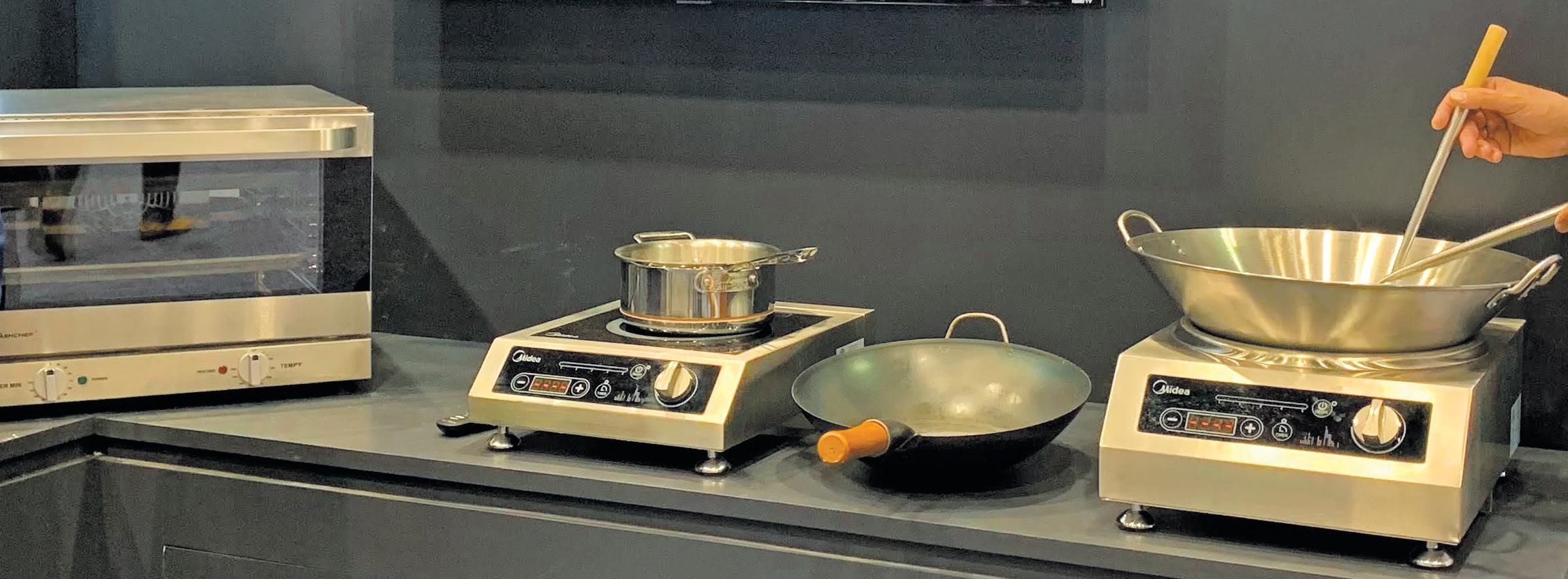

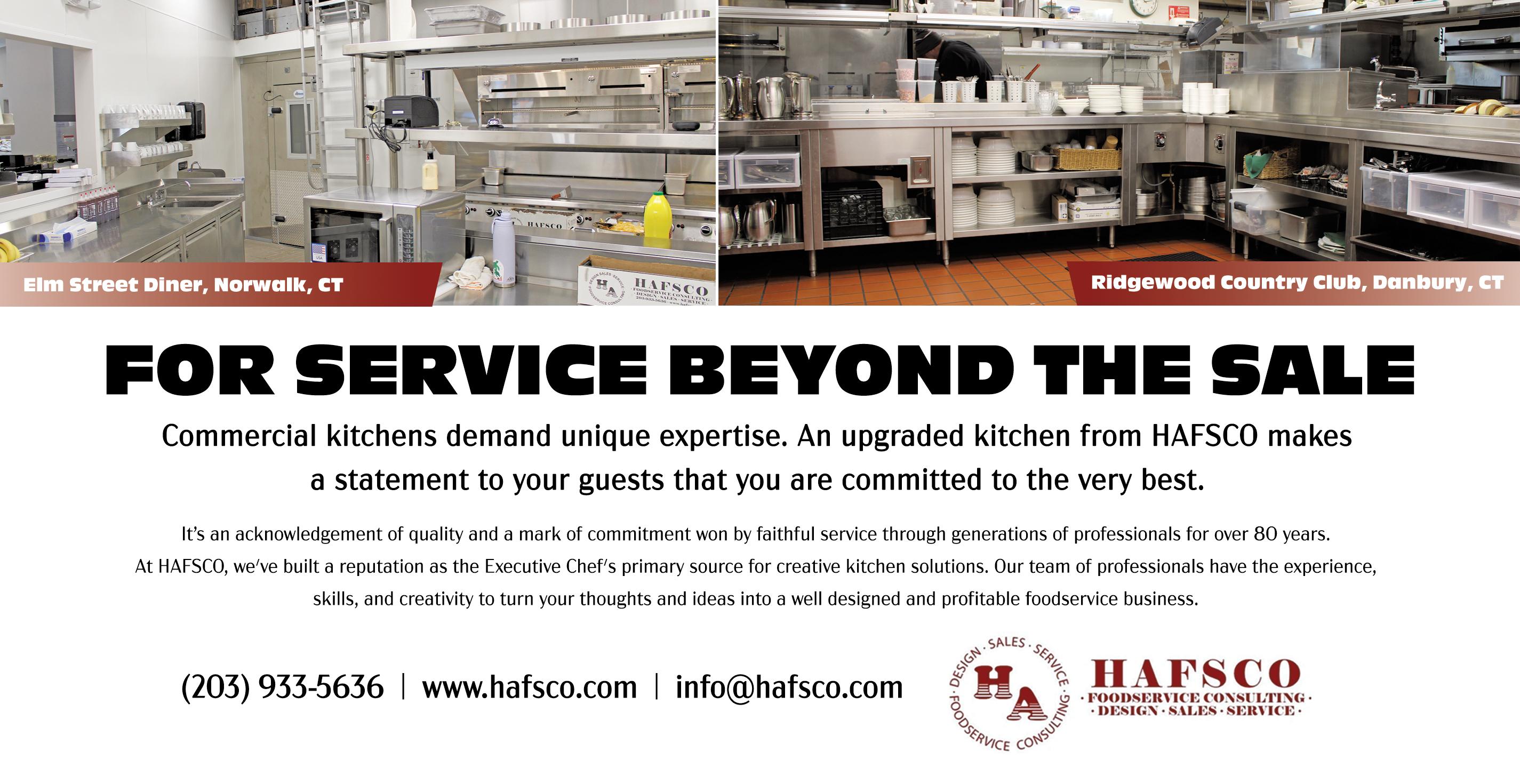
New York State has introduced a groundbreaking requirement for employers. Starting January 1, 2025, all private-sector employers in New York State, regardless of size, will be required to comply with an important new regulation: the Paid Prenatal Leave (“PPL”) law, introduced as an amendment to New York Labor Law § 196-b. New York’s PPL will make it the first state in the nation to mandate that employers provide paid leave as a separate benefit for employees who are pregnant or trying to conceive. In other words, PPL grants employees additional paid leave to be used only for prenatal healthcare services. Notably, PPL is a separate and new employee benefit, and should not be confused with any other employee-afforded leave already mandated by law.
1. Amount of Leave
Under the new law, employees are entitled to at least 20 hours of paid leave during each 52-week period. Employers may choose to provide more than 20 hours, but 20 is the legal minimum. While the leave can be used more than once per year if the employee experiences multiple pregnancies within the same 52-week period, the total amount of paid leave available to the employee cannot exceed 20 hours (or the higher amount set by the employer) per year.
2. Usage

The employee’s use of PPL must relate directly to the pregnancy, such as physical examinations, medical procedures, monitoring and testing, and discussions with a healthcare provider related to the pregnancy. While PPL can cover fertility treatments and endof-pregnancy care appointments, it cannot be used for post-natal or postpartum care, ensuring that the focus remains on the health of the employee during pregnancy. Importantly, employees must use their 20 hours of leave in hourly increments. Employers can set different usage increments of less, but not more than one hour.
Only the employee directly receiving prenatal care is eligible for PPL: spouses, partners, or other support
persons cannot request or use the new leave from the requesting employee’s employer. Unlike some other forms of paid leave, PPL must also be made available to new hires.
Employers must frontload the 20 hours when the employee requests them; the employee does not need to accrue PPL leave. Employers are not obligated to add to the 20 hours to each employee’s bank leave on January 1 every year, however, the 20 hours must be available to every employee each year.
5. Compensation
The employee must be paid their regular wage rate or the applicable minimum wage, whichever is greater,

Benedetta Bortoluzzi is an Associate at Ellenoff Grossman & Schole LLP in New York City and practices in the firm’s Labor and Employment Practice Group. Ms. Bortoluzzi advises clients – particularly businesses operating across the hospitality industry and nonprofit organizations – on compliance matters and a wide range of employment-related issues. Fluent in Italian, Spanish, English, and French. Ms. Bortoluzzi is admitted to practice in NY. She received her LL.M. degree from Fordham University School of Law, and her Italian Law degree (Laurea in Giurisprudenza) from LUISS Guido Carli School of Law (Rome, Italy). She can be reached at bbortoluzzi@egsllp. com or via phone at 212-370-1300.
while using PPL (as if they were working). Employers are not required to compensate employees for unused PPL hours at the time of separation.
6. Documentation
Employers cannot require employees to provide medical records or disclose information about their health condition(s). However, If the employee voluntarily provides any healthrelated information, employers will have to maintain confidentiality of that information, unless the employee consents in writing or disclosure is required by law.
7. Interaction with Other Leaves
As mentioned above, PPL is a benefit separate and distinct from any other paid or unpaid time off. Therefore, PPL does not affect or limit any other leave benefits provided to employees. Employees can use any other available paid leave for the same purpose as PPL or may choose to use PPL prior to, or in lieu of using other paid leave. However, PPL will run concurrently with other unpaid leave time available for the same reason as the employee is using PPL.
continued on page 110

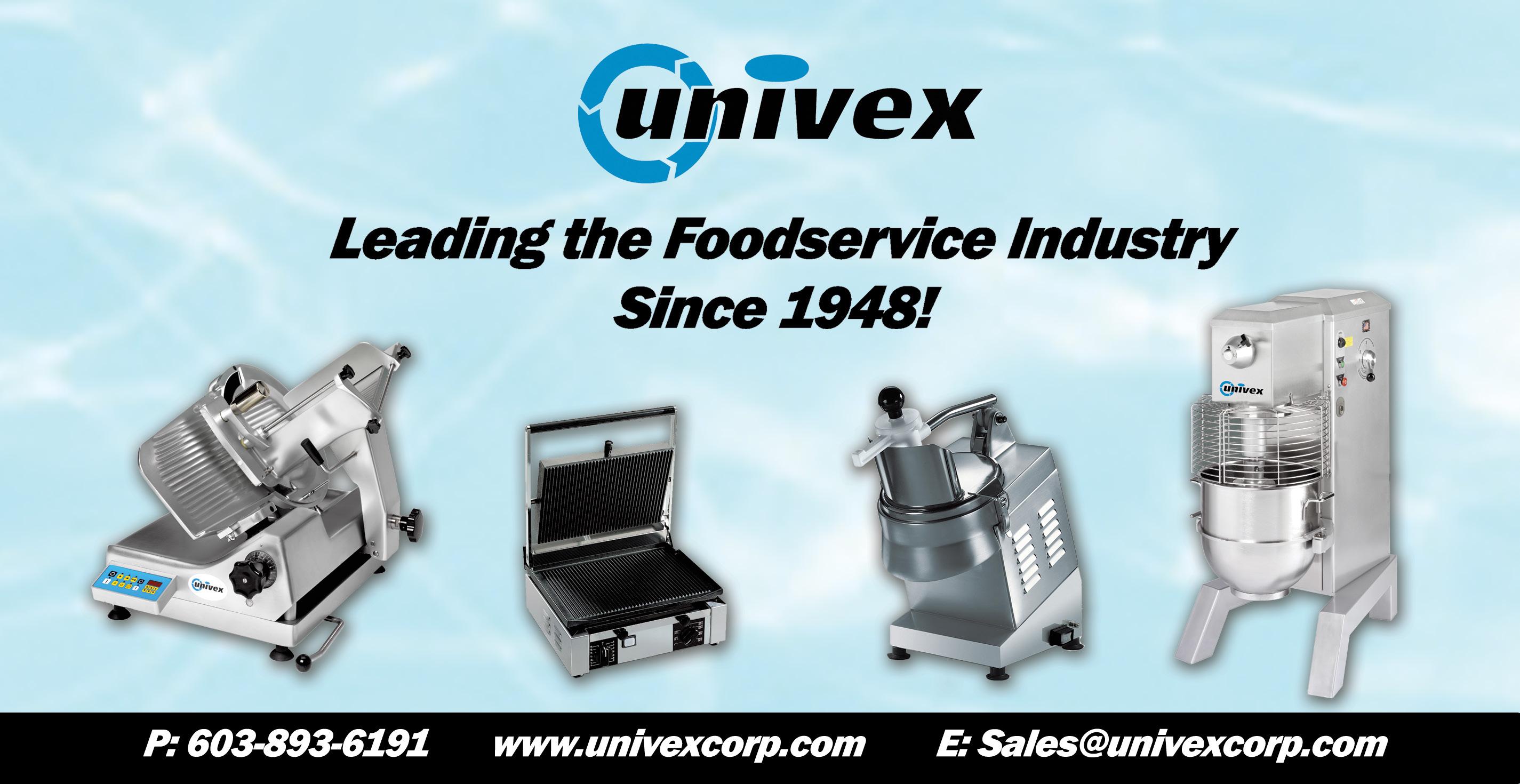
Iin an age where convenience reigns supreme, the global food delivery industry is reshaping how restaurants operate and how consumers dine. Delivery Hero SE, a German-based multinational, has emerged as a pivotal force in this transformation, operating in over 70 countries. The company’s latest milestone—a $2 billion IPO for its MENA subsidiary, Talabat—signals a bold step forward in its mission to dominate the global food delivery market.
Founded in 2004 in Kuwait, Talabat has grown to become the leading on-demand food and grocery delivery service in the GCC. Covering eight markets—Kuwait, UAE, Qatar, Egypt, Oman, Bahrain, Iraq, and Jordan— Talabat has evolved into a one-stopshop for consumers seeking diverse cuisines, seamless ordering, and multiple payment options.
Talabat’s success lies in its ability to integrate local flavors with global technology. CEO Tomaso Rodriguez remarked, “Talabat has always focused on enhancing the customer experience while empowering our restaurant and grocery partners. This IPO represents a culmination of those efforts, as well as a springboard for further growth.”
In November 2024, Talabat Holding plc debuted on the Dubai Financial Market (DFM), raising $2 billion and achieving a valuation of $10.1 billion. The IPO was not only the largest global tech IPO of the year but also
“Our technology enables us to stay ahead of the curve, offering unparalleled service to our customers and operational efficiency to our partners.” — Tomaso Rodriguez
a landmark event for the GCC region.
“The overwhelming response to Talabat's IPO reflects investor confidence in our vision,” said Rodriguez. The offering was oversubscribed, driven by strong demand from international and regional investors, including global technology sector specialists.
The Talabat IPO underscores the growing importance of the MENA region in the global tech and food delivery landscape. With a rapidly expanding population and increasing internet penetration, the region offers immense potential for growth.
Delivery Hero has made significant investments to solidify its leadership in the region, acquiring Yemeksepeti in Turkey, Hunger Station in Saudi
Arabia, and now expanding Talabat’s reach. The IPO proceeds will fuel further innovations, including loyalty programs, advertising solutions, and possible ventures into quick commerce—a burgeoning market segment delivering small orders in under an hour.
At the heart of Talabat’s success is its sophisticated tech ecosystem. The company’s apps leverage machine learning and big data to offer personalized recommendations, optimize delivery routes, and streamline operations. This not only ensures quick deliveries but also provides valuable insights for restaurant partners. Rodriguez emphasized, “Our technology enables us to stay ahead of the curve,
offering unparalleled service to our customers and operational efficiency to our partners.”
Despite its achievements, Delivery Hero has faced its share of challenges. Its gig-economy model, where couriers are classified as independent contractors rather than employees, has led to legal disputes in various countries. While this model enables flexibility and scalability, it also raises questions about worker rights and benefits.
With Talabat’s IPO marking a historic moment, Delivery Hero’s sights are set on further expanding its footprint in MENA and beyond. The company aims to double down on customer experience, introduce innovative service offerings, and expand into adjacent markets such as grocery delivery and ultra-fast commerce. “Our journey is just beginning,” said Rodriguez. “We’re committed to driving growth, fostering innovation, and making everyday life more convenient for millions of people worldwide.”
As Delivery Hero continues its global ascent, its impact on the restaurant industry and dining culture is undeniable. The Talabat IPO is more than a financial milestone— it’s a testament to the transformative power of technology in creating a seamless and dynamic food delivery ecosystem. From Berlin to Dubai, Delivery Hero is not just delivering meals; it’s shaping the future of how the world eats.


The shift in consumer dining preferences is undeniable— customers are seeking healthier, more sustainable, and ethically sourced food options. Restaurants and foodservice operators are responding with innovative menu updates, and plant-based items are taking center stage. However, meeting customer demand requires moving beyond simple replacements like plant-based burgers or hot dogs. Instead, chefs have an opportunity to create versatile and flavorful dishes that integrate seamlessly into their menus.
One company leading this transformation is SWAP Food, whose plantbased chicken offers chefs the flexibility to craft creative menu items that appeal to a broad audience. Tristan Maurel, co-founder and CEO of SWAP Food emphasized that the company’s mission aligns with providing chefs with better tools to meet the plant-based movement head-on.
Plant-based dining is no longer niche. According to industry reports, a growing number of diners—especially Millennials and Gen Z—are choosing plant-based options for health, environmental, and ethical reasons. “Chefs today need more than a plant-based burger on the menu,” Maurel explained. “Customers want choices that feel authentic and thoughtful, not just a one-size-fits-all approach.”
Incorporating plant-based items into the menu doesn’t just attract vegans and vegetarians. Flexitarians—those who reduce but don’t entirely eliminate meat—are a booming demographic. To truly capture this market, restaurants must offer creative, high-quality options that appeal to all diners. While plant-based burgers
“Chefs today need more than a plant-based burger on the menu. Customers want choices that feel authentic and thoughtful, not just a one-size-fits-all approach.” — Tristan Maurel, Co-Founder and CEO, SWAP Food
served as an initial entry point, many customers now seek a variety of innovative dishes. Maurel highlighted that plant-based alternatives need to adapt to different styles of cooking, from appetizers to entrees, without compromising taste or texture. “We designed SWAP Chicken to be incredibly versatile,” Maurel noted. “It has the same versatility as traditional chicken, so chefs can use it in everything from hors d’oeuvres to hearty main courses.”
SWAP Food’s plant-based chicken is a game-changer for chefs looking to expand their plant-based offerings without overhauling their kitchen processes. Made using innovative technology, the product closely mimics the taste and tex-
ture of traditional chicken. “Our product is designed to give chefs the same level of creativity and flexibility they have with animal-based chicken,” Maurel shared. “Whether it’s a Caesar salad, grilled kebabs, or a chicken stir-fry, SWAP Chicken can take center stage.” Notably, SWAP Food prioritizes clean-label ingredients, making the product free of artificial additives, antibiotics, or controversial ingredients often associated with plant-based foods. “This isn’t just about swapping for ethical or environmental reasons— it’s about creating food that’s genuinely enjoyable and healthy for everyone,” Maurel added.
Chefs across the U.S. are already finding unique ways to incorporate SWAP Chicken into their offerings. From a light appetizer like plant-based chicken sliders to a luxurious entrée like chicken marsala, the product opens up endless possibilities. “We’ve seen chefs use it in ways we had not even anticipated,” Maurel said. “One chef made a chicken sausage, while another used it in a breaded schnitzel. The possibilities are limitless.” This versatility is a major draw for foodservice operations, allowing them to cater to diverse tastes while streamlining their inventory.

SWAP Food’s commitment to sustainability is another reason why their plant-based chicken resonates with chefs and diners alike. Producing plant-based proteins requires significantly fewer resources than traditional animal farming, including water, land, and energy. “Beyond taste, we’re
focused on reducing the environmental footprint of protein production,” Maurel said. “Our plant-based chicken requires four times less water and emits far fewer greenhouse gases than traditional chicken farming.” Additionally, SWAP Chicken is free from cholesterol and antibiotics, aligning with the growing demand for clean and healthy dining options. To ensure smooth integration into restaurant operations, SWAP Food has partnered with major distributors, including Gordon Food Service and Sysco. These collaborations make it easier for restaurants to access the product and incorporate it into their existing supply chains. “Distribution is key,” Maurel emphasized. “We work with broadline and specialty distributors to ensure chefs can get SWAP Chicken as easily as they would traditional chicken.”
Restaurants, foodservice operators, and distributors interested in learning more about SWAP Chicken can visit their website or reach out directly for samples and product information. “Our goal is to make it as easy as possible for chefs to add SWAP Chicken to their menus,” Maurel said. “They can request samples, find distributor partners, and start experimenting with their menus right away.”
To learn more about SWAP Chicken and explore how it can transform your menu, visit the SWAP Food website at swapfood.com or email them at sales. us@swapfood.com. By offering plantbased options that go beyond the basics, chefs have the power to lead a culinary movement that meets customer demand, supports sustainability, and elevates the dining experience.

The Partridge Club’s annual holiday gala at the New York Athletic Club (NYAC) in Manhattan is more than just a festive gathering; it’s a heartfelt celebration of the hospitality industry’s future and its rich legacy. With breathtaking views and timeless elegance as the backdrop, this year’s event brought together industry leaders, scholarship recipients, and families whose loved ones have left an indelible mark on the Partridge Club’s mission.
Among the most poignant moments of the evening was the tribute to members who have passed but continue to inspire the organization’s work. Families
of Dan Condon, Dick Cattani, Larry Cantamessa, and Dennis Murphy attended the event, keeping the memory of these cherished individuals alive. Their contributions to the club and the industry were warmly toasted, with stories and laughter lighting up the room, proving that their legacies continue to shape the Partridge Club’s mission of giving back.
Their families attended the holiday celebration, creating a moving connection between the club’s history and its present. Jason Pallen remarked: “Our holiday events are a time to reflect on those who built the foundation of this club and our industry. Their spirit lives on through their families and the work


we continue to do in their honor.”
These tributes underscored the closeknit nature of the Partridge Club, where personal connections and professional passion intertwine to create a vibrant community.
But the gala was not just about looking back—it was also about looking forward. The highlight of the evening was the presentation of scholarships to students from some of the Northeast’s most prestigious hospitality programs, reinforcing the club’s commitment to empowering the next generation of industry leaders.
For nearly nine decades, the Partridge Club has been dedicated to advancing the hospitality industry through educa-


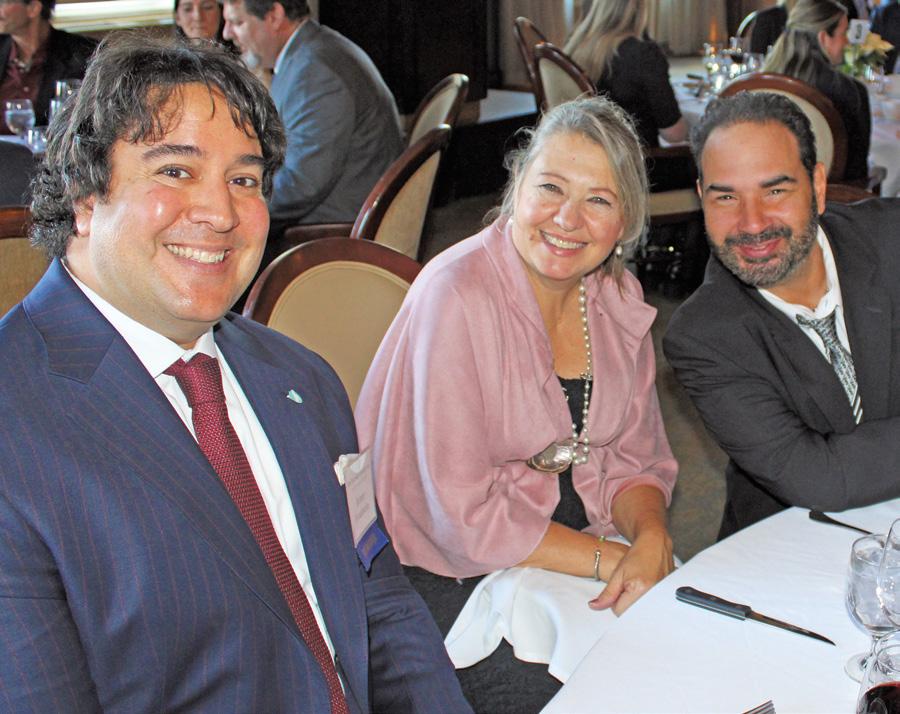
tion and training. Since its founding in 1935 at the Victoria Hotel in New York City, the club has raised scholarship funds to benefit institutions such as New York City College of Technology, Cornell University, Johnson & Wales, Paul Smith College, the Culinary Institute of America (CIA), and ProStart. Jason Pallen, president of the Partridge Club, emphasized the significance of the scholarships: “Each scholarship we award represents an investment in the future of our industry. These students are the lifeblood of hospitality, and supporting them is the most meaningful way we can
continued on page 103

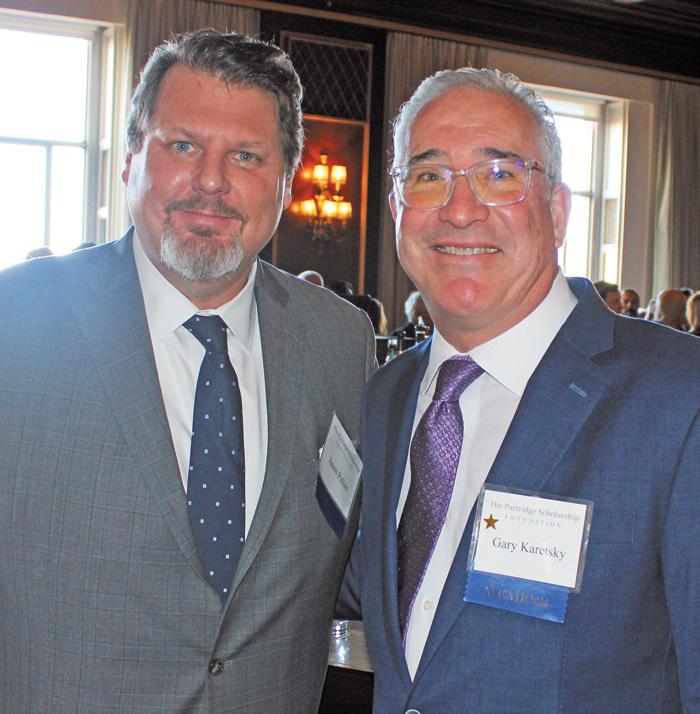

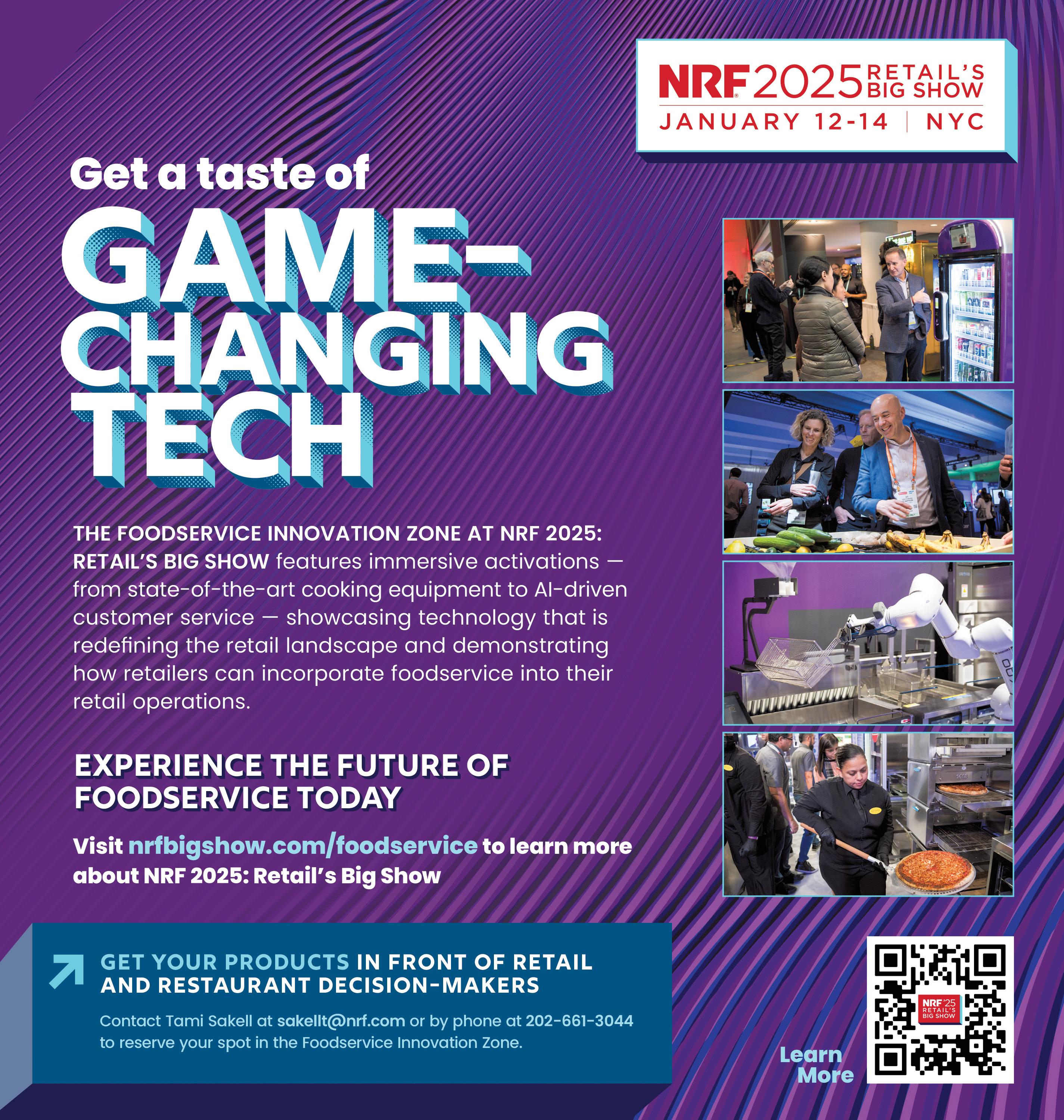
As we prepare to step into 2025, the challenges and expectations for restaurant and foodservice operators are higher than ever. Cleanliness is no longer just a matter of compliance; it’s a defining factor for your reputation, operational efficiency, and bottom line. Yet, the true value of a professional cleaning strategy often remains underestimated.
Why is that? Cleaning is such an integral part of daily operations that it’s easy to take it for granted. Many operators assume anyone can handle cleaning tasks, often assigning them to untrained in-house staff to save costs. But this approach overlooks the deeper impact of proper cleaning on customer satisfaction, health compliance, equipment longevity, and even team morale.
Over the years, I’ve worked with
countless operators to help them see cleaning not as a cost center but as a strategic investment. Let me walk you through how to create an effective cleaning strategy that encompasses every part of your restaurant—from the kitchen to the dining area, and yes, especially the bathrooms—while avoiding the hidden pitfalls that can hurt your business.
The kitchen is the heartbeat of any restaurant, but it’s also where cleaning challenges are most intense. From grease buildup to food debris, neglecting proper cleaning here can lead to equipment failure, pest problems, and even safety hazards.
Imagine the cost of repairing or replacing expensive kitchen equipment damaged by poor cleaning practices. Ovens with inconsistent heating, clogged fryers, or stovetops with residue buildup don’t just affect your food qual-

ity—they halt your operations. If your equipment goes down mid-shift, you’re not just losing revenue; you’re also eroding customer trust.
Professional cleaning services prevent these disasters by using precise protocols and specialized equipment. They don’t just clean surfaces; they tackle the hard-to-reach areas that can cause long-term damage, such as vent hoods, drains, and grease traps.
By investing in professional cleaning, you’re protecting your equipment, ensuring consistent performance, and avoiding costly downtime. When customers walk into your restaurant, the first thing they notice isn’t your food— it’s the environment. Cleanliness, or the lack thereof, is immediately apparent. Sticky floors, smudged glass doors, or food crumbs on table bases send a clear message: this business doesn’t care about the details.
Dining areas need to be pristine, not just presentable. Professional cleaning teams excel at addressing overlooked areas like air vents, baseboards, and banquettes. They ensure your establishment projects an inviting, polished image that sets the tone for the guest experience.
In today’s era of heightened social media scrutiny, cleanliness is more critical than ever. One photo of a dirty dining area shared online can damage your reputation irreparably. Professional cleaning services safeguard against these risks, providing consistency and reliability that your team may struggle to achieve in-house.
Let’s talk about bathrooms—the silent dealbreaker for many customers. A survey from the National Restaurant As-

Robert Rivadeneira is the co-founder and driving force behind York Building Services, Inc. (YBS), a two-time Inc. 5000 commercial cleaning company that has been providing highquality, professional building services to the New York Metropolitan Area for more than 25 years. Established in 1997 by Robert and his father, Alberto Rivadeneira, YBS specializes in creating safe, productive, and healthy environments for its clients, with a strong focus on the hospitality industry. Under Robert’s leadership, YBS has grown into a trusted partner for numerous businesses by offering tailored cleaning programs and services, including overnight cleaning programs, kitchen stewarding, finedetail and project cleaning, along with professionally trained cleaning personnel. Robert’s vision has always been to approach cleaning as an integral part of a company’s success, working closely with clients as an extension of their management teams. With a team of trained and certified professionals, YBS ensures high standards of cleanliness and safety, particularly in kitchens and restaurants. Robert’s dedication to excellence, combined with the leadership of his wife, Harmony Trujillo, has shaped the company’s values of service, leadership, relationships, and integrity. This family-owned business continues to thrive, making a lasting impact on New York City’s commercial cleaning industry.
sociation found that unclean restrooms are one of the top complaints among diners. Guests judge the cleanliness of your bathroom as a reflection of your kitchen and overall operations. Dirty bathrooms not only alienate customers but also pose significant health risks. Overflowing trash bins, clogged drains, or uncleaned surfaces are not just unpleasant—they’re unacceptable.
Professional cleaning teams go beyond the surface, addressing every detail from sanitizing fixtures to maintaining fresh-smelling spaces. They prevent small issues, like a malfunctioning soap dispenser, from spiraling into bigger
continued on page 118


The disposable glove market in 2025 is being shaped by a confluence of factors: increased tariffs, ongoing supply chain challenges, and evolving food safety standards. For restaurateurs, foodservice professionals, and distributors, understanding these dynamics is critical to staying ahead in a competitive industry.
In this column, I’ll break down the key market trends, discuss the challenges you’re likely to face, and share practical strategies for selecting gloves that enhance efficiency and food safety without unnecessarily driving up costs.
Let’s start with the elephant in the room: tariffs. As of January 1, 2025, new tariffs on Chinese-made nitrile gloves have taken effect—50% on exam-grade gloves and 25% on industrial-grade nitrile. For years, Chinese manufacturers kept prices low, making nitrile gloves the go-to choice for many operators. These tariffs, however, are pushing prices higher, forcing buyers to rethink their strategies.
In response, many suppliers are shifting production to Southeast Asia, where costs are higher but still competitive. This shift will inevitably create upward pressure on prices, especially as demand spikes. The takeaway? Operators and distributors need to budget for potential increases and consider whether alternative materials or glove types could provide better long-term value.
Even before the tariffs, the global supply chain was under strain. Events like port slowdowns, geopolitical conflicts, and rising freight costs have all contributed to sporadic shortages and extended lead times. While some of these issues are starting to stabilize, the ripple effects remain.
Here’s the reality: even the best gloves won’t protect against cross-contamination if employees aren’t trained to change them between tasks. For instance, handling raw poultry and then preparing a salad without switching gloves is a recipe for disaster.
This underscores the importance of building strong relationships with your suppliers and distributors. A reliable supplier will offer clear timelines, transparent communication, and contingency plans to minimize disruptions.
The FDA has been advocating for a “culture of food safety,” which highlights the importance of proper hand hygiene in preventing foodborne illnesses. Gloves play a crucial role in this effort, but only when they are used correctly. That’s why at Elara we focus on
designing gloves that balance safety, comfort, and performance. For example, our Finefit2G nitrile gloves offer a near bare-hand feel, making them a favorite among chefs who need tactile precision. Here’s the reality: even the best gloves won’t protect against cross-contamination if employees aren’t trained to change them between tasks. For instance, handling raw poultry and then preparing a salad without switching gloves is a recipe for disaster. Beyond that, gloves must fit well and be com-
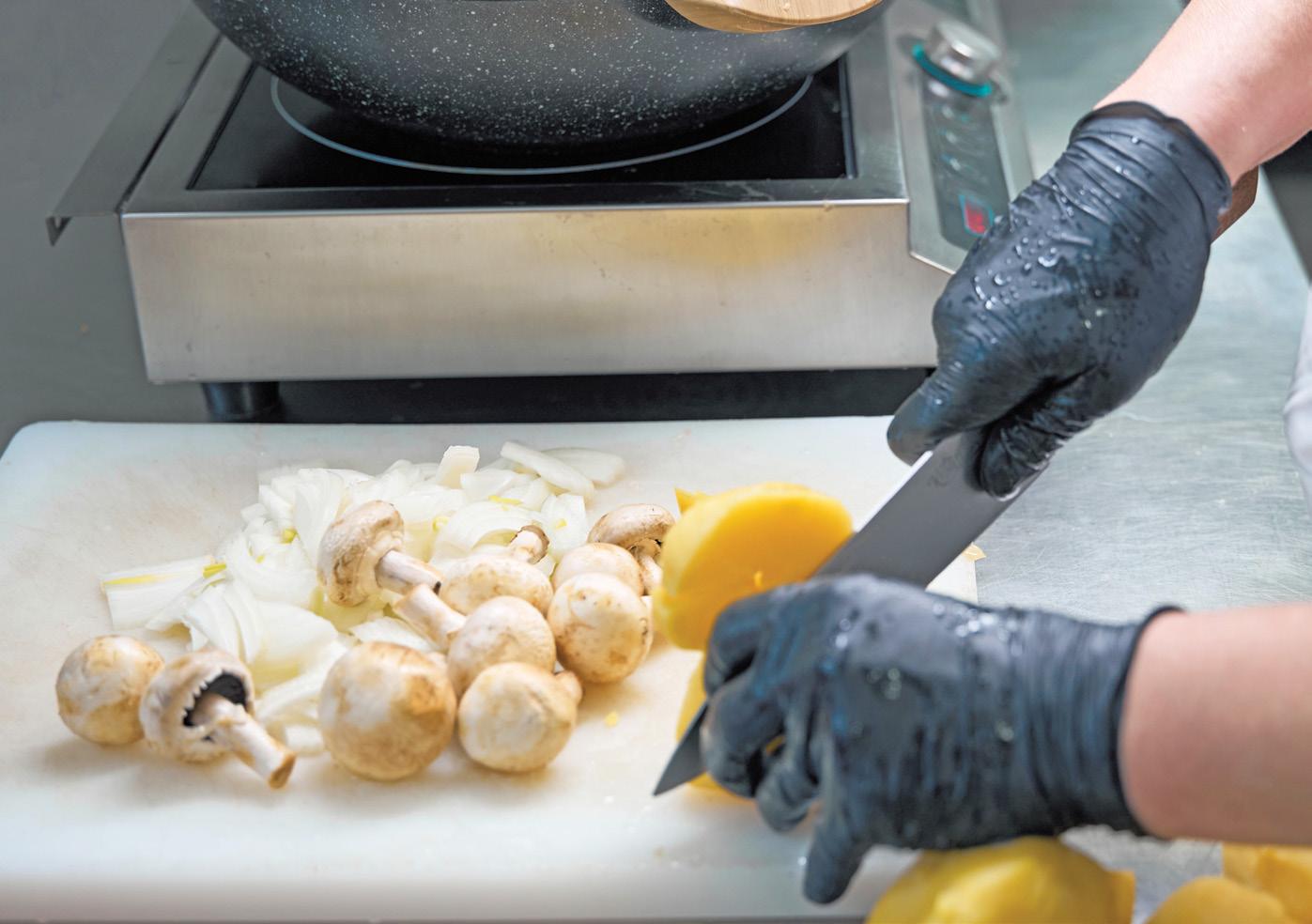
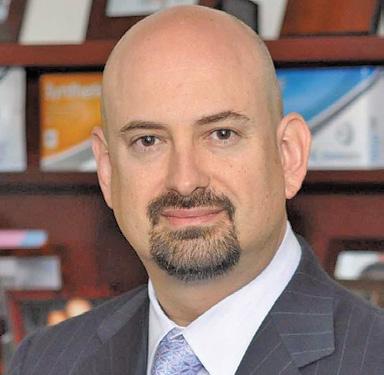
Dan Grinberg is the Founder and President of Elara Brands (Elara), a leading supplier of nitrile, latex, vinyl, synthetic, hybrid and poly gloves. Elara also produces food storage bags and single-use apparel. A social-mission driven company, Elara is committed to fighting hunger in America. Through its One Case – One Meal program, for each case purchased, Elara donates a meal to a local Feeding America member food bank. Grinberg is also a long time supporter of the Island Harvest Food Bank, a Long Island food bank and member of the Feeding America network.
fortable; otherwise, workers may resist wearing them, which undermines safety efforts.
Advancements in materials and production technology are providing operators with more options than ever before. One notable innovation is ultra-thin nitrile gloves, which are lightweight yet durable, offering excellent dexterity without compromising protection—perfect for tasks requiring precision. Another breakthrough is blended synthetics, which combine the durability of nitrile with cost efficiency, creating an attractive middle-ground option.
Additionally, hybrid gloves have emerged as a convenient solution for high-turnover tasks, such as sandwich preparation or assembly-line work, thanks to their ease of putting on and removal. We designed a solution for quick-change tasks. Our digifit and digifitBASIC gloves provide a snug fit and are easy to change. With fewer employees they can significantly improve throughput times in high-volume operations.
When choosing gloves, it’s essential to balance comfort, durability, and costeffectiveness. A glove that breaks frequently or causes discomfort can lead to higher usage rates and increased frustration among staff.
In today’s tight labor market, kitchen
continued on page 110

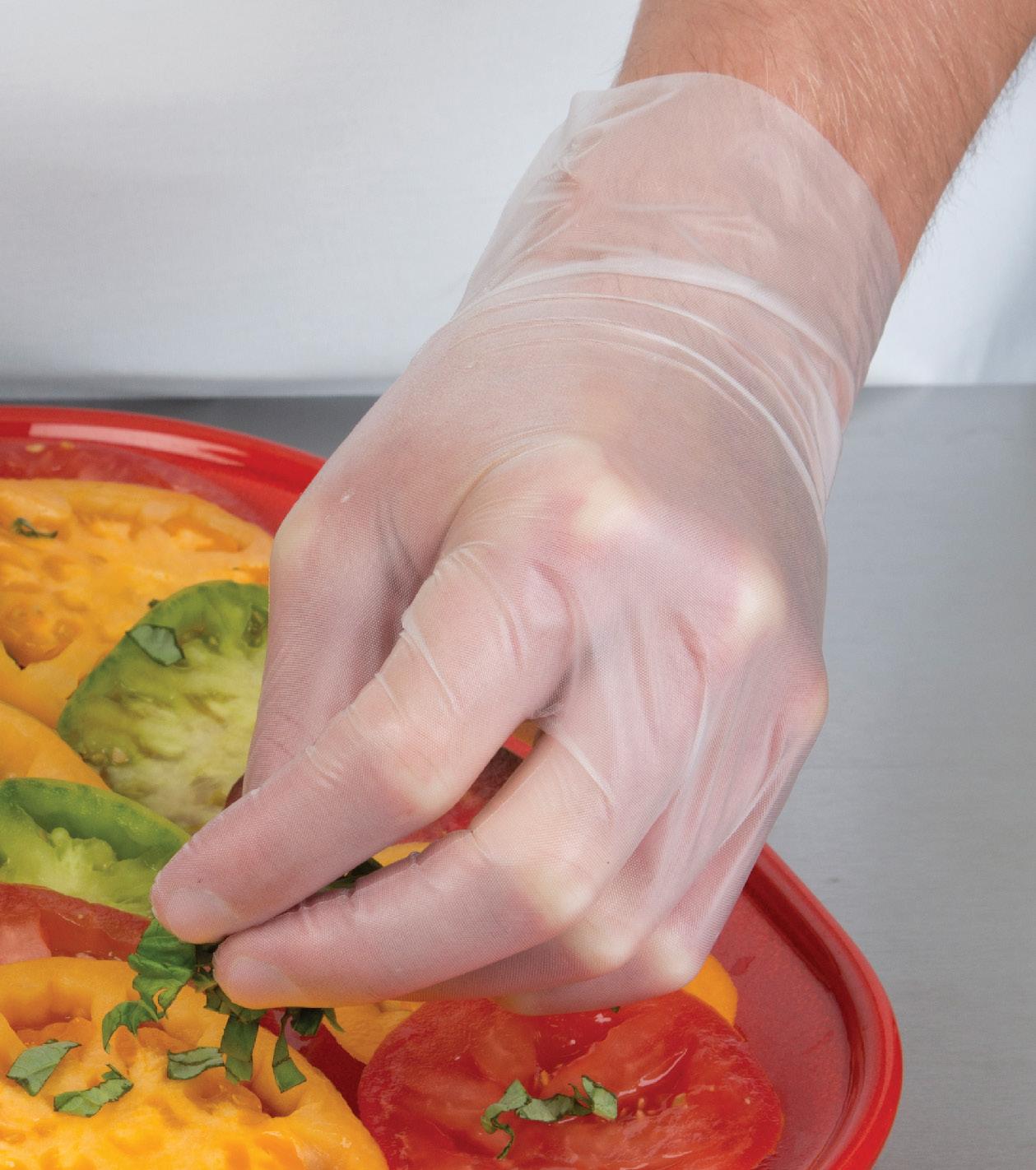

If there’s one positive takeaway from the pandemic, it’s the way communication platforms have evolved to keep us connected. What began as a temporary solution—Zoom—has now become an indispensable tool for professionals to share ideas and tackle challenges. For those of us in the fast-paced, demanding NYC restaurant and nightlife industry, where in-person networking can be nearly impossible, this digital shift has opened new doors. That’s why I’m thrilled to announce the launch of the NYC Hospitality Alliance Conversation Series!
This new virtual town hall is designed to bring hospitality professionals from all five boroughs together in a space where they can share experiences, discuss challenges, and brainstorm solutions. Whether you’re running a restaurant in the Bronx, managing a bar in Queens, or operating a nightclub in Manhattan, the Conversation Series is your opportunity to connect
“It’s about building a community where we can lift each other up and move forward together. That’s how we’ll continue to innovate, grow, and strengthen our businesses.”
with peers, exchange ideas, and learn from some of the best minds in the business.
At the Alliance, our mission is clear: to support and uplift New York City’s hospitality community. This series is a natural extension of that mission. It’s about fostering collaboration, encouraging innovation, and helping our industry adapt to the ever-changing business landscape. As I often say, we’re stronger together, and the Conversation Series is here to remind us of that.
Each session of the Conversation Series follows a simple but effective format. We’ll kick things off with a brief
presentation from a featured speaker, who’ll share practical advice, industry insights, or a key lesson learned from their experience. After that, the floor is open for a live Q&A and discussion, where attendees can ask questions, share insights, and dive deeper into the topic. These conversations will be moderated to ensure a focused and engaging dialogue, but the real value comes from the candid, unscripted exchanges between participants.
The sessions will be concise—just 45 minutes long—so they’re easy to fit into your busy schedule. Whether you’re looking to learn, share, or simply listen, you’ll walk away with ac-


Andrew Rigie is the Executive Director of the New York City Hospitality Alliance, a trade association formed in 2012 to foster the growth and vitality of the industry that has made New York City the Hospitality Capital of the World. Learn more at https:// www.thenycalliance.org/
tionable insights and a renewed sense of community.
Our first session is scheduled for Monday, January 13, from 3:00 PM to 3:45 PM. I’m excited to facilitate this conversation alongside our speaker, Bill Bonbrest, who currently serves as President of the NYC Hospitality Alliance and previously held the role of Chief Performance Officer at TAO Group. Bill will share three powerful leadership and management tips that have helped him navigate decades in the restaurant and nightlife business. Trust me, you won’t want to miss his insights.
After that, we’ve got an incredible lineup of speakers and topics to carry us through the first half of the year. On February 10, Liz Murray, COO of The Marlow Collective, will discuss strategies for managing Gen Z employees. Then, on March 10, Susan Povich, owner of Red Hook Lobster Pound, will break down the value of paying social media influencers for marketing.
continued on page 110

As legal battles continue over a controversial 2023 Florida law aimed at restricting minors from attending drag shows, a new question has arisen: does Hamburger Mary’s closure of its Orlando location render its challenge to the law moot?
The restaurant’s operators argue the answer is no. In a Monday filing to the 11th U.S. Circuit Court of Appeals, Hamburger Mary’s attorney Melissa Stewart maintained that the case remains valid. Despite closing its Orlando doors in June, the business has continued producing drag shows at other venues and plans to resume its drag-centric model at a new location in Kissimmee.
“Once reopened, Hamburger Mary’s intends to operate with the same business model and age policies as its Orlando location,” Stewart wrote. She stressed that, because the Florida Department of Business and Professional Regulation (DBPR)
enforces the law statewide, the Kissimmee location faces the same legal risks of enforcement.
The 2023 law, known as the “Protection of Children” bill, prohibits minors from attending “adult live performances,” defined to include depictions of nudity or lewd conduct. While the statute does not specifically mention drag shows, it followed a crackdown by Governor Ron DeSantis’ administration on venues hosting drag events that allowed children.
U.S. District Judge Gregory Presnell previously issued a preliminary injunction, halting enforcement of the law and stating it violated First Amendment protections. In his ruling, Presnell criticized the law’s selective targeting of drag performers, pointing out that existing state laws already restrict obscene performances.
“The concern about exposing children to ‘adult live performances’ rings hollow when Florida law permits minors to attend R-rated films, which of -
“The
concern about exposing children to ‘adult live performances’ rings hollow when Florida law permits minors to attend R-rated films, which often feature similar or more objectionable content,” — U.S. District Judge Gregory Presnell
ten feature similar or more objectionable content,” Presnell wrote.
The state appealed Presnell’s decision, and oral arguments were heard in October. However, in November, the court requested additional briefs on Hamburger Mary’s planned reopening to determine whether the appeal is moot. The state’s response is due by January 21.
For Hamburger Mary’s, reopening amid ongoing litigation is a “monumental task,” according to Stewart. The restaurant hopes the court will resolve the legal uncertainty sur-

rounding its business model.
“Reopening Hamburger Mary’s is more essential than ever,” Stewart emphasized. “This litigation will determine whether its core operations are legal in Florida.”
Hamburger Mary’s, known for hosting “family-friendly” drag shows for over 15 years, has faced delays in its plans to reopen in Kissimmee. Nonetheless, the operators remain committed to challenging the law, which they argue unfairly targets LGBTQ+ performers and businesses.
The drag show restrictions are part of a wave of legislation in Florida and other states addressing transgender issues. Critics argue these laws are designed to marginalize LGBTQ+ communities, while proponents claim they protect minors from exposure to inappropriate content.
As the legal battle unfolds, Hamburger Mary’s and its supporters hope to set a precedent affirming the rights of drag performers and LGBTQ+ businesses under the First Amendment.
The upcoming decision will not only impact Hamburger Mary’s but could shape the future of drag entertainment and LGBTQ+ visibility in Florida’s public spaces.

It’s no small feat for a seasoned chef to leave a coveted position at a worldrenowned restaurant to embark on a new venture. Yet, Chef André Bienvenu, who spent 26 successful years as the executive chef at Miami Beach’s iconic Joe’s Stone Crab, is doing just that. Now, he’s channeling his culinary prowess and a lifetime of experience into Catch & Cut, a seafood and steak-focused fine-dining restaurant in Miami Beach.

The stakes are high for Chef Bienvenu. “It’s a big risk, stepping away from something as legendary as Joe’s, but I wanted a new challenge,” he said. With soaring food costs, inflationary pressures, and ongoing labor challenges, the restaurant business has never been tougher. Yet Chef Bienvenu believes that his dedication to hospitality, culinary tradition, and his team will set Catch & Cut apart.
Chef Bienvenu is no stranger to highpressure situations—both in and out of the kitchen. An accomplished hockey player and coach, Bienvenu credits his experience on the ice for teaching him resilience, focus, and teamwork. “Hockey taught me how to think fast and adapt to challenges,” he said. “Those are lessons I carry with me in the kitchen every day.”
His approach to Catch & Cut blends the innovative flair he’s honed over decades with a deep commitment to classic hospitality. “I’ve seen so many trendy restaurants come and go because they forget the basics—great food and making guests feel at home,” Bienvenu said.
At Catch & Cut, he aims to revive the “golden era” of dining. “I want people to feel like they’re part of the family when

they walk through the doors,” he explained. “It’s about knowing your guests, their preferences, and creating an experience they’ll want to return to again and again.”
Catch & Cut’s menu is a reflection of Chef Bienvenu’s culinary philosophy: high-quality ingredients, expertly prepared, and served with a personal touch. Guests can indulge in fresh Florida stone crabs, sushi crafted with precision, and USDA prime steaks sourced from Chicago’s legendary Allen Brothers. “The secret to great food starts with great ingredients,” Bienvenu said. “We’ve partnered with the best suppliers to ensure every dish we serve is exceptional.”
Stone crabs, a centerpiece of the menu, are sourced fresh and served within 24 hours of being caught. Bienvenu’s mustard sauce—a slight departure from Joe’s iconic recipe—will add a unique touch.
The open kitchen design offers diners a front-row seat to the culinary action, creating a sense of connection between the guests and the chefs. “Every cook can see 80% of the dining room,” Bienvenu said. “It’s a performance every night, and
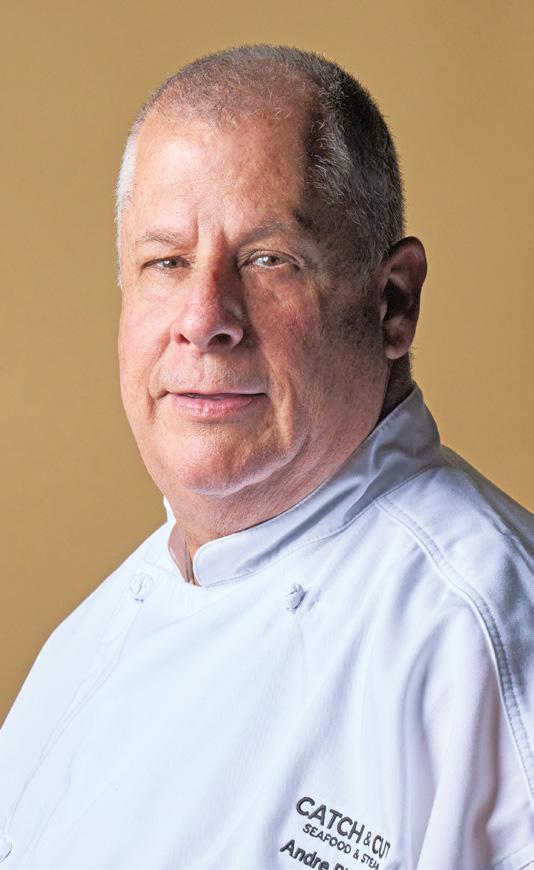
we want our team to feel the energy and excitement of the guests.”
Catch & Cut isn’t just about food—it’s about reviving the art of hospitality. Bienvenu wants to create a place where guests feel like regulars, whether it’s their first visit or their fiftieth. “I grew up watching ‘Cheers,’” he joked. “That sense of community is what I want to build here.”
He credits his time at Joe’s Stone Crab for shaping his understanding of hospitality. “Joe’s taught me the importance of relationships—both with guests and employees,” he said. “That’s the philosophy I’m bringing to Catch & Cut.”
Catch & Cut’s ambiance is as thoughtfully crafted as its menu. The two-story, 9,618-square-foot space features an open kitchen on the first floor, a sushi and raw bar, and an al fresco rooftop dining area with views of Miami Beach. “We wanted to create a space that’s inviting, elegant, and perfect for any occasion,” Bienvenu said.
The bar program, curated by Beverage Manager Joe Vesey, includes cocktails made with house-squeezed citrus and fresh ingredients. The wine list, developed by Sommeliers Stephan Cole and
Natina Rocchio, complements the restaurant’s seafood and steak offerings.
Chef Bienvenu is joined by a seasoned team, including GM and Sommelier Stephan Cole, Sushi Chef Inyoman Atmaja, and Beverage Manager Joe Vesey. Together, they’ve created an experience that combines innovation, tradition, and heartfelt hospitality.
“Our goal is to offer something for everyone,” Bienvenu said. “From stone crabs and sushi to USDA prime steaks and vibrant cocktails, we want every guest to leave feeling like they’ve had an unforgettable experience.”
“My long-standing partnership with Allen Brothers is built on a shared commitment to quality and excellence," says Chef Andre. "Their unparalleled selection of prime, hand-cut steaks allows us to deliver a dining experience like no other. With their expertise and my passion for culinary artistry, our new restaurant is poised to serve South Florida the most delicious, unforgettable steaks."
With its blend of innovation, tradition, and old-school hospitality, Catch & Cut is poised to make a mark on Miami Beach’s vibrant dining scene. “This isn’t just a restaurant—it’s a celebration of everything I’ve learned over the years,” Bienvenu said.
As he embarks on this new chapter, Chef Bienvenu remains focused on what matters most: great food, strong relationships, and creating a place where guests feel at home. “Success isn’t about trends,” he concluded. “It’s about making people feel good—about the food, the service, and the experience. That’s what we’re building at Catch & Cut.”
All Photos by Ruben Cabrera


Do you have the SCOOP on any foodservice and hospitality news?
Send items to SCOOP Editor Joyce Appelman at tfs@totalfood.com

SCOOP invites you to join us for a very special culinary demo with TOM COLICCHIO, acclaimed chef, restaurateur, author and star of Top Chef, who will be headlining the Culinary Demo Stage at the 2025 New York Restaurant Show on Monday, March 24, 1PM! Join us for an unforgettable experience as Chef Colicchio shares insights from his new book, Why I Cook and showcases his culinary expertise. You'll get a glimpse into his thoughts on his future as a chef, the future of restaurants, and his legacy. This is an opportunity you won’t want to miss! 100 Guests will receive a signed copy of Why I Cook.
SCOOP has learned that MTI recently announce the launch of the latest innovation in ventless kitchen technology, the AutoFry MTI-40E PRO. Building on the solid foundation of the beloved MTI-40E, this upgraded model redefines convenience and safety
for foodservice operators, thanks to its state-of-theart built-in oil filtration system.
A New Standard in Efficiency and Safety: The MTI40E PRO was designed with the end-user in mind, making oil filtration and oil changes safer and easier than ever. This advanced system ensures a seamless cooking process, minimizes downtime, and supports operators in maintaining the highest safety standards.
Key Features and Benefits of the AutoFry MTI-40E PRO include:
• Liquid Level Switches for Each Vat: These intuitive switches monitor oil levels and provide alerts for low or unsafe conditions, offering peace of mind and ensuring uninterrupted operation. (Also compatible with standard models.)
• Automated Valves: Replacing traditional manual ball valves, the automated valves streamline operations, reducing the need for manual intervention.
• Fully Automated Oil Management: The MTI-40E PRO automates the oil filtration, oil drain, and oil replenishment processes, enhancing efficiency and operator safety.
• Enhanced Oil Filtration System (OFS): The new system boasts a larger filter foot, doubling the size of the original, and includes pre-filters under each vat to extend oil life and improve performance. (Also compatible with standard models.)
• Improved Lower Cart Assembly: Featuring integrated door handles for each door, the enhanced design ensures easier access and improved usability. (Also compatible with standard models.)
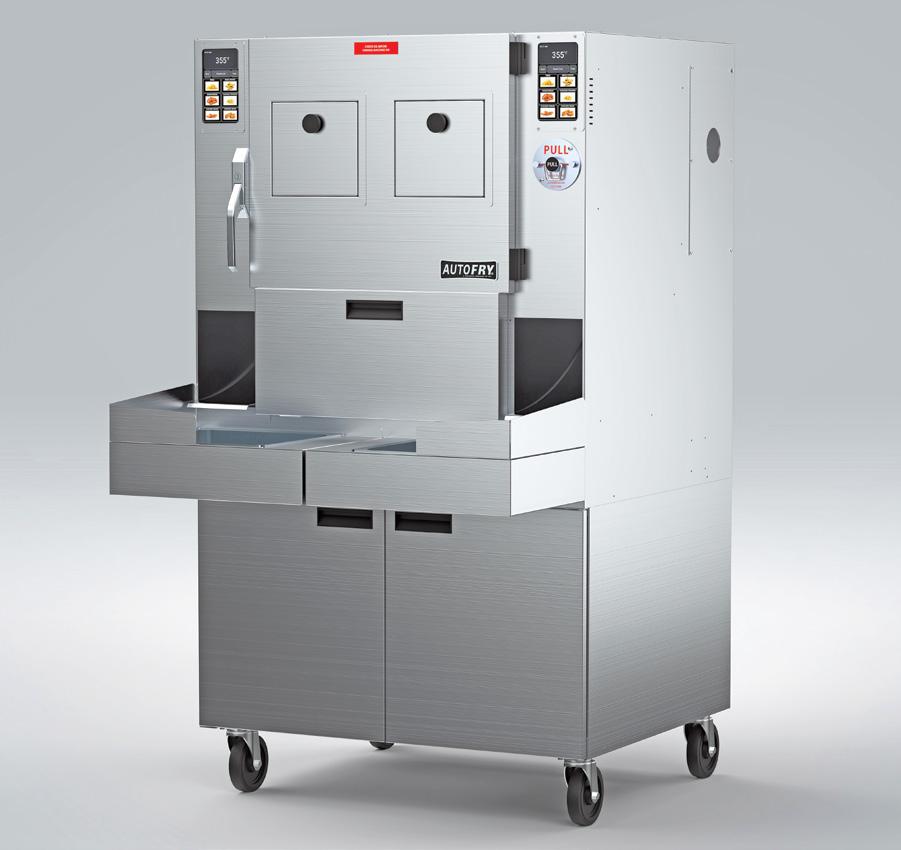
The AutoFry MTI-40E PRO is the ultimate solution for foodservice establishments seeking to maximize productivity, safety, and profitability. Whether you’re a convenience store, cinema or a high-volume family entertainment center, the MTI-40E PRO’s cutting-edge features empower you to meet demand while maintaining the highest quality standards.
MTI is a leader in ventless kitchen solutions, providing innovative, safe, and efficient equipment for foodservice operators worldwide. From fryers to multi-functional ovens, MTI continues to set the benchmark for excellence in the industry. The AutoFry MTI-40E PRO is available for order. For more information or to schedule a demo, visit our website at AutoFry.com or contact our sales team at sales@ mtiproducts.com or 508-460-9800.
SCOOP learned that Hygiena®, a global leader in food safety and environmental diagnostics, announced that it has completed the acquisition of Nexcor Food Safety Technologies, Inc., the creator of KLEANZ and CAMS-PM, two industry-leading software solutions for managing sanitation and equipment maintenance in food and beverage manufacturing facilities. This strategic acquisition underscores Hygiena’s continued commitment to delivering comprehensive, innovative food safety solutions to its worldwide customer base.
“Effective cleaning and monitoring of facilities with food safety diagnostic testing are essential for quality control and risk mitigation across all food processing environments. With our acquisition of Nexcor software solutions, we plan to integrate our SureTrend® analytics platform with KLEANZ’s sanitation software, delivering powerful tools to drive quality improvement, prevent food safety issues and enhance operational efficiencies,” said Steven
continued on page 96

Nason, CEO of Hygiena. “Hygiena’s extensive global customer base and commercial channels will introduce KLEANZ and CAMS-PM software solutions, along with our integrated SaaS food safety offerings, to a wider audience. This expanded portfolio provides our customers with a streamlined, prevention-focused approach to sanitation and food safety management. With a centralized platform offering comprehensive, real-time solutions, we are empowering businesses to enhance their food safety programs and operational effectiveness worldwide."
Robert Burgh, President of Nexcor Food Safety Technologies, Inc., commented, “This collaboration with Hygiena allows Nexcor to create greater customer value by streamlining two critical, interconnected functions within food companies worldwide. Together, we accelerate market growth while staying true to our values of innovation, integrity and customer satisfaction. We are excited to merge our expertise, creating enhanced SaaS platforms and comprehensive solutions for sanitation, safety and compliance management. United, we are poised to lead the future of food safety with a shared vision and strong commitment.”
The acquisition exemplifies the shared commitment and aligned values of Hygiena and Nexcor, aiming to enhance the safety and operational efficiency of food and beverage facilities through innovative technologies and comprehensive solutions. Nexcor's dedicated customer base and strong market presence in the food, beverage and packaging sectors will significantly contribute to the partnership’s success, fostering global expansion, enhanced product offerings, operational efficiencies and cross-selling opportunities.
SCOOP congratulates the 74-Starred restaurants on Michelin’s 2024 guide to New York City. The biggest news for 2024 is that Jungsik from Seoul’s Jungsik Yim, landed Three-Stars, the first Korean restaurant to earn such high accolades and the first addition to NYC’s Three-Star shortlist in 12 years. It joins Eleven Madison Park, Masa, Le Bernardin, and Per Se. Meanwhile, among Two-Star restaurants, César from César Ramirez, Chef’s Table at Brooklyn Fare, and Sushi Sho are new. And eight restaurants have joined the city’s robust collection of 55 One-Star spots.
The Michelin Guide also announced its Chicago list highlighting a total of 20 Starred restaurants. This year’s update includes two Three-Stars—Alinea and Smyth, two Two-Stars-Ever and Oriole, 15 new OneStars and 1 Green Star-Daises.

SCOOP knows that when loaded with fresh, flavorful ingredients and tasty toppings, Bake’n Joy’s premium baked loaf cakes will certainly draw attention! Each cake is conveniently delivered in quality packaging ready for your label for an easy to build, attractive display. For you, it means delivering a quality product with ease. Simply thaw and label. No baking, no topping, no labor! For more information, visit www.bakenjoy.com
SCOOP heard non-alcoholic cocktails brand For Bitter For Worse was awarded a $250,000 investment from the state of New York as part of the Grow NY program. The global competition included applications from fifty different countries. For Bitter For Worse was the only non-tech company to win an award. The funds will in part be used to create two New York-based jobs for the drinks startup. CEO Shelley Elkovich says the award “offers more meaningful validation and is a wonderful start to our seed raise.”
The company is a woman-owned, disabilityowned Portland family business with a trade secret production process they call “reverse bootlegging,” which yields bold flavor and full-bodied texture from certified organic botanicals, rather than lab-made
flavorings.
For Bitter For Worse’s drinks have garnered eighteen international medals and trophies to date and are available from distribution partners including Prime Wine & Spirits, Rock Island Distribution, Foundation Foods, and M4 C.I.C.
SCOOP heard that NYC’s First Green Dining Destination™ launched thanks to the hard work of a strong roster of highly reputable Certified Green Restaurants® in the Flatiron and Nomad neighborhoods, who are championing green dining and improving the environmental footprint of their restaurants. These restaurants have succeeded in attaining the Certified Green Restaurant® certification from the Green Restaurant Association. With the support of the Green Restaurant Association, Flatiron NoMad Partnership, and Madison Square Park Conservancy, this community of restaurants has banded together to form NYC’s First Green Dining Destination™, a beacon of sustainability attracting people from all over the world to The Place to Dine Green™. These amazing Certified Green Restaurants® can be found in the Flatiron NoMad Green Dining Destination™: Barcade, Honeybrains, Rezdôra Osteria Emiliana, Hawksmoor, PLANTA Queen, BLACKBARN, Tarallucci e Vino, INDAY All Day, Shake Shack, Scarpetta, The Seville, and Spin.
SCOOP heard that if you visit the two large kitchens serving Chatham University’s Eden Hall campus, you’ll notice a big difference from most other highvolume kitchens: instead of the high heat and low precision of gas-powered cooking, both The Lodge and The Esther Barazzone Center kitchens at Eden Hall use electric induction cooking improve the precision and quality of the food they serve.
The resulting improvements in time savings, energy efficiency, and ambient heat in the kitchen — Chatham’s unique hood system is heat-activated, dramatically reducing energy consumption while continued on page 98

storing and recycling heat to help control temperatures in the building — have even led companies like Microsoft to visit Eden Hall to learn more about the future of cooking.
Now, in January 2025, Chatham University and the American Culinary Federation (ACF) will debut three new online courses offering official certification in induction cooking methods. This partnership marks the first time in the ACF’s 95-year history that it has involved outside experts in its training.
“We don’t have to burn things to cook. We can do better, so why wouldn’t we?” said Robert Sroufe, Professor of Sustainability and Falk Chair of Sustainable Business at Chatham University. “Induction reduces the environmental impact of cooking, gives people effective ways to combat climate change, and diversifies America’s energy grid by making it easier to move away from fossil fuels, all while creating a cooler, safer, cleaner, healthier, and more precise kitchen.”
Research shows induction cooking transfers up to 90% of the energy consumed directly to the food, as compared to 74% for traditional electric systems and just 40% for gas, making it one of the most efficient and environmentally beneficial cooking technologies available.
“When you have a more precise kitchen, you’re able to get better results,” says Chef Chris Galarza, who assisted in Chatham’s induction conversion and who helped design Chatham’s ACF courses. “Induction cooking improves food quality and also the quality of life for chefs and staff, so they waste less time and can invest more attention and resources in creating better experiences for customers.”
In recent years, US sales of induction stoves — which had long been much more popular in Europe than America — are on the rise, representing 18% of sales in 2023. Last year, the global induction cooktops market was valued at more than $9B, and is expected to surpass $15B by 2032.
“Converting Eden Hall’s kitchens to induction enables us to lead by example in sustainable environmental practices, and to teach others how to do the same,” said Sroufe. “Just as Chatham alumna Rachel Carson’s pioneering work in sustainability changed America’s understanding of the environment, our induction advocacy will change the future of the culinary industry.”
SCOOP learned that world-renowned pizza masterclass academy, Scuola Italiana Pizzaioli, has an -
nounced it will be opening a Miami campus for aspiring pizza bakers. The intensive maestro pizzaiolo certification course load will follow the strict guidelines and curriculum of the Scuola Italiana Pizzaioli.
Students at the Miami campus will receive theory and practical training including learning the history of Italian pizza, the chemistry of Italian doughs, dough stretching, preparation of traditional ingredients, baking techniques as well as an overview of pizza ovens and mixers. Each professional pizza class will be instructed by a master pizzaiolo.
Originally founded in Venice, Italy in 1988, Scuola Italiana Pizzaioli aims to train the future professionals of the pizza world. Supporting over 14,500 qualified pizza makers, Scuola Italiana Pizzaioli is the only academy that has certified the training path of its instructors and possesses physical structures with classrooms and labs equipped for professional training both nationally and worldwide. The teachers of Scuola Italiana Pizzaioli merge practical sessions with techniques, building a culture linked to pizza: flours, the supply chain of ingredients, and nutritional aspects. Scuola Italiana Pizzaioli encourages students to excel with their own style and creativity, and to be true leaders in the pizza space.
The courses at Scuola Italiana Pizzaioli range from the standard Level 1 Professional Pizza Making Course to more specialized courses such as Pala and Pan Styles, Napoletana & Contemporary Pizza Style, and a Gluten-Free Course. The school will also eventually offer classes for parties, team building, and more.
SCOOP heard that The James Beard Foundation (JBF) announced a transformative partnership with the Careers through Culinary Arts Program (C-CAP) that will expand the reach and impact of JBF’s legacy scholarship program, while strengthening support for the next generation of culinary talent. All existing JBF scholarship funds will now be administered by C-CAP as The James Beard Foundation and C-CAP Scholarship Program, and any interest in funding new JBF-affiliated scholarship opportunities will be managed through C-CAP's established framework.
The JBF Bern Laxer Memorial Scholarship at CCAP, The JBF and C-CAP Andrew Zimmern Second Chances Scholarship, James Beard Foundation General C-CAP Scholarships and The Jean-Louis Palladin work study grant will transition as part of the program.

SCOOP has learned that in response to the growing demand for gluten-free options, Tyson Foodservice recently announced the launch of its new Tyson® Gluten Free Fully Cooked Breaded Chicken Tenderloins. This product is designed to meet the dietary needs of consumers while delivering the taste and texture of traditional breaded chicken without gluten or the top nine allergens.
The tenderloins are fully cooked, offering convenience for operators by helping reduce back-ofhouse labor and ensuring consistent quality and food safety. They provide a flavorful, craveable experience that satisfies the increasing demand for gluten-free options. As of 2023, Beyond Celiac, an organization dedicated to finding a cure for celiac, reported 1 in 5 adults experience food allergies and gluten is one of the top allergens. Tyson® Gluten Free Fully Cooked Breaded Chicken Tenderloins provides a versatile solution for operators looking to accommodate these consumers without sacrificing flavor. Key features include:
• Gluten-Free: Free from the top 9 allergens recognized by the FDA.
• Fully Cooked: Helps reduce labor and ensures consistent quality.
• Premium Texture and Flavor: Designed to replicate the taste and texture of traditional breaded chicken tenderloins.
“Based on last year’s data from Beyond Celiac
continued on page 100

showing gluten-free options are now featured on 43% of menus1, we know the demand is here to stay,” said Logan Ballew, Director of Category Management, Innovation and Strategy for Poultry at Tyson Foodservice. “Our new Gluten Free Fully Cooked Breaded Chicken Tenderloins elevate the dining experience, offering both taste and trust in one delicious product.”
Special Rebate Available: From now through March 31, 2025, operators can also take advantage of a rebate where they can save up to $500 when purchasing Tyson® Gluten Free Fully Cooked Breaded Chicken Tenderloins. For tips on offering gluten-free options and more information about this new product or the rebate, visit TysonFoodservice.com or contact your Tyson Foodservice representative.
Tyson Foods, Inc. (NYSE: TSN) is one of the world’s largest food companies and a recognized leader in protein, headquartered in Springdale, Arkansas. Founded in 1935 by John W. Tyson and grown under four generations of family leadership, the Company has a broad portfolio of products and brands like Tyson®, Tyson Red Label®, Jimmy Dean®, Hillshire Farm®, AdvancePierre®, Wright®, Steak-EZE®, Original Philly®, State Fair®, Ball Park® and more. Tyson Foodservice innovates continually to help make protein more sustainable and affordable to meet operators’ needs worldwide and raise the world’s expectations for how much good food can do. Through its Core Values, Tyson Foods strives to operate with integrity, create value for its shareholders, customers, communities and team members and serve as a steward of the animals, land and environment entrusted to it. Visit http://www.tysonfoodservice.com/ for product information, resources and market-relevant solutions backed by our trusted brands.
- Clarion Events North America announced the promotion of Liz Irving to CEO. As president of Clarion Events North America, Irving has played a pivotal role in positioning the business for success. Under her leadership, the division has achieved strong growth, driven innovation, and embedded a customer-first operating model.
- Vine Hospitality, the San Francisco Bay Area multi-concept restaurant group behind esteemed restaurants including Left Bank Brasseries, LB Steak, Meso, Petite Left Bank, Rollati, and Camper, announced the appointment of Alistair Levine as its new chief executive officer. Originally founded by Chef Roland Passot and Restaurateur Ed Levine, the company has earned a reputation for creating vibrant dining destinations tailored to their neighborhoods, offering exceptional culinary experiences inspired by Californian, French, and Mediterranean cuisines. Levine, son of Vine Hospitality founder Ed
Levine, steps into the CEO role with a strong connection to the company and extensive experience across the restaurant and hospitality industries.
Chef Evan Funke, who recently appeared on Netflix’s Chef’s Table and Ten Five Hospitality have opened Mother Wolf in Miami’s Design District serving Roman cuisine centered around handmade pastas and brick-oven pizzas. It’s the third Mother Wolf location after Los Angeles and inside the Fontainebleau Las Vegas. The chef is also behind the Funke in Beverly Hills, Felix in Venice, CA, and Tre Dita in Chicago. This is his first restaurant on the East Coast.
The Perry Hotel Naples opened Tigress, its openair rooftop Cantonese chophouse is helmed by Chef Dale Talde, known for his innovative culinary style and appearances on Top Chef: Chicago and Top Chef: All-Stars. Talde brings his distinct Asian American experience to Tigress, blending the boldness of steakhouse fare with the intricate flavors of Cantonese cuisine. The hotel will also launch Easy Tiger, a mixology lounge, curated by Lynnette Marrero, a renowned mixologist and co-founder of Speed Rack.
ZURiTO, the new Basque-inspired restaurant in Boston from BCB3 Hospitality, led by award-winning chef Jamie Bissonnette and celebrated restaurateurs Andy Cartin and Babak Bina Taking over the iconic space formerly occupied by Bin 26 Enoteca—the beloved Beacon Hill restaurant owned by Bina and his sister for over 18 years—ZURiTO revitalizes the venue rooted in the Basque ethos of “eat a little—but often,” featuring a rotating menu of pintxos, imported jamón and quesos from Spain, along with seasonal larger-format dishes inspired by the team’s extensive travels to the gastrotekas in the region. ZURiTO's innovative wine program, led by Wine Director Nader Asgari-Tari, highlights global producers who challenge industry norms, featuring an extensive bottle list curated over a decade by the BCB3 team, while Oscar Simoza, BCB3’s Spirits Director, spearheads a bespoke cocktail program focused on low-ABV drinks inspired by Northern Spain. ZURiTO marks the fourth concept from the trio, who also own and operate Temple Records, Sushi @ Temple Records and Somaek, which was named one of the #1 best restaurants in America by The New York Times.
Fashion icon Giorgio Armani opened an updated version of his restaurant within his new 12-story limestone flagship at 760 Madison Avenue. (The first NY location opened in 2009 at 717 Fifth Avenue, which will soon become the new destination for Gucci.) Located on the first floor, the entrance of Armani/Ristorante has a five-seat Champagne bar and oversized windows that overlook Madison Avenue. Apart from the main dining room, there is a forty-seat mezzanine with a wine rack filled with hundreds of bottles, a personal collection of Armani’s books and trinkets, and a bird’s eye view of the action downstairs. The restaurant will serve a tasting menu lunch of two, three, or four courses from corporate chef of Armani restaurants, Antonio D’Angelo.
--Crane Club with acclaimed chef Melissa Rodriguez has opened in Chelsea. Crane Club is a partnership between Chef Rodriguez and her team, who have been working together in the space for over a decade, along with powerhouse Tao Group Hospitality. Tao Group Hospitality is known for its distinctive culinary and premium entertainment experiences and is a portfolio company of Mohari Hospitality, a global investment firm with a focus on luxury lifestyle and hospitality investments. Chef Melissa Rodriguez, veteran restaurateur Jeff Katz, and their front and back of house teams have been working together for over a decade. Joining Chef Rodriguez in the kitchen are Pastry Chef Georgia Wodder and Executive Chef Katherine Rock, who both previously worked alongside Chef Rodriguez. Crane Club’s bar program is led by Chris Lemperle, who opened both Crown Shy and Overstory alongside Katz, and the wine program is curated by Cat Fanelli, who was Wine Director at Al Coro.
-- Chef Michael White has opened Santi in Midtown with his BBianco Hospitality Group.
Apicii, the national hospitality group that has developed and operated a collection of acclaimed restaurants, bars, membership clubs and private event spaces across the country that is led by CEO Tom Dillon has opened Breva, a new waterfront brasserie and cocktail bar set to become a year-round dining destination in Brighton Beach. Spearheading Breva’s menu is Chef Travis McGinty, who has over a decade of experience in some of the country’s most prestigious kitchens, including the Michelin-starred Forgione in Tribeca, where he earned a reputation for his innovative dishes and exceptional leadership. McGinty, who appeared on Food Network’s Beat Bobby Flay.
continued on page 103

dried ramen from dozens of varieties, cook them on-site using special hotplate machines, and personalize their bowls with an array of toppings—from softboiled eggs, to fried garlic, pork belly, or kimchi. Interactive, quick, convenient and low-cost, the concept is finding a new foothold in the U.S. Easy to operate, with low labor and kitchen requirements, they are an interesting model, not only for QSR or convenience stores, but also hotel lobbies.
This interest in Japanese & Korean convenience store staples expands well beyond just ramen– expect to see more onigiri (stuffed rice balls), Japanese “sandos” (crustless sandwiches), and crispy katsu (fried chicken or pork), amongst other delicious snacks.
Whether called chickpea fries or panisse, the fried chickpea flour based baton is having a major moment. Made from inexpensive ingredients, chickpea fries are hearty and filling. They can
complement many different flavors, and serve as a great backdrop or accompaniment for a dish.
The fact that they’re gluten free, relatively high in protein, and can easily be made vegan, is contributing to an increased interest in them as a delicious shareable starter or the base of a main dish.
Given the enduring popularity and ubiquity of the espresso martini, it’s no surprise that bartenders are creating playful interpretations of the drink. One popular riff adds banana to the mix. Maybe it’s the idea that both coffee and bananas are commonly consumed at breakfast that makes this unlikely duo so popular. These spirit-forward drinks are hardly your sweet tropical sippers; the banana provides a subtle underlying sweetness to balance out the alcohol, without dominating the flavor. Thanks to their star ingredients, they are a particular favorite for brunch cocktails.
from page 70
were glad to see so many of our industry friends there to champion the cause.”
Eric Weiss brought a musical twist to his introduction of the Kaufmann brothers. They were celebrated for their innovative approaches and dedication to their multigenerational family business, a vital link in the foodservice design and supply chain. Mark Kaufmann, reflecting on the honor, shared, “Our work is not just about providing the best products but building lasting partnerships that push the industry forward. This recognition is deeply meaningful to us and our team.” Adding a personal touch, Mark opened the evening with a heartfelt song, bringing warmth and unity to the gathering.
The event marked the first time that an attorney has been honored by the AJC-Foodservice & Paper Division, Carolyn Richmond was introduced by Andrew Rigie of the New York City Hospitality Alliance. Rigie praised her contributions as Chair of Fox Rothschild’s Hospitality Practice Group, which has guided countless hospitality businesses through legal challenges and growth
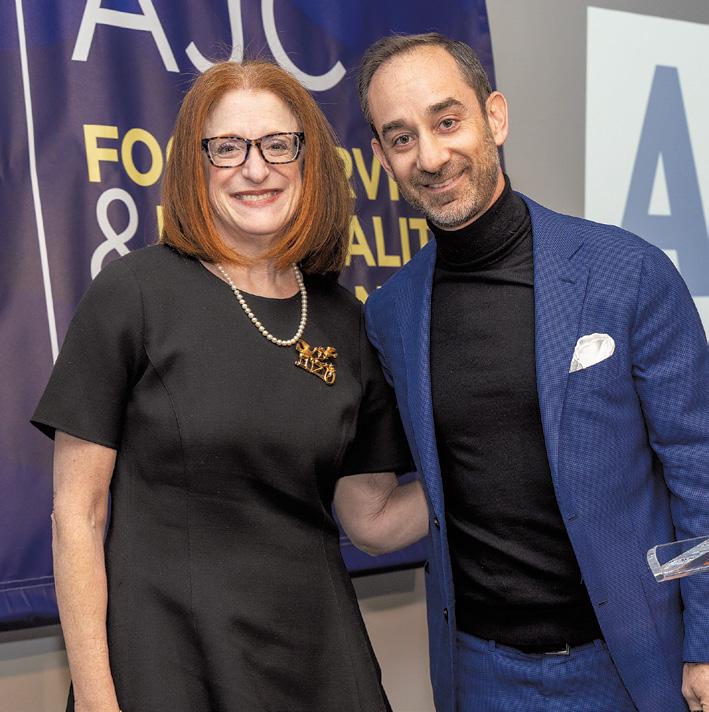
opportunities. “Carolyn Richmond’s impact reaches far beyond her legal expertise,” Rigie said. “Her advocacy, education efforts, and dedication have shaped the industry’s resilience.” Richmond expressed her gratitude, stating, “It’s an honor to stand among such incredible leaders and to be part of an event that underscores the importance of unity in the face of challenges.”
The evening was rich with moments of inspiration and camaraderie. Fred

Swig is a fast-growing chain with almost 60 locations offering customizable dirty sodas, energy drinks, and refreshers (water based drinks).
What started in Utah as a popular alternative for those abstaining from alcohol and coffee has taken hold among the younger crowd. A combination of sodas, flavored syrups, cream, fruit, or other inclusions ranging from tapioca pearls
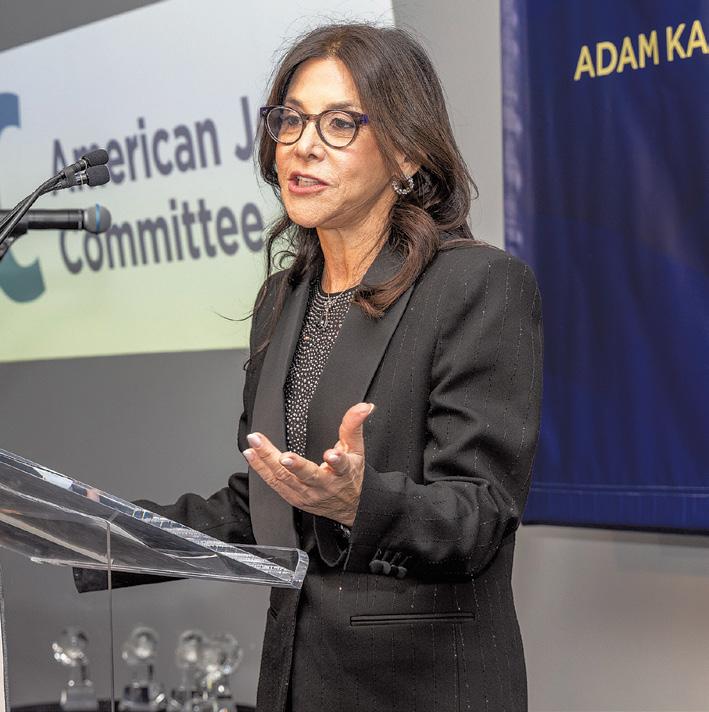
Singer’s introduction of Hutner and Schwartz traced the remarkable history of Advance Tabco, while Eric Weiss and Andrew Rigie brought humor and heartfelt tributes to the stage. Carolyn Richmond reflected on the significance of her recognition, saying, “This award is not just for me but for everyone in the hospitality industry working tirelessly to adapt, grow, and support one another.”
As the AJC continues its mission to
to cookie crumbs, dirty sodas appeal to those looking for a refreshing, inexpensive, non-run-of-the-mill drink, or a flavorful caffeine & sugar pick-me-up coffee alternative. Infinitely customizable, these drinks offer affordable adventure in a cup.
This trend will likely not only change how soda is served and consumed, but we are already seeing some carryover into coffee, with iced tea and coffee combinations, or coffee mixed with lemonade for a refreshing caffeinated drink.
With over 20 years of experience in culinary arts, media relations, and brand strategy, Leith Steel brings extensive industry knowledge to Carbonate. At af&co., she managed high-profile restaurant accounts and secured press in major outlets. As Senior Strategist at Carbonate, she leads trend reports, contributes to industry publications, and drives client marketing strategies.
combat antisemitism and foster inclusivity, foodservice operators, restaurateurs, and distributors are encouraged to participate in future events and initiatives. Opportunities to support the cause include sponsorships, volunteering, and participating in advocacy programs.
This tribute dinner not only celebrated the achievements of industry leaders but also reinforced the shared commitment to driving positive change, both in business and beyond. Through its enduring tradition, the AJC-Foodservice & Paper Division continues to inspire unity and purpose in the fight against antisemitism. Gary Spruch, Division Coordinator, emphasized, “The AJC’s work is more important than ever. By joining us, industry professionals can play a vital role in shaping a more inclusive future.”
For more information, visit ajc.org or contact Gary Spruch at spruchg@ajc.org.
give back.”
The Partridge Club’s holiday gala is renowned for attracting leaders across the hospitality spectrum, fostering camaraderie and collaboration. Attendees included a distinguished mix of food and beverage professionals, kitchen design consultants, equipment suppliers, healthcare and corporate dining notables. Guests included James Davella of Davella and Associates, Christine Gurtler and Ed Hull from Jacobs Doland Beer, and Peter Fernandez of Fresh and Tasty. Together, these professionals celebrated not only the season but the shared vision of nurturing the next wave of hospitality talent.
Their families attended the gala, creating a moving connection between the
club’s history and its present. Pallen remarked: “Our holiday events are a time to reflect on those who built the foundation of this club and our industry. Their spirit lives on through their families and the work we continue to do in their honor.” These tributes underscored the close-knit nature of the Partridge Club, where personal connections and professional passion intertwine to create a vibrant community.
Under Pallen’s leadership and the guidance of a forward-thinking board, the Partridge Club has significantly expanded its scholarship program. The funds raised at the gala directly benefit students who might otherwise face barriers to pursuing careers in hospitality. “We’re not just funding education; we’re
NEWS, from page 100
José Andrés has opened his first airport restaurant, The Capital Landing, at the Ronald Reagan National Airport in Washington, D.C., in partnership with Capital One. The hybrid lounge-restaurant features a globally inspired menu with tapas options such as crisp pan con tomate and gambas al ajillo, Spanish beers and Basque cheesecake. Diners at the lounge-restaurant, which is open to the public, pay a flat fee for access to the food, which includes caviar cone carts.
James Beard Award-nominated chef Kate Williams’ acclaimed restaurant Lady of the House makes its highly anticipated reopening in a new stunning space with a revamped menu. The original Lady of the House — which was steeped in accolades, having been named one of Esquire’s and GQ’s Best New Restaurants of the Year and receiving a James Beard Award nomination for Best New Restaurant — closed after its original building was sold during the pandemic in 2021. Committed to bringing back what had long been her passion project, and her personal ode to the Irish hospitality she grew up with, Kate resurrects her evolved version of Lady of the House as a reflection of the chef she is today, and opens the restaurant with her long-time business partner Jason Singer, who also designed the space.
Acclaimed chef Angelo Sosa opens his restaurants Tía Carmen and Carmocha in Indian Wells at the Grand
opening doors and creating opportunities,” Pallen explained. Their families attended the gala, creating a moving connection between the club’s history and its present. Jason Pallen remarked: “Our holiday events are a time to reflect on those who built the foundation of this club and our industry. Their spirit lives on through their families and the work we continue to do in their honor.” These tributes underscored the close-knit nature of the Partridge Club, where personal connections and professional passion intertwine to create a vibrant community. This commitment to philanthropy extends beyond financial support, as the club fosters mentorship and networking opportunities that provide invaluable guidance for students entering the field.
Hyatt Indian Wells Resort and Villas. The latest project from Chef Sosa and long-time partner and restaurant developer Mark Stone, Tía Carmen pays homage to Chef Sosa’s aunt (tía) Carmen, while also celebrating the local landscape, farmers and community of the Southwest, reflecting a mix of tradition and modernity with a Californian flair. This marks the second location of Tía Carmen, with the first one located in Phoenix, AZ. Carmocha is a brand new concept from Chef Sosa, featuring small plates from the perspective of his Tía Carmen if she had traveled round the world and returned from her journeys to put her own spin on the dazzling array of flavors she experienced. Chef Sosa is collaborating with a variety of local and Los Angeles based purveyors to supply meats, vegetables, herbs, and more for Tía Carmen and Carmocha. Both concepts are designed by LAbased indidesign.
A new omakase experience awaits at Umi and M by Tasuku Murakami. Atlanta’s thriving food scene now offers Umi uniting classic and modern Japanese flavors with meticulous technique, sophisticated flavors and a luxe, buzzing atmosphere in the heart of the city's Buckhead neighborhood. In late 2023, Umi opened M by Tasuku Murakami, an omakase experience offering around 18 courses just above the restaurant's main dining room. The team is also behind Himitsu, a Japanese craft cocktail lounge hidden next door that's intended to complement a night out at Umi or M by Tasuku Murakami.
With Co-Executive Chef Todd Dae Kulper leading the kitchen and Co-Executive Chef Tasuku Murakami (who previously worked at MICHELIN-starred restaurants
As the annual lunch concluded, guests left the NYAC inspired by the connections they had made and the cause they supported. The funds raised will provide critical assistance to aspiring hospitality professionals, ensuring that the industry continues to thrive with fresh talent and ideas. “The Partridge Club is about more than the events we host. It’s about the lives we touch and the future we shape. This gala is a reminder of how powerful that mission can be,” Pallen concluded. By blending tradition with purpose, the Partridge Club’s holiday gala remains a shining example of how the hospitality industry can celebrate its past while investing in its future.
Ginza Iwa in Tokyo and Sushi Azabu in NYC) leading the sushi program, Umi’s menu offers an experience for the senses with the highest quality ingredients and freshest fish and proteins sourced daily from around the globe –all set to the backdrop of Umi’s dark and moody dining room designed by the late Atlanta artist, designer and icon Todd Murphy. Umi’s libations menu offers an expansive selection of exclusive craft sake, classic & signature cocktails, premium wine and champagne curated by the restaurant’s Level III Advanced Sommelier Joon Lim, fine spirits and a tight list of Japanese beers.
The Group Hospitality, renowned for the success of New York City’s beloved Omakase Room by Mitsu and Omakase Room by Shin, opened its third omakase concept, Omakase Room by Kanemaru, in the heart of Chicago. This exclusive culinary experience invites guests on a 16-course journey through Chef Shinichiro Kanemaru’s expertly curated menu, combining Japanese precision with contemporary Chicago flair. Led by Chef Kanemaru, a master sushi chef with over three decades of experience, the omakase counter offers a traditional Japanese experience featuring the finest fish sourced directly from Japan and crafted with Chef Kanemaru's passion and mastery of sushi. While staying true to traditional Japanese methods, Chef Kanemaru incorporates local, small-batch ingredients and seasonal flavors, infusing Chicago’s energy into each bite. Signature dishes include Hokkaido-sourced Uni and soy marinated Toro, meticulously crafted to honor the natural flavors of each ingredient.
negotiable. Encourage your team to wear supportive, slip-resistant shoes to reduce joint impact and maintain alignment. Comfortable shoes not only reduce fatigue but also decrease the risk of slips and falls, keeping your team safe on their feet.
In serving the restaurant and foodservice industry, we’ve learned that teamwork and communication reduce physical demands. A culture of collaboration can help reduce physical demands. Employees should feel comfortable asking for help with heavy lifting or large orders. Open communication about physical limitations can prevent injuries and foster a supportive workplace.
Our insights gained from working closely with foodservice businesses indicate that effective leaders should model wellness practices. Wellness starts at the top. As a manager or owner, demonstrate your commitment to health by practicing what you preach. Share your own wellness routines and encourage staff to prioritize their well-being. Your actions can inspire your team to follow suit.
Our insights gained from working closely with foodservice businesses indicate that management needs to address both mental health and physical well-
ness. Mental health is just as important as physical wellness. Regularly check in with staff to identify signs of burnout or emotional strain. An open-door policy and accessible mental health resources signal to employees that their well-being is a priority.
Through years of experience in foodservice consulting, we’ve found that positive reinforcement fosters a wellness culture. Recognizing employees who take proactive steps for their health encourages a wellness-focused culture. Consider friendly competitions or wellness challenges and celebrate those who model good habits like proper lifting techniques, staying hydrated, or participating in stretches. Positive reinforcement motivates the entire team to prioritize self-care.
By incorporating these strategies, restaurant owners and managers can create a resilient, health-conscious team. A focus on wellness not only reduces injuries and absenteeism but also improves morale and productivity. My team and I are here to help you implement these practices and answer any questions you may have. Together, we can make the restaurant industry a healthier place, one shift at a time.
high-quality products while improving internal processes,” said Chris Karssiens, President of the Americas Region.
Rod Johnson was promoted to Senior Director of Import Products, tasked with leading the strategic import plan for the Hoshizaki Alliance. With decades of experience in the foodservice equipment industry, Rod brings a wealth of knowledge that will drive the company’s import operations. “Rod’s expertise will help us expand our product catalog and strengthen synergies across the Alliance,” Karssiens remarked.
Earlier this month, Hoshizaki completed its acquisition of Cannon Marketing, Inc. (CMI), integrating it into the Hoshizaki Southeastern Distribution Center. This strategic move strengthens Hoshizaki’s distribution network in North Carolina, South Carolina, and Eastern Tennessee.
Allan Dziwoki, President of Hoshizaki America, noted, “This acquisition aligns with our mission to enhance the supply chain and improve value for our customers. By bringing CMI into the fold, Hoshizaki can better serve its partners with faster delivery times and improved customer support.”
Hoshizaki’s approach to business emphasizes more than just product quality;
it’s about building lasting relationships. The recent organizational changes are a clear reflection of its customer-first philosophy, ensuring the company’s products and services continue to set the gold standard in the industry.
In addition to expanding leadership and bolstering distribution, Hoshizaki continues to invest heavily in research and development. The company is exploring advanced refrigeration technologies and smarter ice-making solutions to meet the evolving demands of modern foodservice operations. “Every decision we make is centered on our customers’ needs,” said Karssiens. “By constantly innovating, we ensure that our products help our clients run their businesses more efficiently.”
As Hoshizaki continues to grow, its focus remains on driving meaningful change. From offering more sustainable equipment to expanding training programs for its partners, the company is committed to equipping foodservice professionals with the tools they need to thrive.
“Our customers can look forward to best-in-class service, innovative products, and the reliability that Hoshizaki has been known for globally,” concluded Meyer.
num is setting and executing an ambitious agenda for the organization. A veteran of the industry with over two decades of experience, Varnum is passionate about mentoring young professionals and fostering innovation. “My focus is on building pathways for the next generation of leaders in our industry,” Varnum shared. “Programs like SHFM’s Rising Stars and the Julie Flik Continuation Program are essential for nurturing talent and ensuring our field continues to evolve and excel.” Under Varnum’s leadership, SHFM is prioritizing mentorship, collaboration, and sustainability, aiming to create a more inclusive and forward-thinking industry.
The Spotify headquarters provided an energetic and modern venue for the SHFM holiday celebration. Attendees
were treated to a culinary showcase that reflected the cutting-edge trends shaping workplace dining. From artisanal hors d'oeuvres to interactive food stations, the evening highlighted the creativity and expertise that define the industry. “It’s events like this that remind us why we do what we do,” Varnum said. “Hospitality isn’t just a profession; it’s a calling to create experiences that bring people together.”
In addition to fine dining, the evening featured live entertainment, networking opportunities, and a heartfelt toast from Varnum, who thanked SHFM members for their dedication and innovation throughout the year.
As SHFM continues to lead the charge in workplace hospitality, its focus remains on addressing emerging challenges while building stron -

ger connections across the industry. With its emphasis on mentorship, innovation, and collaboration, the organization is shaping the future of contract feeding and workplace amenities. “This is an industry that thrives on creativity and resilience,” Varnum
concluded. “Together, we’re creating environments where employees feel valued and inspired, and that’s something worth celebrating.”
As the evening drew to a close, attendees left with a renewed sense of purpose and excitement for the year ahead. The holiday party at Spotify’s headquarters was more than just a festive event—it was a testament to the power of hospitality to connect, inspire, and lead.

retains its retro charm without becoming overpowering.
Retro-inspired spaces often overlook key details that can elevate the overall experience. Lighting, for example, plays a critical role in setting the tone. Globe pendants, arranged in staggered heights or clusters, provide a vintage feel while maintaining a modern edge. Incorporating LED technology into classic designs ensures the space is both energy-efficient and visually appealing. Bold patterns and textures, another hallmark of retro design, should be used sparingly to avoid overwhelming the space. Decorative tiles or throw pillows are great places to introduce these elements without dominating the overall look. Mirrored surfaces, which can feel outdated in large applications, are better used in subtle ways, such as irregularly shaped or tinted mirrors, to add interest and sophistication. By addressing these oftenoverlooked details, restaurateurs can ensure their spaces feel cohesive, polished, and timeless.
Retro design can easily veer into
“theme park” territory if not executed carefully. Overusing saturated tones or bold patterns risks overwhelming the space. Balance is essential. For instance, pair rich colors with neutral tones, and introduce pops of bold patterns on smaller surfaces like throw pillows or accent tiles.
Ultimately, a successful retro-inspired restaurant hinges on storytelling. Every element, from the furniture to the finishes, should reinforce a cohesive narrative. Think about how your target audience will engage with the design. What emotions do you want them to feel? How will the space encourage them to linger, celebrate, or return for another visit?
Designing a retro-inspired space that feels both nostalgic and contemporary requires a strategic, thoughtful approach. At House of Form, our team specializes in creating memorable environments that resonate with diners and keep them coming back. If you’re ready to reimagine retro for your restaurant, we’re here to guide you every step of the way.
High-Quality Food Products:
Organic and sustainably sourced food products are in high demand. Items such as premium meats, seafood, specialty cheeses, and gourmet condiments are popular among hotels, restaurants, and catering services.
Beverages:
Craft beers, fine wines, specialty coffees, and artisanal spirits are sought after by the HORECA sector. These products enhance the dining experience and attract a discerning clientele.
Health-Conscious Options:
With the rising trends in health and wellness, products like plant-based foods, gluten-free items, and low-calorie alternatives are becoming staples in many HORECA establishments.
Convenience Foods:
Pre-packaged meals, ready-to-eat snacks, and frozen foods offer convenience without compromising on qual-
ity, making them popular in the fastpaced HORECA environment.
Eco-Friendly Products:
Sustainable packaging, biodegradable utensils, and equitably sourced ingredients resonate with the eco-conscious values of many consumers and businesses in the HORECA sector.
By leveraging Food Export resources and programs, businesses can successfully navigate the complexities of the HORECA sector. Our programs provide valuable support, from market research to funding for marketing initiatives, ensuring successful entry and sustained growth in international markets: https:// www.foodexport.org/our-programs/
For more information, visit Food Export’s website at https://www.foodexport.org/ and explore the extensive resources and programs available to help your business succeed in the HORECA sector.
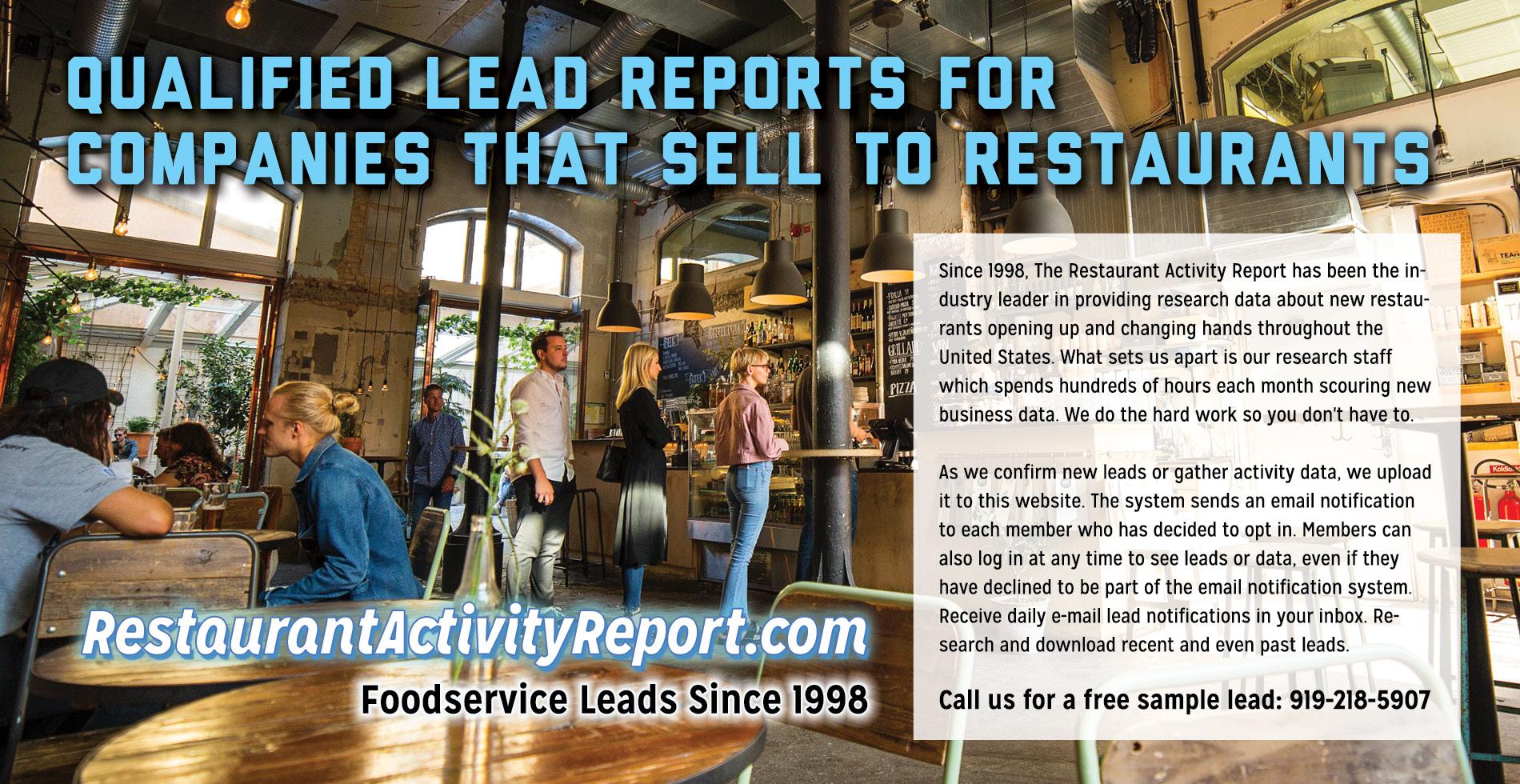
quick, satisfying, and easy to eat. Think comfort food with a fun twist—perfect for guests looking to refuel or celebrate. With AutoFry, you can deliver a variety of fried favorites without needing a full commercial kitchen.
Suggested Menu Items:
Finger Foods:
• Mozzarella sticks
• Chicken tenders
• Onion rings
• French fries
Themed Snacks:
• Shatter Fries
Crispy shoestring fries topped with crumbled bacon, melted cheddar, green onions, and a drizzle of tangy ranch sauce. A crunchy, crave-worthy snack that lives up to the smashing theme.
• Batter Up Bites
Deep-fried mac and cheese balls served with a spicy marinara dipping sauce. Perfectly crunchy on the outside, gooey on the inside—ideal for a quick post-smash indulgence.
• Wrecking Wings
Fried chicken wings tossed in your choice of bold sauces like “Smash Sauce” (sweet and spicy glaze) or “Break Down Buffalo.” Served with celery sticks and blue cheese or ranch dressing.
Combo Deals:
• Smash & Snack: A 15-minute smash session followed by a choice of finger food and a drink.
• Group Feast: Food platters designed for parties, paired with shared smashing experiences.
Adding a foodservice component does more than boost revenue; it enhances customer satisfaction and loyalty. Guests will associate your Rage Room not only with stress relief but also with delicious food and drink. Here’s how foodservice can create a competitive edge:
• Brand Differentiation: Stand out from other entertainment options by offering a comprehensive experience.
• Upselling Opportunities: Suggest combos and exclusive menu items for larger groups or special events.
• Increased Foot Traffic: People may visit for the food alone, especially if your menu becomes locally popular.
• Social Media Buzz: Shareable menu items encourage customers to post photos and tag your Rage Room, boosting visibility.
The ultimate goal is to create a space where guests can smash, eat, and socialize. With the addition of ventless kitchen solutions like AutoFry, Rage Rooms can
evolve into full-service entertainment hubs. By combining high-energy activities with a mouthwatering menu, you’ll not only increase profitability but also ensure customers leave with smiles on their faces—and maybe a little less stress in their lives.
To make your Rage Room the go-to spot in town, consider the following:
• Invest in Equipment Like AutoFry: Its ventless design and ease of use make it the perfect solution for adding foodservice.
• Curate a Fun, Snackable Menu: Finger foods and drinks pair perfectly with the Rage Room experience.
• Think Beyond the Smash: Create a space that encourages guests to stay, celebrate, and come back for more.
• Promote the Experience: Leverage social media to showcase your unique combination of activities and food.
By integrating a strong foodservice program, Rage Rooms can provide guests with more than just a smashing good time—they’ll leave feeling full, satisfied, and ready to tell their friends about the unforgettable experience. With tools like AutoFry at your disposal, success is just one delicious menu away.
To learn more about how ventless kitchen equipment can benefit your business, visit mtiproducts.com today!
the Midea Commercial Microwave and less than a minute later it’s ready to join the main on that plate and then “IN THE WINDOW”! That means you’re saving on utility costs while still delivering topquality and consistent food.
Of course, microwaves aren’t magic— they require care and understanding. For example, did you know the FDA food code requires food cooked in a microwave to be covered, especially if it’s raw? Covering doesn’t just meet safety standards; it also traps steam, which helps with even cooking and keeps the microwave clean. And maintenance is key. A poorly maintained microwave won’t perform at its best. Make sure your team knows how to clean and inspect the equipment regularly.
If all this sounds overwhelming, don’t worry—that’s what I’m here for. My team at Midea is ready to answer your questions, provide hands-on training, and help you make the most of your microwave technology. Whether you’re a small café or a high-volume restaurant, we’ll show you how to turn your microwave into a true kitchen ally.
At the end of the day, my mission is simple: I want you to see Commercial microwaves not as a backup plan but as a powerhouse tool that enhances your kitchen’s efficiency, profitability, and customer satisfaction. Give us a call, and let’s get started.
sketches, which he uses as a means of creative exploration. There are six sheets, each printed on both sides and suitable for framing.
There will be no reprint of this edition of this book. Fully clothbound hardcovers in a clothbound slipcase. Color and black-and-white photographs throughout Recipes and Backstage. Watercolors in a portfolio for Drawings.
Sketch by Mourad Mazouz and Pierre Gag-
naire
From the London restaurant which is as renowned for its boldly whimsical interiors as it is for its menu created by Pierre Gagnaire, this is a dazzling display
of iconoclastic creativity. Lavish full-color photography reveals color-saturated dining rooms, extravagant decoration in one giving way to austerity before turning once again to deco elegance.
Chef Pierre Gagnaire’s cuisine is similarly dizzying, tipping its hat to an abundance of influences without being dominated by any of them. Veal pie with endive, pineapple, and green pepper jam; pan-fried cuttlefish, girolles and red currants with prawn stock and shellfish bisque; chilled cream of carrot and honey soup with melon and white port sorbet and white peach.

Host Jeff Davis travels throughout California and reaches across the globe to visit with guests in person to share the stories of the fascinating people who craft the wine we love. Hear about winemakers and owners, as well as brewers, distillers, chefs, trends and more in Napa, Sonoma, and across the globe. from page 64
All of likely impossible to recreate precisely anywhere else, but a daring example of imagination unleashed.
Editor’s Note About PodcastsListen and subscribe wherever you get your podcasts, including on Apple Podcasts, iHeart, Spotify, Stitcher, Google Podcasts, Audible & more.

Connecticut plays a vital role in making our state’s dining scene exceptional,” Dolch concluded . “We invite everyone to join us as we continue to grow and strengthen this amazing community.”
The Connecticut Restaurant Association (CRA) plays a pivotal role in supporting the state’s dynamic restaurant and hospitality industry. Beyond hosting events like the CRAZIES Awards, the CRA is a powerful advocate for its members, ensuring their voices are heard on
legislative and regulatory issues. From lobbying at the state Capitol to advocating for fair labor policies, tax regulations, and health and safety standards, the CRA helps shape an environment where Connecticut’s restaurants can thrive.
Additionally, the association offers members a wealth of resources to enhance their operations. These include educational seminars, workforce development programs, and access to industry-specific research and data. CRA
from page 20
Beyond these, several broader trends are shaping the plant-based food landscape:
1. Expansion of Alternative Proteins:
Plant-based proteins such as pea, chickpea, lentil, and fava bean continue to gain traction. Novel options like mycoprotein (fungi-based) and even insect protein are being explored for their sustainability and versatility.
2. Whole-Food Plant-Based Diets: Consumers are gravitating toward minimally processed ingredients, such as beans, lentils, whole grains, and vegetables, for their health benefits.
3.Cultivated and Lab-Grown Innovations:
Lab-grown meat and dairy products
are becoming mainstream, with techniques like precision fermentation enabling the creation of animal-free dairy. Hybrid products combining plant-based and cultivated meat are also emerging.
4. Eco-Conscious Packaging: Sustainability extends to packaging, with brands adopting zero-waste initiatives and offering transparent sustainability metrics.
5. Growth in Plant-Based Dairy Alternatives: Oat, pea, and sesame milks are gaining traction alongside innovations in cheese alternatives crafted from cashews, coconut oil, and fermented techniques.
6. Plant-Based Seafood:
Alternatives to tuna, salmon, and shrimp, made from ingredients like algae and soy protein, are addressing overfish-
from page 72 GALAXY GROUP
Each Astra walk-in is certified by NSF, DOE, and UL, ensuring compliance with food safety and energy efficiency standards. The extensive inventory and modular design allow for quick delivery and hassle-free installation, making Astra solutions both cost-effective and user-friendly. “Our products are designed to balance quality and affordability,” Inan noted. “We optimize every step of the process, from sourcing materials to final assembly, so our clients get the best value without compromising performance.”
Each line offers cam-lock panels for
members also benefit from discounted services, such as insurance programs, ServSafe certifications, and legal assistance tailored to restaurant needs. Networking opportunities abound, with events designed to foster connections between restaurateurs, suppliers, and industry professionals. Members can also participate in regional meetings, supplier showcases, and webinars that keep them informed of industry trends and best practices. “The CRA is
committed to being a valuable resource for Connecticut’s restaurant and hospitality businesses,” said Scott Dolch. “Our mission is to support, promote, and protect our members while fostering growth in this vital industry.”
For more information on how to join or support the Connecticut Restaurant Association, visit their website at www. ctrestaurant.org.
quick assembly, various door options, and top-mount or remote refrigeration. Professional installation is also available to ensure seamless setup.
Today’s foodservice operators face growing challenges, including labor shortages and rising food costs. Efficient refrigeration systems like the Astra series are more vital than ever in reducing waste and ensuring food safety. “Inflation and labor issues are reshaping our industry,” Inan noted. “With our solutions, operators can trust that their food storage is secure, helping them manage resources better during uncertain times.”
By prioritizing reliable performance,
ing concerns while catering to seafood lovers.
7. Improved Taste and Texture:
Companies are refining plant-based products to appeal to flexitarians and meat eaters by enhancing flavor and texture.
8. Integration into Fast Food:
More fast-food chains are offering plant-based menu options, increasing accessibility and driving mainstream adoption.
Whole Foods Market also highlights exciting trends in its 2025 Food and Beverage Trends Forecast:
1. Plant-Based Aquatic Ingredients:
Seaweed and other aquatic plants are gaining recognition as nutrient-dense, sustainable protein sources.
2. Ever-Adaptable Dumplings: Dumplings are being reimagined with plant-based fillings, aligning with fusion cuisine trends and vegan-friendly formats.
3. Crunch as a Texture Trend: Snacks like roasted chickpeas, mushroom chips, and sprouted nuts are meeting the demand for satisfying textures in plant-based foods.
The Bottom Line
The plant-based food trends of 2025 showcase the intersection of consumer interest in sustainability, health, and bold culinary innovations. These trends are not only transforming menus but also redefining how we think about food, flavor, and the future of dining.
energy efficiency, and thoughtful design, Galaxy Group has positioned the Astra line as a trusted partner for foodservice operations nationwide. For foodservice operators, equipment dealers, or consultants looking to upgrade their refrigeration solutions, Galaxy Group offers easy access to information and assistance. “Our team is here to help,” Inan stated. “We work closely with clients to ensure they find the right solution for their needs.”
Galaxy Group recognized that a key to the success of the Astra program was selecting the perfect location for efficient logistics and accessibility. Establishing their 50,000-square-foot facility in Kear-
ny, New Jersey, strategically positioned in the heart of Metro New York and the Mid-Atlantic region, was a deliberate choice. This location allows for simple and hassle-free pickups, providing dealers and consultants with quick access to inventory. “We wanted to ensure our products were readily available to one of the busiest markets in the country,” Inan, concluded. “This facility streamlines operations and supports our Quick Ship promise.”
To learn more about the Astra Quick Ship, Custom, and Warehouse lines, visit the GalaxyGroupCorp.com to explore your options and schedule the design and pickup of your next walk-in.

The law strictly prohibits any form of retaliation against employees who request or use PPL or who file a complaint for alleged violations of the law. Retaliation includes any threat, discipline, discharge, demotion, suspension, change in work hours or work location, reduction of other available paid time off, or any other adverse employment action against the employee for exercising or attempting to exercise any right guaranteed under the law. Nevertheless, employers may take disciplinary action, up to and including termination, against employees who use PPL for purposes other than permissible under the law or who otherwise abuse this leave.
To comply with the new law employers should consider taking the following steps moving forward:
1) Update employee handbooks: Employers should include a detailed
staff are stretched thin, making it more important than ever to select gloves that won’t slow them down. Imagine wearing gloves for hours that tear easily or feel restrictive. It’s not just a productivity issue—it’s a morale problem.
The right glove can make a huge difference. For example, lightweight nitrile options offer durability without adding bulk, while hybrid gloves are designed for quick changes, reducing downtime in fast-paced environments.
It’s tempting to cut costs by opting for the cheapest gloves, especially when margins are tight. But this “penny-wise, pound-foolish” approach can backfire. Cheap gloves often tear more easily, leading to higher usage rates and increased spending over time. Worse, they can compromise food safety, exposing your business to significant risks.
A better approach is to consider the total cost of ownership. A glove that lasts longer and improves worker efficiency may cost a bit more upfront but will save you money in the long run.
Beyond performance and cost, there’s
written policy outlining the new PPL benefit, including how employees can request leave, what is available to them, and when.
2) Frontload leave: Employers should budget for and be prepared to frontload the 20 hours of PPL to any employee who requests it.
3) Monitor compliance: While the law does not specifically require recordkeeping on paystubs, employers should maintain records of available types of leave and amounts of each type of leave used in a manner accessible to both the employer and employee for accuracy purposes.
New York’s PPL law is an important step forward in supporting the health and well-being of pregnant individuals and those trying to conceive. Employers should seek guidance from their employment counsel to ensure they are prepared to comply in 2025 and beyond.
from page 86
a growing emphasis on sustainability in the foodservice industry. Many operators are seeking gloves made from more eco-friendly materials or manufactured through cleaner production processes.
Supporting local communities is another key sustainability consideration. Programs that give back—whether through charitable partnerships or environmentally sustainable practices—can align with your company’s values and resonate with your customers. Through our One Case • One Meal program, we’ve donated over 8 million meals to food-insecure families across the U.S. By choosing Elara, you’re not just buying gloves; you’re making a positive impact in your local community.
To navigate the 2025 disposable glove market effectively, start by assessing your specific operational needs. Identify the tasks your gloves will be used for, such as cooking, cleaning, food prep, or maintenance, and choose gloves designed for those applications. Ensure your staff is involved in testing gloves to guarantee a proper fit and comfort—
In April, Terence Tubridy of In Good Company Hospitality will share his expertise in identifying and developing talent within your team—an essential skill in any successful operation. On May 12, Loycent Gordon, owner of Historic Neir’s Tavern, will talk about creating community-driven events to build customer loyalty and drive sales. Finally, in June, David Mohally, coowner of Sleeping Giant, will explore how to monitor trends and stay relevant in a rapidly changing market.
Each of these sessions is designed to provide practical takeaways and foster meaningful conversations. As an industry, we face so many shared challenges, from rising costs and labor shortages to shifting consumer expectations. By coming together in this virtual forum, we can learn from each other and develop strategies to not only survive but thrive in one of the most competitive hospitality markets in the world.
“The Conversation Series is about more than just sharing tips and tricks,”
I tell our members. “It’s about building a community where we can lift each other up and move forward together. That’s how we’ll continue to innovate, grow, and strengthen our businesses.” I believe this series will become a staple for our members, providing valuable insights while strengthening the bonds that make our industry so resilient. We’ve been through a lot in recent years, and if there’s one thing we’ve learned, it’s that collaboration is key.
If you’re ready to join the conversation and be part of something bigger, sign up for our first session on January 13. You’ll leave with actionable advice, fresh ideas, and a renewed sense of connection with your peers. For more information or to register, visit NYCHospitalityAlliance.org or email info@ thenycalliance.org. Let’s make 2025 a year of growth, innovation, and collaboration. I’ll see you at the Conversation Series!
these factors are crucial for compliance and efficiency. Instead of focusing solely on the price per glove, evaluate the total cost of ownership, factoring in durability, replacement frequency, and their impact on worker productivity. Staying informed about market trends, including tariffs, supply chain developments, and new product innovations, will help you anticipate potential disruptions and make proactive decisions. By following these steps, you can balance safety, costeffectiveness, and operational efficiency in your glove selection process. Navigating the disposable glove market in 2025 requires a proactive, informed approach. From rising tariffs to supply chain hurdles, the challenges are real, but they’re not insurmountable. By prioritizing quality, safety, and long-term
value, you can ensure your operation remains efficient, compliant, and competitive.
Remember, the right glove isn’t just a cost—it’s an investment in your team, your brand, and your customers’ safety. Let’s make 2025 a year of smart, sustainable choices.

you know—to create easy but memorable menu wins.
• R&D: Wherever there’s smoke, there’s flavor. Learn the surprising ways a tantalizing smoked protein can show up on a menu, no matter your setup or segment of the industry.
• CREA: How top chefs – and you –can use cryoconcentration to boost flavor and sustainability.
• Innovation: Innovation is about creating future trends. How do you get the next Sous Vide Egg Bite on your menu?
The day will conclude with a panel discussion: The Past, Present, and Future of Food with panelists including Luigi Bonini, General Manager, Loubo Consulting & former Senior Vice President, Product Experience, Starbucks; Scott Conant, Chef and longtime judge on Chopped; Marc Ehrler, former Vice President of Culinary, Hilton; Christian Pratsch, Vice President, F&B and Operations, Norwegian Cruise Line Holdings;
from page 30
media, emphasizing your commitment to sustainability and innovation.
The rise of plant-based eating is more than a fleeting trend; it reflects a cultural shift toward mindful consumption. Diners today are diverse in their dietary preferences, and menus should reflect this diversity. Offering plant-based options that celebrate global flavors and culinary traditions demonstrates cultural awareness and culinary creativity.
• Expand Culinary Horizons: Look beyond traditional “vegan” dishes. Incorporate global cuisines that feature naturally plant-based dishes, such as Indian dals, Mediterranean mezze, or Ethiopian lentil stews.
• Elevate Familiar Dishes: Reinvent comfort foods by swapping animal-based ingredients for plant-based ones. Think creamy cashew mac and cheese or mushroom bourguignon.
• Foster Inclusivity: Design menus that appeal to vegans, vegetarians, flexitarians, and omnivores alike, making plant-based dining
and Shane Schaibly, Corporate Chef, First Watch.
In honor of International Sous Vide Day, Cuisine Solutions will be hosting an Instagram giveaway. Participants can simply follow @cuisinesolutions, @ breville_commercial and @fortessatableware, comment on the post and then tag three friends they'd love to share a meal with. Prizes will include a Breville Hydro Pro Circulator, a Fortessa tableware setting for four, and the entire line of Cuisine Solutions’ new Signature Sous Vide Meal Starters.
International Sous Vide Day pays homage to Dr. Bruno Goussault’s legacy in the art of sous vide. Dr. Goussault serves as the Chief Scientist at Cuisine Solutions and founded the Culinary Research & Education Academy (CREA). He has taught the application of sous vide cooking to Michelin-starred chefs such as Yannick Alléno, Daniel Boulud, Thomas Keller, Anne-Sophie Pic, and
Joël Robuchon, among many others. Since its inception in 1991, CREA and Dr. Goussault have trained over 80% of the three-star Michelin chefs around the world. Dr. Goussault holds a seat on the board of the Association des Chimistes (Association of Chemists) and Ingénieurs et Cadres des Industries Agricoles et Alimentaires (Engineers and Managers of Agricultural and Food Industries) and was named as one of the 100 visionaries in the Albert Einstein Legacy Project’s Genius: 100 Visions of the Future initiative.
Further information about International Sous Vide Day can be found at: www.internationalsousvideday.com and www.cuisinesolutions.com.
About Cuisine Solutions: Cuisine Solutions is the world's leading manufacturer of sous vide foods. Led by an international team of award-winning chefs, Cuisine
Solutions is recognized as the authority on sous vide—the innovative precisecooking technique that the company pioneered, perfected, and popularized decades ago. Headquartered in Sterling, Virginia, Cuisine Solutions services more than 35,000 restaurants and 3,500 retailers, as well as the world’s top airlines and hotel brands. For more information, visit www.cuisinesolutions.com.
About International Sous Vide Day: Since 2018, International Sous Vide Day is celebrated on January 26th, which marks the birthday of Dr. Bruno Goussault - the pioneer of modern sous vide. The art of sous vide is spreading across the globe, crossing borders and boundaries to connect lovers of good food through prestigious meals. On International Sous Vide Day, we bring the art to the forefront by celebrating chefs and scientists, their innovations and the work they do every day to inspire and transform the culinary experience.
accessible, inviting, and inclusive.
While plant-based leadership is a moral and environmental imperative, it’s also a smart business move. Expanding plant-based offerings can open new revenue streams and attract a broader customer base. Millennials and Gen Z diners, in particular, continue to drive the demand for plant-based meals, and their purchasing power is only growing. Universities and colleges are also joining the movement, with many committing to transitioning 50% or more of their campus dining options to plant-based by 2030, driven by student demand for healthier, more sustainable food choices. Foodservice providers like Aramark and Sodexo have pledged to increase plant-based offerings, with Aramark aiming for 44% plant-based menus by 2025 and Sodexo planning for 50% by the same year. Institutions like the University of California, Berkeley, are leading the charge with goals to make 50% of campus dining
plant-based by 2027. Meanwhile, Harvard University’s student advocacy groups are pushing for broader adoption of plant-based initiatives, signaling a strong shift in the academic sector toward sustainable dining. Institutions like the University of California system and Harvard University have announced ambitious plans to make significant strides in this area within the next five years, setting the tone for widespread adoption across the academic sector.
Moreover, plant-based options often come with higher profit margins due to lower ingredient costs. By positioning your business as a leader in the plant-based movement, you can differentiate yourself in a competitive market and foster customer loyalty.
Success stories abound in the industry. Fast-casual chains like Sweetgreen and Chipotle have embraced plant-based offerings, not only to meet demand but also to align with their brand values. Meanwhile, fine-dining establishments are reimagining
their menus with bold, plant-forward creations that appeal to discerning p alates.
The takeaway? Plant-based leadership isn’t reserved for niche markets. It’s a versatile approach that can be tailored to fit any foodservice format, from quick service to luxury dining.
Conclusion: A Vision for 2025 and Beyond
Committing to plant-based leadership in 2025 is an investment in the future. It’s a chance to drive meaningful change, meet evolving consumer expectations, and contribute to a more sustainable world. By aligning your menu with sustainability goals, engaging eco-conscious diners, and embracing the cultural shift toward plant-based eating, your business can lead the charge in redefining the foodservice industry.
The time to act is now. Let 2025 be the year your business roots itself in change and flourishes in the possibilities of plant-based leadership.
Carrie Manolakos. Her repertoire, which included hits and heartfelt originals, captivated an audience that included some of the most prominent names in the industry.
Among the attendees were PBAC co-owner Sarah Haviland; industry veterans like Leif Billings of Next Step Design, Arlene Spiegel of Spiegel and Associates, Foster Frable of CFL, Gary Jacobs of Jacobs Doland Beer, & James Davella of Davella Studios.
The gala also served as the official unveiling of PBAC’s rebranding initiative. The updated logo and revamped website were met with enthusiasm, symbolizing a reinvigorated identity for the company. Erdheim emphasized the importance of these changes as a visual representation of PBAC’s direction: “The new logo embodies our drive to innovate while honoring our legacy. It’s clean, bold, and modern—just like the solutions we bring

to our clients every day.”
Looking ahead, 2025 promises to be a landmark year for PBAC. Plans include the debut of a second test kitchen in collaboration with Advantage Food Marketing in Long Island, an expansion that will further enhance PBAC’s ability to provide hands-on demonstrations and solutions for clients. Additionally, PBAC announced the search for a second corporate chef to join their team, underscoring their dedication to combining culinary passion with top-tier service.
Posternak, one of PBAC’s co-founders, has not only been a leader in the business but also a creative force behind the gala’s entertainment. Over the years, his program has introduced emerging musical talents to PBAC’s audience, solidifying the event’s reputation as a cultural highlight in the
“The new logo embodies our drive to innovate while honoring our legacy. It’s clean, bold, and modern—just like the solutions we bring to our clients every day.” — Joshua Erdheim

industry calendar. This year’s performance by Carrie Manolakos continued that tradition, earning rave reviews from attendees.
The weekend also saw the announcement of PBAC’s new partnership with Titan Stainless, solidifying its reputation as a premier representative in the New York and New Jersey markets. “We are thrilled to be working with Titan Stainless to offer their


from page 24
not only improves service quality but also enhances job satisfaction.
Herzberg’s Motivation-Hygiene Theory is super relevant here. It suggests that job satisfaction and dissatisfaction are driven by different factors. While poor hygiene factors like salary and work conditions can cause dissatisfaction, true motivation comes from recognition, responsibility and opportunities for advancement. Implement-
ing strategies that address both sets of factors can dramatically enhance job satisfaction.
Your restaurant’s internal culture significantly shapes the external perception. A positive, inclusive work environment not only attracts top talent but also enhances customer experiences. Actively gathering and acting on employee feedback shows that you
value their input and are committed to continuous improvement. Leadership plays a key role here. Leaders who are approachable, fair, and supportive create a culture where employees feel valued and empowered.
Becoming an employer of choice is a journey that requires patience, persistence and continuous improvement. Significant changes and improvements might take six to 12 months, but
quality engineered product line,” said Erdheim. “This addition reflects PBAC’s ongoing commitment to representing the best in the industry.”
As the gala wrapped up, it was clear that PBAC is poised for an exciting new chapter. With fresh leadership, a reimagined brand, and ambitious plans for growth, PBAC continues to solidify its place as a leader in the equipment and supply space.

it’s important to celebrate small victories along the way and stay focused on your goal. All the steps covered here are crucial and contribute to your overall success.
The result of following these steps is improved efficiency and free time to focus on strategic improvement. Start today and take the first step towards becoming the restaurant everybody wants to work at.

accidents, placing liability on the restaurant for not taking appropriate preventive measures. The legal environment in 2024 has seen an increase in personal injury lawsuits, particularly in cases where negligence in maintaining safe premises is evident.
To mitigate risks effectively, restaurant owners and managers must proactively assess potential hazards and work with employees to educate them on safe practices. Ingraining safety best practices into the workplace culture is key to preventing costly WC claims and achieving long-term cost savings. While slips, trips, and falls may be inevitable in a public setting like a restaurant, these risks can be managed through a consistent program designed to monitor and control the most common sources of accidents.
Maintaining a clean, orderly, and well-monitored physical worksite is essential. Preventive maintenance of flooring materials is crucial, as hazards such as bunched or worn mats and carpeting should be routinely checked and replaced. In 2024, many establishments are investing in advanced flooring materials that offer enhanced slip resistance, as well as using IoT devices that monitor
environmental conditions like moisture levels to alert staff before hazards develop.
Tile floors and non-carpeted stairs are particularly dangerous when wet. Slipresistant surfaces, along with proper lighting and door designs that allow visibility to the other side, can significantly reduce the risk of accidents. Regular inspections and the use of hazard signage are proactive steps that go a long way in minimizing accidents.
Exterior safety remains a top concern in 2024, especially as restaurants see heavy foot traffic throughout the day. A cracked sidewalk or curb, though seemingly minor, can pose a significant trip hazard, particularly for distracted customers. Outdoor ramps, necessary for compliance with the Americans with Disabilities Act (ADA), must be moderately angled and carefully maintained, especially during periods of rain, snow, or ice.
Proper lighting around exterior doors and the use of slip-resistant mats both inside and outside the entrance are critical. These mats should be regularly replaced to maintain their effectiveness against slick floors.
Establishing a Footwear Program for Staff
from page 66
our customers is time,” he says. Succession Reps streamlines processes through digital tools like CRM systems, real-time inventory updates, and 3D kitchen layout visualizations. “By saving them time, we let them focus on what matters most—running their business.”
This tech-driven approach extends to their role as advocates for manufacturers. Succession Reps provides feedback on emerging needs, ensuring factories stay aligned with market demands. “Manufacturers expect us to be their eyes and ears in the field,” Kaufmann explains.
Labor shortages remain a pressing concern for operators, and Succession Reps works to address these issues
Designating safety footwear for your waitstaff and other employees is another effective measure. In 2024, many restaurants have implemented formal footwear programs where employers either share the cost or fully purchase slipresistant shoes for their employees. This ensures compliance and helps prevent workplace injuries.
On average, an injured employee requires about 33 days to return to work after a slip or fall incident in 2024. This is consistent with previous years, although the impact of lost time has become more significant due to rising labor costs and the challenges of finding temporary replacements. Employees who injure multiple body parts or suffer from wrist or hand strains are likely to miss the most work time. For instance, coffee shops still report the highest lost time, with wrist injuries posing a significant risk due to the nature of the work.
The soft costs associated with training and compensating new or temporary employees can be double or triple the cost of the original workers' compensation claim. As such, companies that are serious about controlling WC costs must implement a formal return-to-work (RTW) program tailored to their specific business culture and risks.
A well-designed RTW program in 2024 starts with designating a responsible employee, such as an HR professional, to champion claims management. This individual will oversee the program, which should include the following elements:
• A company mission statement focusing on safety and well-being.
• A clear flow of action from injury to return to work.
• An emergency response plan.
• A communication strategy to keep all stakeholders informed.
• A transitional employment plan to accommodate injured employees returning to work.
Implementing these established practices not only builds a stronger culture of safety within your restaurant but also reduces your total cost of risk through fewer injuries and lower insurance rates. By working with an experienced insurance broker, restaurant owners can develop and implement a comprehensive risk management program that addresses the specific needs and risks of their business in 2024.
Speak to your insurance broker for more information about these coverage options. Learn more at https://www.hubinternational.com/industries/hospitality-insurance/
head-on. Whether by recommending high-speed ovens that reduce reliance on skilled labor or slip-resistant safety flooring to enhance workplace safety, the team prioritizes solutions that meet today’s challenges. Kaufmann emphasizes their hands-on approach: “We visit kitchens, observe workflows, and recommend changes that maximize efficiency. It’s about designing smarter kitchens, not just selling equipment.”
The relationship between reps, dealers, consultants, and operators has never been more symbiotic. Succession Reps fosters collaboration through factory visits, live demos, and test kitchen events. “Consultants need to see how a piece of equipment performs before
they recommend it. We make sure they have that opportunity,” Kaufmann says. For instance, when introducing their premium-quality juicers, Succession Reps arranges live demos for chefs and consultants. “These hands-on experiences build trust,” Kaufmann says. “They leave knowing exactly what the product can do.”
Succession Reps’ rebranding effort is also about visibility. “Our new identity helps us maximize exposure and market share for our diverse portfolio,” Kaufmann explains. By representing lines like Titan thermoplastic flooring, handcrafted pizza ovens, and modular shelving systems, they position themselves as a one-stop solution for dealers and consultants.
As the foodservice landscape continues to evolve, Succession Reps remains a trusted partner for innovative solutions. Dealers and consultants can reach out directly to Dan Kaufmann and the Succession Reps team for personalized support, factory visits, and cutting-edge solutions tailored to their needs.
Whether it’s high-speed ovens or handcrafted pizza ovens, Succession Reps has the expertise and products to drive success in today’s challenging market. For more information, visit Succession Reps at www.successionreps. com or call (631) 226-2222.
factured by Pizza Group.
“This oven is more than a tool—it’s a guarantee of quality,” Titus said. Unlike traditional conveyor ovens, the Dragon Oven uses advanced technology and a stone conveyor belt to replicate the taste and texture of wood-fired pizzas. “It’s a significant investment, but it ensures every pizza is cooked to perfection, no matter where it’s made.” This emphasis on quality extends to other kitchen equipment, such as Pizza Group’s dough press, which simplifies preparation while maintaining the integrity of the product.
Cannoli Kitchen Pizza takes a franchise-first approach, providing comprehensive support to its operators. From site selection to staff training, franchisees have access to resources designed to maximize success. “We don’t just hand over the keys and walk away,” Titus said. “Our team is there to guide franchisees through every stage of the process.” The brand also leverages proprietary technology platforms

to help operators manage inventory, control food costs, and optimize employee schedules. These tools not only improve efficiency but also reduce the burden on franchisees, allowing them to focus on delivering exceptional customer experiences.
Cannoli Kitchen Pizza has ambitious plans for growth. Since launching its franchise program in 2023, the
brand has expanded to six locations, with two franchise-operated stores. By the end of 2025, Cannoli Kitchen Pizza aims to have 25 franchise locations open, with an average of two new stores launching each month. “Growth is important, but it has to be sustainable,” Titus emphasized. “We want to ensure every franchisee is set up for long-term success.”
Cannoli Kitchen Pizza is actively seeking franchisees who are passionate about quality food and exceptional service. Restaurant operators, foodservice distributors, and aspiring entrepreneurs interested in joining the Cannoli Kitchen family can reach out directly to Austin Titus for more information. “Franchising is about building relationships,” Titus concluded. “We’re here to help you turn your dream of business ownership into a reality.”
Cannoli Kitchen Pizza isn’t just a restaurant—it’s a business opportunity grounded in tradition, innovation, and the promise of the American Dream. With Austin Titus at the helm, the brand is redefining what it means to succeed in the competitive pizza industry.
To learn more about franchise opportunities with Cannoli Kitchen Pizza visit the company’s website at cannolikitchenfranchise.com

profile. High in protein and Omega-3s, lamb is also keto-friendly and gluten-free, meeting the needs of health-conscious guests. “Gen Z diners crave something new and exciting, and lamb feels like an adventurous yet approachable choice,” said Oyola. “By offering lamb in familiar formats like sandwiches or pizzas, operators can safely introduce this protein to their menus.”
From a sustainability perspective, Aussie Select’s commitment to sourcing exclusively from Australia ensures a reliable supply chain and adherence to strict environmental standards. Australian lamb production is climateneutral, and the animals are pasture-raised, making it one of the most eco-friendly red meat options available. “Every step of our process prioritizes quality and sustainability,” Oyola explained. “Australian lamb’s flavor profile—tender and mild—also makes it a hit with diners.”
What truly sets Aussie Select apart is the brand’s focus on innovation and operator support. Oyola and her team offer samples, recipe ideas, and sales training to help distributors and restaurateurs succeed. “Our goal is to make lamb accessible and easy to
from page 16
face. “Chefs don’t want to spend days learning how to use new equipment,” van Bakergem explained. “We designed Invoq’s controls to feel intuitive and familiar, so teams can get up and running immediately.”
The interface is powered by Android technology, offering a seamless user experience that allows operators to access recipes, monitor performance, and make adjustments with just a few taps. For larger operations, Invoq integrates with Blodgett’s Open Kitchen technology, providing real-time service alerts and diagnostics. “This feature allows operators to remotely monitor and manage their ovens, from updating recipes to tracking energy usage,” van Bakergem said. “It’s about giving them the tools to run smarter kitchens.”
Blodgett’s Invoq combi ovens represent the future of kitchen technology, offering a comprehensive solution for the labor and efficiency challenges facing operators today.
“Our mission is to provide equipment
use,” said Oyola. “From the moment a chef samples our product, they’re impressed by its flavor and versatility. We’re here to help operators incorporate it seamlessly into their menus.” For operators unsure where to start, Oyola recommends a simple approach: “Take a dish that’s already successful on your menu and elevate it with lamb. Swap bacon with lamb on a breakfast item or add lamb to your charcuterie board. It’s a small change that can create a big impact.”
For restaurants, foodservice operators, or distributors interested in learning more, Aussie Select offers direct support and resources to make onboarding easy. “You can reach out to us via email at jaclyn@worldselectcuts. com,” Oyola concluded. “We’re happy to connect operators with local distributors, provide samples, or even help with menu ideation. Whether you’re catering to global flavors or simply looking to save on labor, Aussie Select is ready to help.” With its unmatched combination of convenience, versatility, and flavor, Aussie Select lamb is poised to become a goto solution for foodservice professionals navigating the dual challenges of labor shortages and rising costs.
that meets the toughest demands of the foodservice industry while reducing the burden on operators,” van Bakergem concluded. “With Invoq, we’ve achieved that goal.”
For operators, distributors, or consultants interested in learning more about Blodgett’s Invoq combi ovens, the next step is simple. Visit www.blodgett.com/ invoq to explore product details and watch demonstration videos or schedule a live demo at Middleby’s Innovation Kitchens—a state-of-the-art facility showcasing Blodgett’s full product line.
For personalized guidance, reach out to Ronald van Bakergem and the Blodgett team directly at rvanbakergem@blodgett.com. With advanced features, intuitive controls, and unmatched efficiency, Blodgett’s Invoq combi ovens are transforming commercial kitchens, enabling operators to overcome labor challenges while consistently delivering high-quality results.
supporting Ukraine against Russian aggression.
However, Fertitta inherits new challenges, including maintaining economic ties amid Europe’s shifting political landscape and addressing concerns about trade policies affecting both nations. Navigating Italy’s political dynamics, particularly under Prime Minister Giorgia Meloni, will also require diplomatic finesse. Fertitta’s business background may prove an asset. His expertise in managing diverse teams, negotiating partnerships, and adapting to changing markets positions him well to tackle the complexities of modern diplomacy.
Critics have noted the irony of a restaurateur representing the U.S. in Italy, a country synonymous with fine dining and wine. But Fertitta’s advocates see this as a strength, pointing to his deep understanding of the global food industry and his ability to bridge
cultural divides through shared experiences. “Tilman knows how to bring people together,” Trump stated. “Whether in a boardroom or at a dinner table, he’s a master of fostering connections—and that’s exactly what diplomacy requires.” Fertitta’s foray into diplomacy is just the latest chapter in a storied career. From his iconic CNBC show Billion Dollar Buyer to owning the Houston Rockets, Fertitta has consistently demonstrated an ability to thrive on the national and international stage.
As Fertitta prepares to take on his new role, all eyes will be on how this legendary entrepreneur navigates the transition from boardrooms and ballrooms to the halls of diplomacy. With his track record of success and a personality as bold as the flavors in his restaurants, Fertitta seems poised to bring a unique flair to the U.S.-Italy relationship.
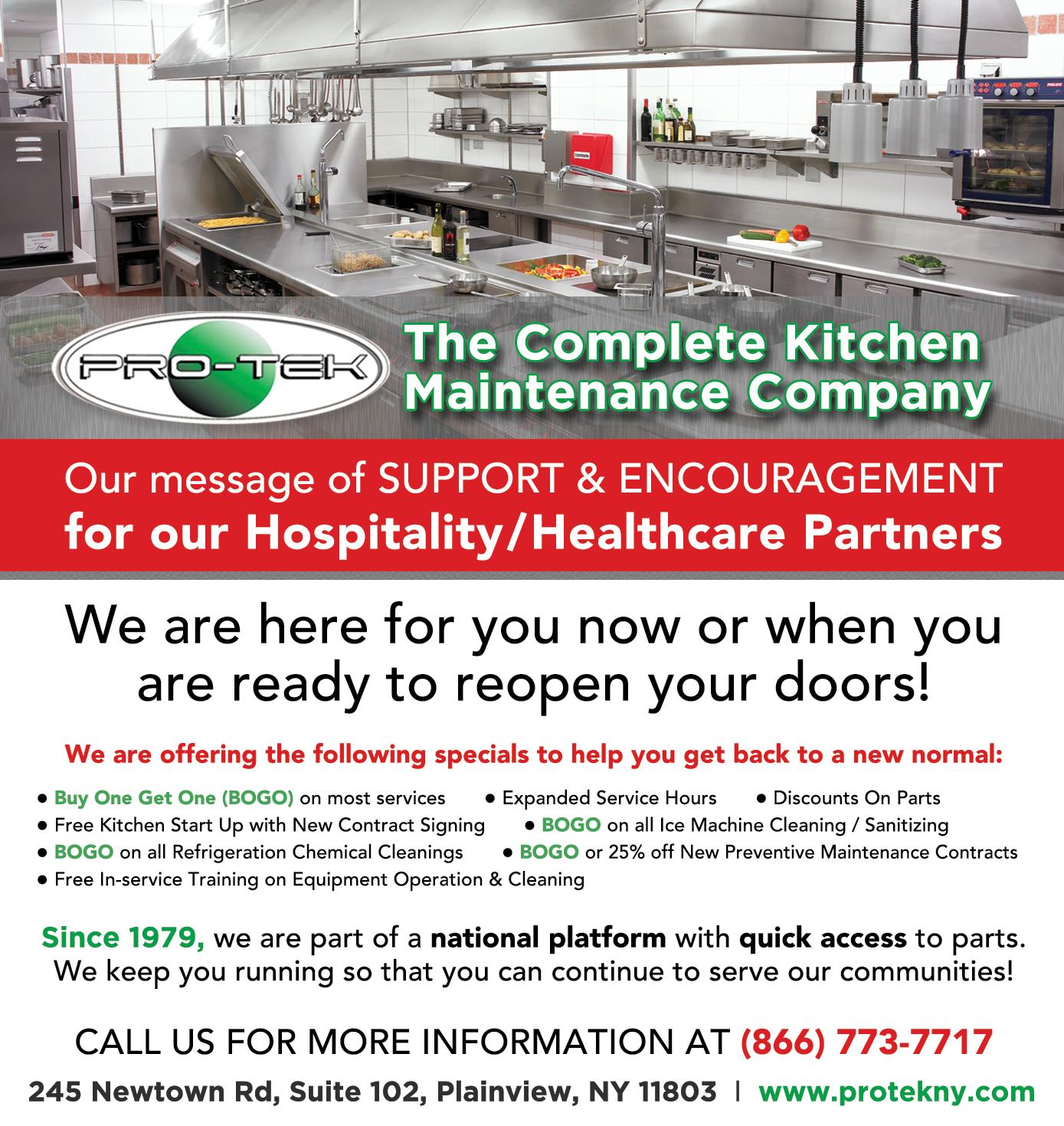

problems that detract from the guest experience.
Many operators think they’re saving money by handling cleaning in-house, but the hidden costs quickly add up. Labor inefficiencies, high turnover, and inadequate training lead to inconsistent results and wasted time.
One of the most overlooked pitfalls of in-house cleaning is its impact on management. Supervising cleaning tasks, addressing complaints, and training new staff takes time—time that could be better spent focusing on hospitality and food quality.
Professional cleaning services eliminate these inefficiencies. Their teams are trained to execute cleaning tasks efficiently and effectively, adhering to strict protocols that guarantee consistent results. This frees your team to focus on what they do best: delivering an exceptional dining experience.
Failing a health inspection is one of the quickest ways to damage your reputation and bottom line. The fines, increased scrutiny, and public fallout
can be devastating. Professional cleaning services help you avoid these pitfalls by ensuring that health and safety standards are met consistently.
Using detailed checklists, timestamped logs, and mobile inspection software, professional cleaners provide proof that cleaning protocols are being followed. This not only keeps you compliant but also gives you peace of mind, knowing your establishment is always inspection-ready.
The hidden costs of a failed inspection go beyond fines. Negative publicity can drive away customers, and the stress of preparing for re-inspection disrupts operations. Professional cleaning services help you stay ahead of these challenges, so you never have to scramble at the last minute.
In a world where a single negative review can go viral, cleanliness is non-negotiable. No operator wants to see complaints about greasy floors, smudged glass, or unsanitary bathrooms on social media.
Professional cleaning services provide
the reliability and thoroughness you need to maintain your reputation. They address details that in-house teams often miss, such as food debris in corners, dust on shelves, and streaks on mirrors. These small touches make a big difference in how your brand is perceived.
Not all cleaning services are created equal. To ensure you’re getting the best value, look for a partner with a proven track record in restaurant and kitchen cleaning. They should offer more than just labor—they should provide a comprehensive solution, including supervision, checklists, and accountability systems.
At York Building Services, we pride ourselves on transparency and collaboration. We work closely with our clients to define clear expectations and deliver measurable results. Our team includes supervisors and executive leaders who are committed to your success.
One of the biggest misconceptions
about professional cleaning is that it’s too expensive. Yes, the upfront costs may seem higher than in-house cleaning, but the long-term benefits far outweigh the initial investment. You’re not just hiring cleaners; you’re gaining a partner who helps protect your brand, your equipment, and your peace of mind.
As we prepare for 2025, it’s time to rethink the way we approach cleaning in the restaurant and foodservice industry. This isn’t just about meeting standards; it’s about exceeding expectations and setting your business up for long-term success.
At York Building Services, we’re here to help you create a cleaning strategy that covers every detail, from the kitchen to the dining area to the bathrooms. Our team is ready to answer your questions, develop customized solutions, and partner with you to ensure your operations run smoothly and efficiently.
Cleanliness isn’t just a task—it’s the foundation of your business’s success. Let’s make 2025 your cleanest, most successful year yet.


